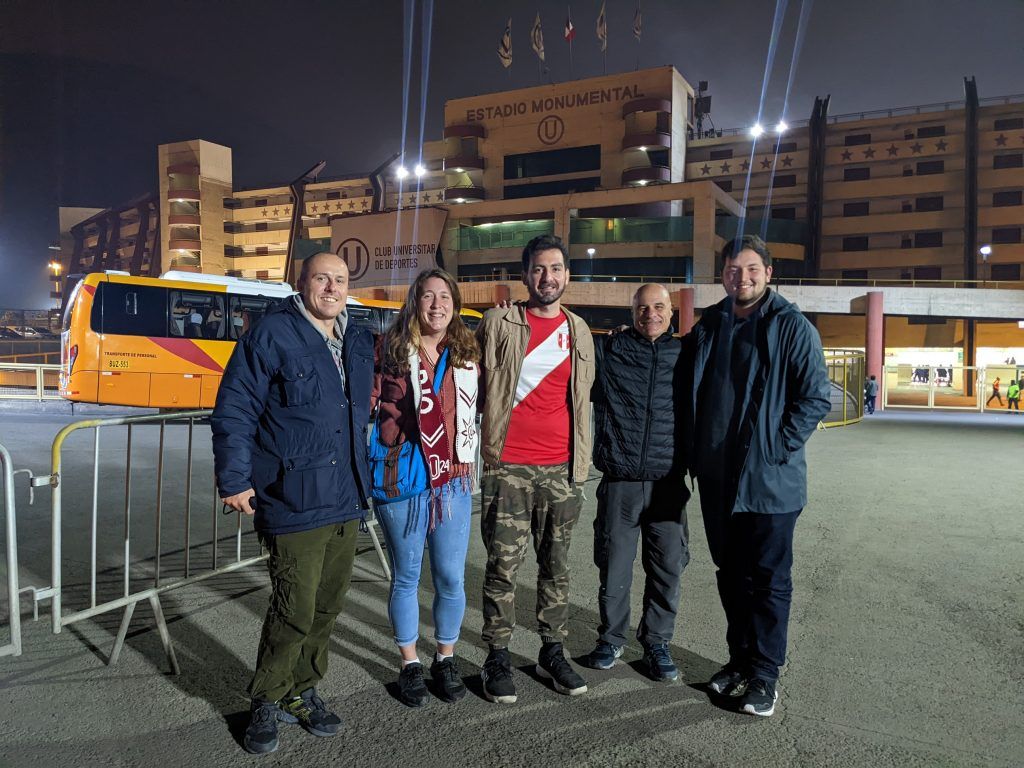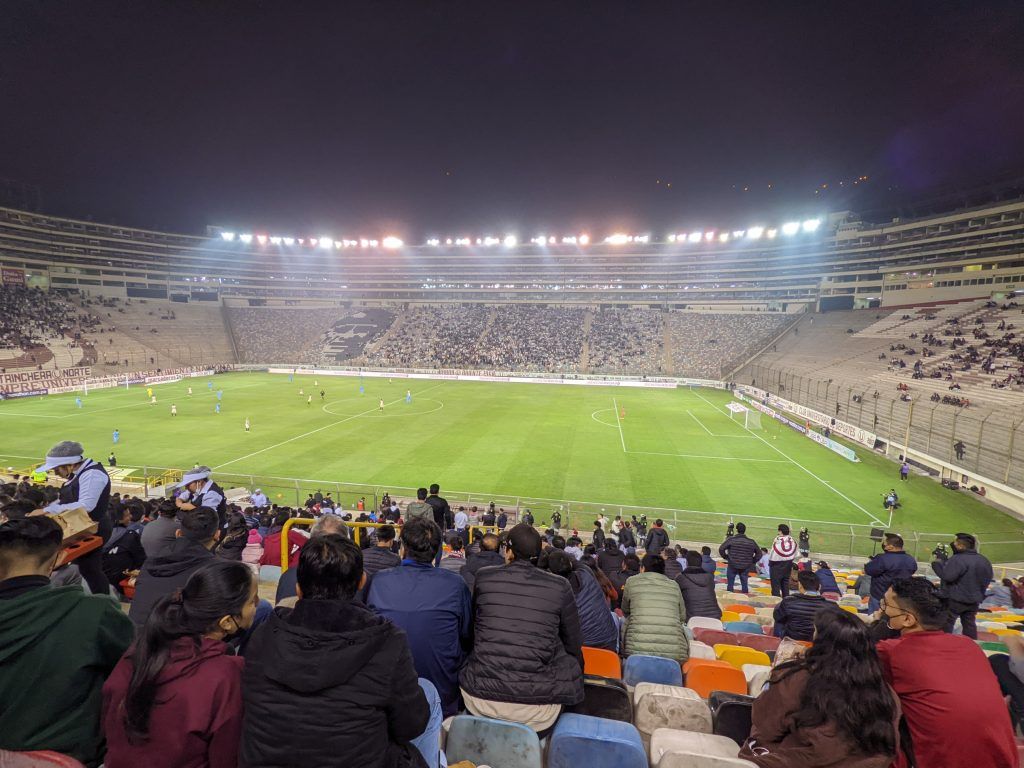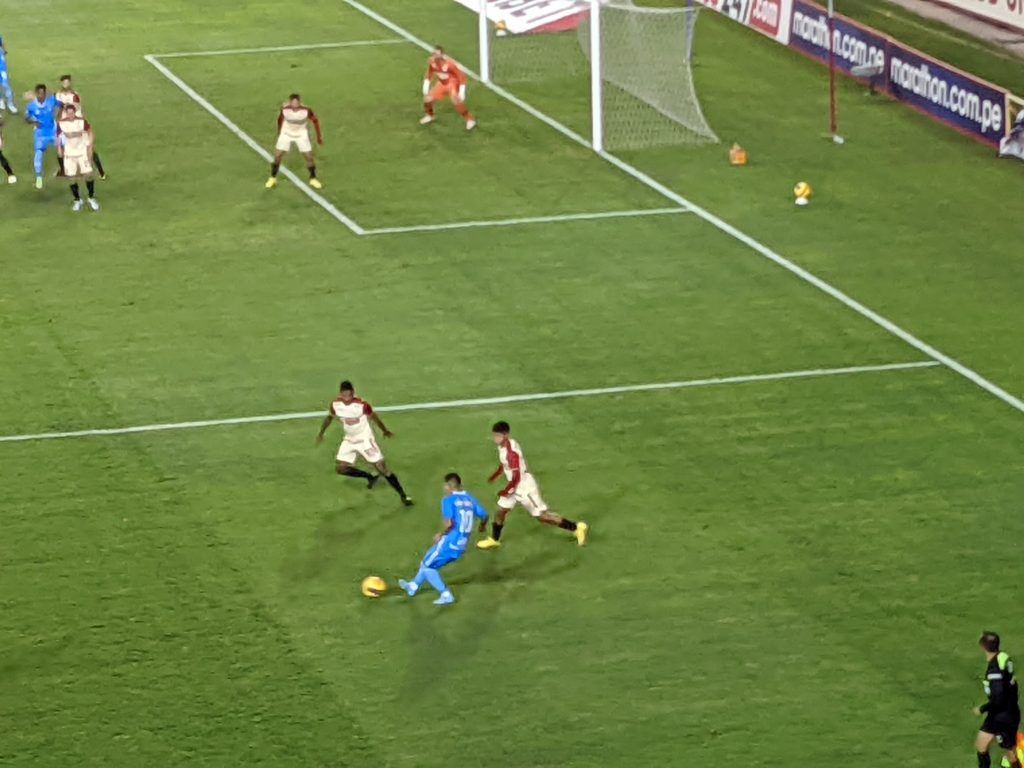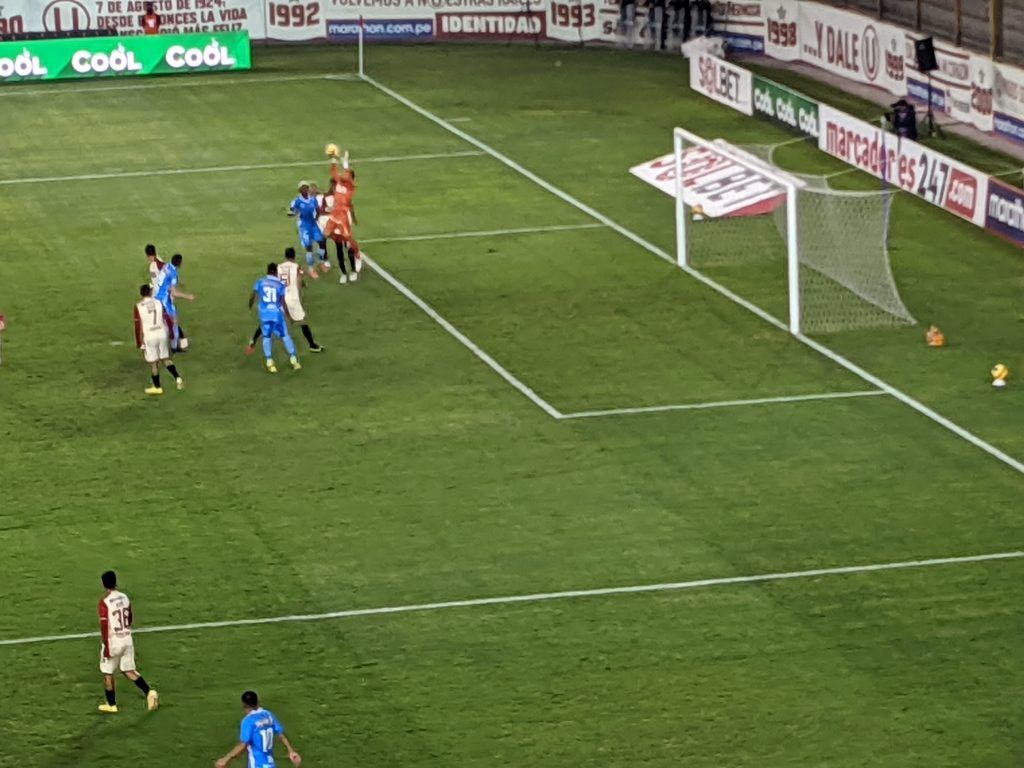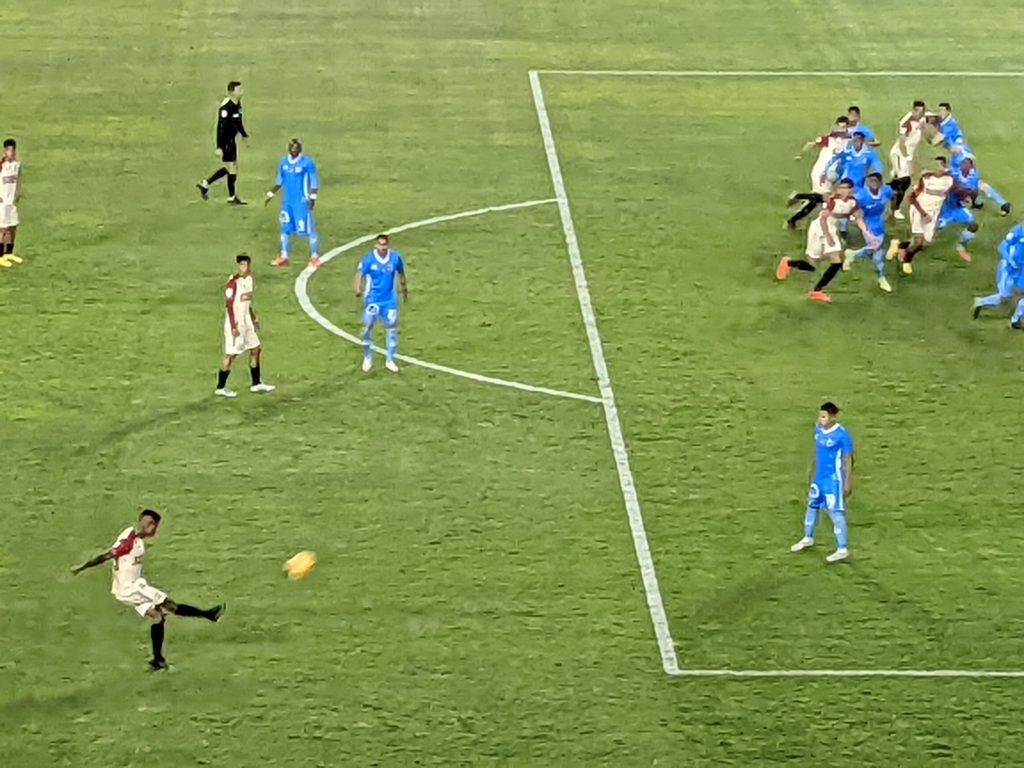Peru is one of the most biologically and climatically diverse countries in the world. That is also reflected in Lima’s culinary scene; it’s now considered one of the best restaurant destinations in the world. Four of Lima’s top restaurants – Central, Maido, Mayta and Astrid y Gaston – have all made the list of the world’s top 50 restaurants at one time over the past few years. These restaurants’ famous tasting menus were all booked well before I arrived. But there were a plethora of other food experiences available and I took advantage of many of them while I was there.
Lima itself is considered the second driest world capital outside of Cairo. Much of its sprawling 11 million population is located in sandy, brown concrete and brick block buildings. But then there are the two jewels of Lima: the large district of Miraflores and the smaller Barranco. Think of Miraflores as like Santa Monica and Barranco as like Venice in in Southern California. But much cleaner and more livable. Miraflores is full of luxurious apartments and condos, has high end shops, and a beautiful coastal view. Barranco has the eclectic galleries, restaurants, artists and beautiful street murals. I stayed in Miraflores and spent some time in Barranco, and these areas may have been the most livable urban settings I’ve seen so far in Latin America.
I was in a really nice Airbnb apartment in Miraflores.
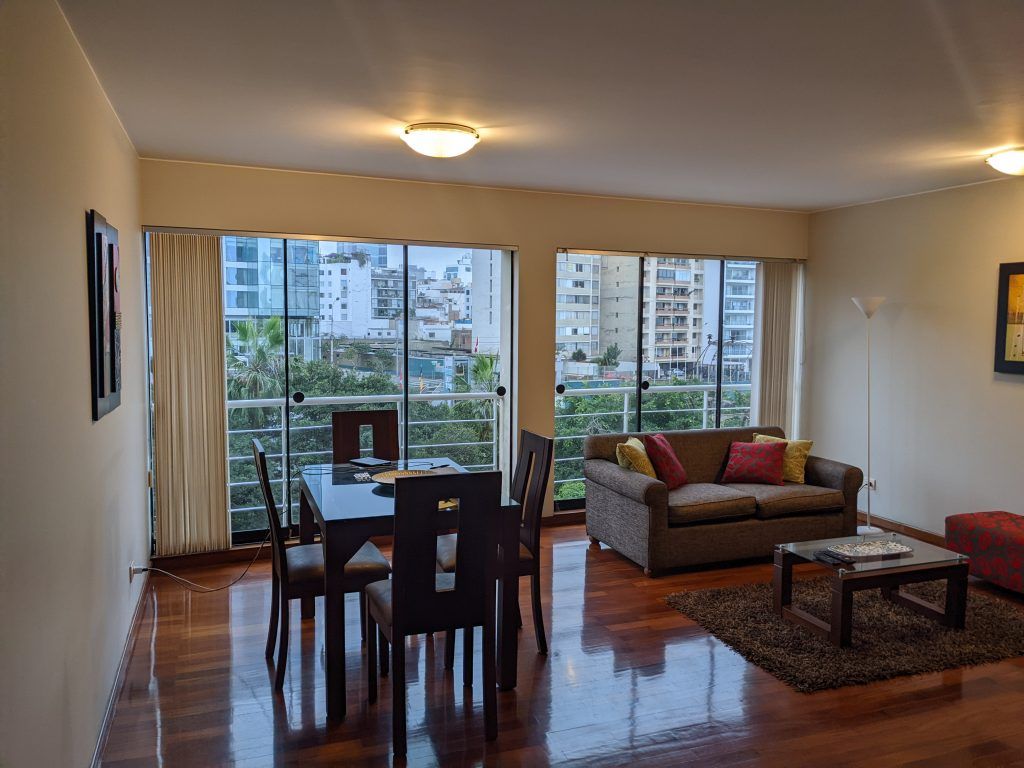
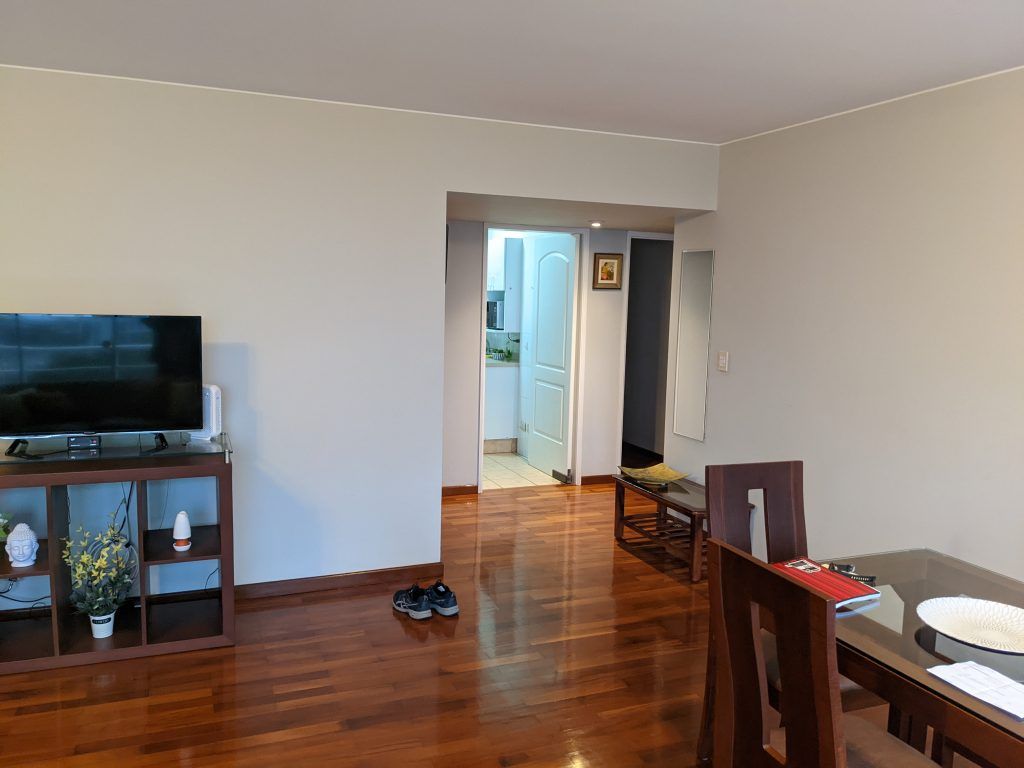
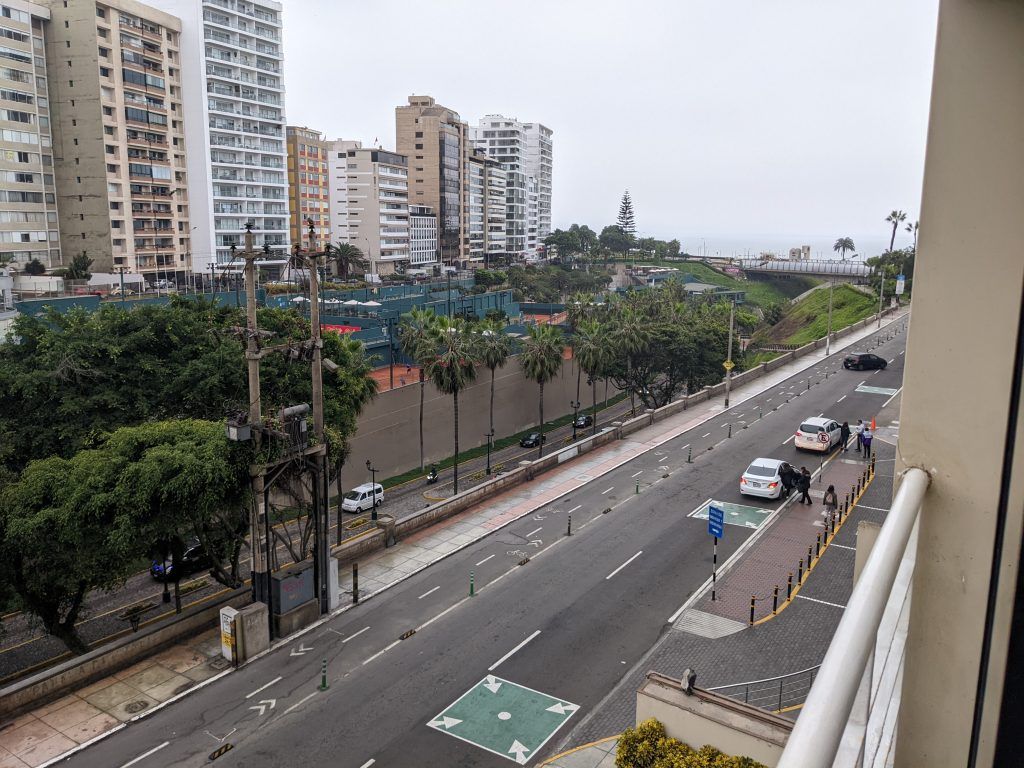
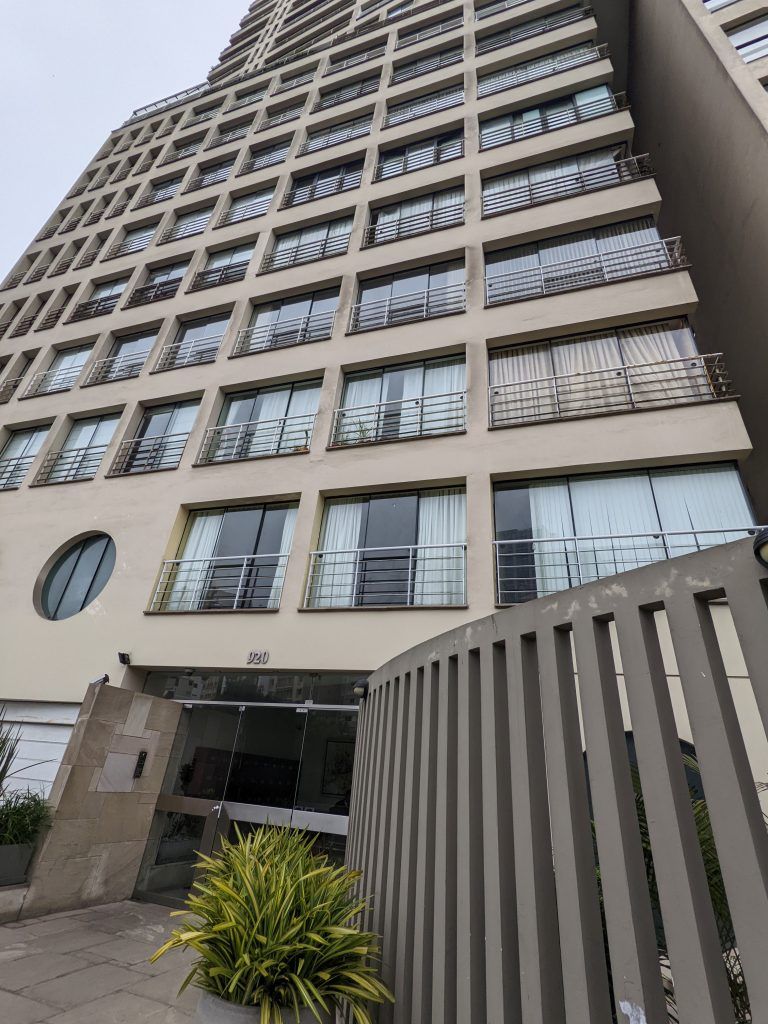
Miraflores
Miraflores is one of the largest districts in Lima and it is a really nice place to be based and to wander around in.
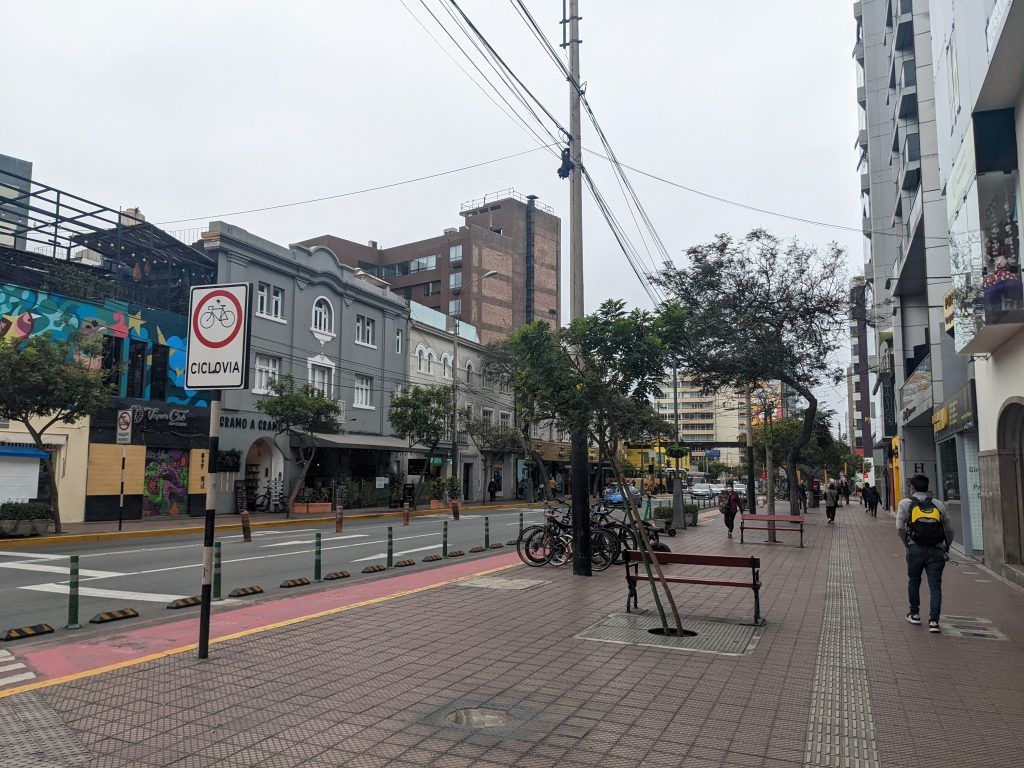
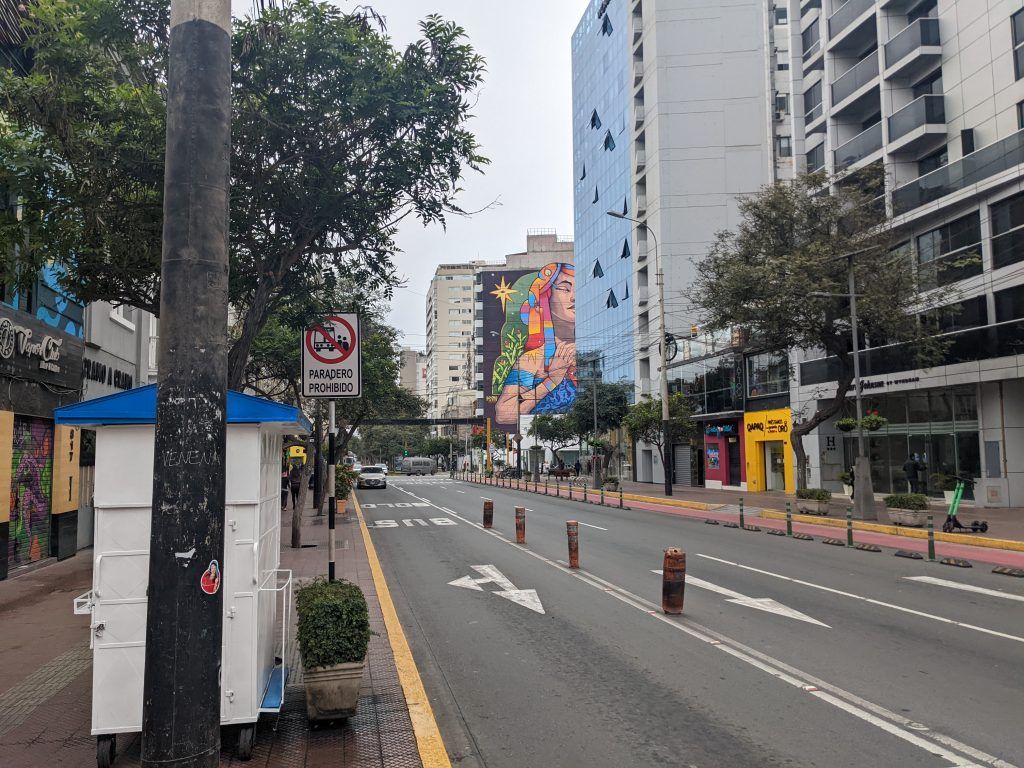
This section of Miraflores along the coast really does feel a bit like looking at Pacific Coast Highway in Santa Monica.
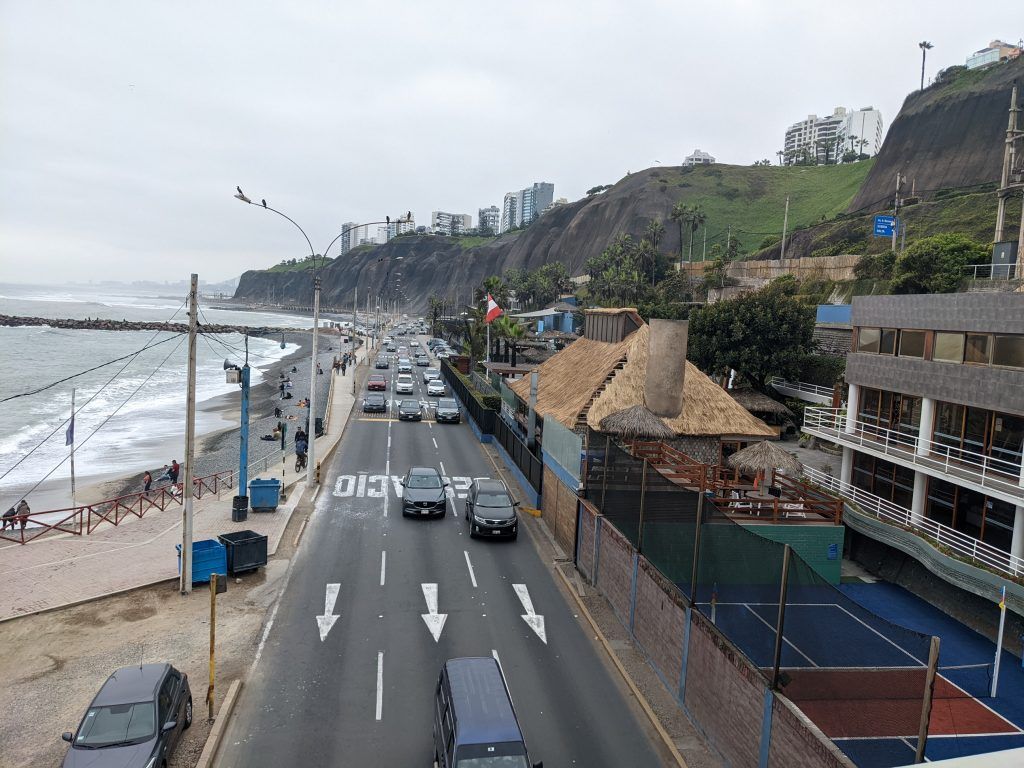
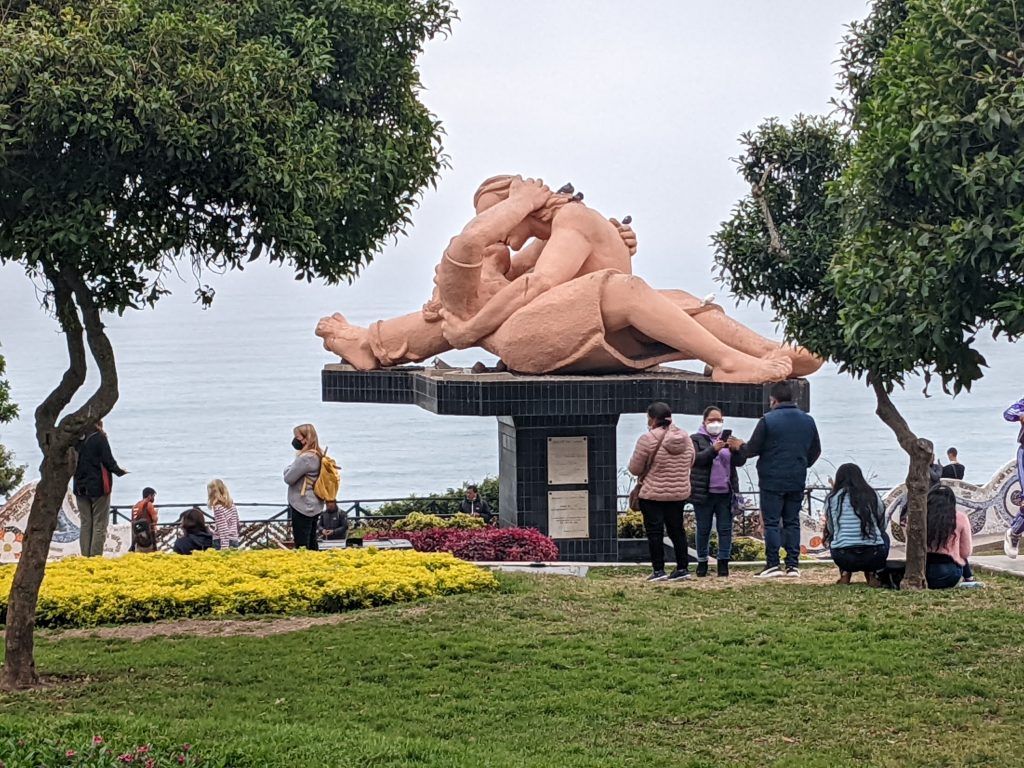
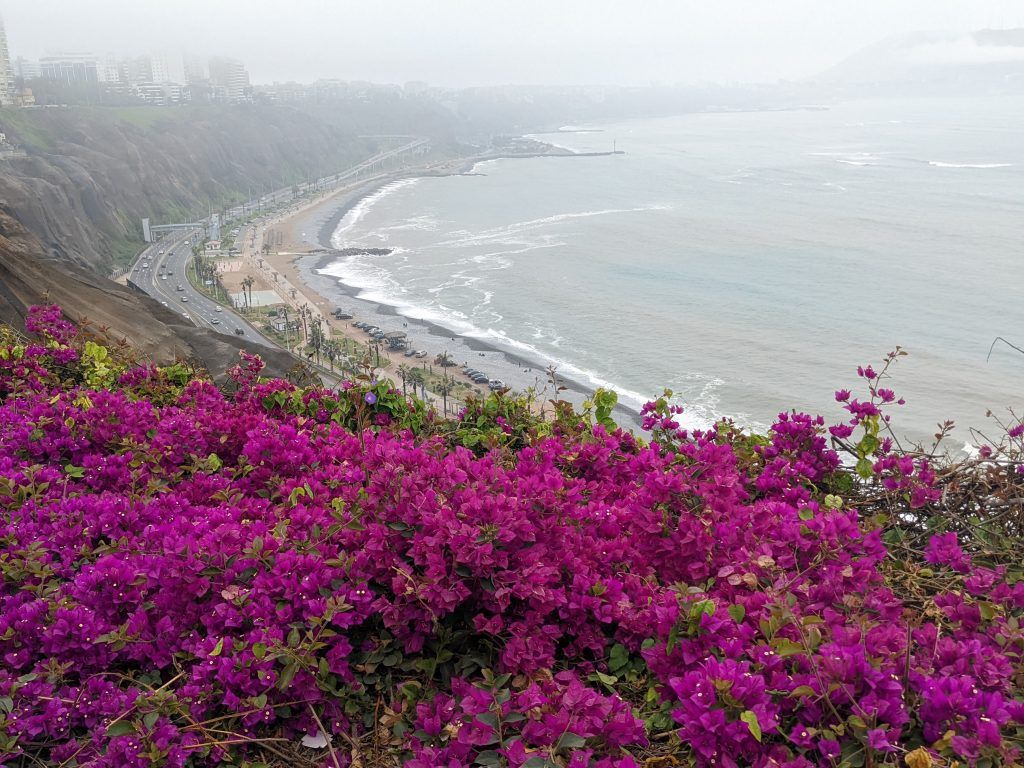
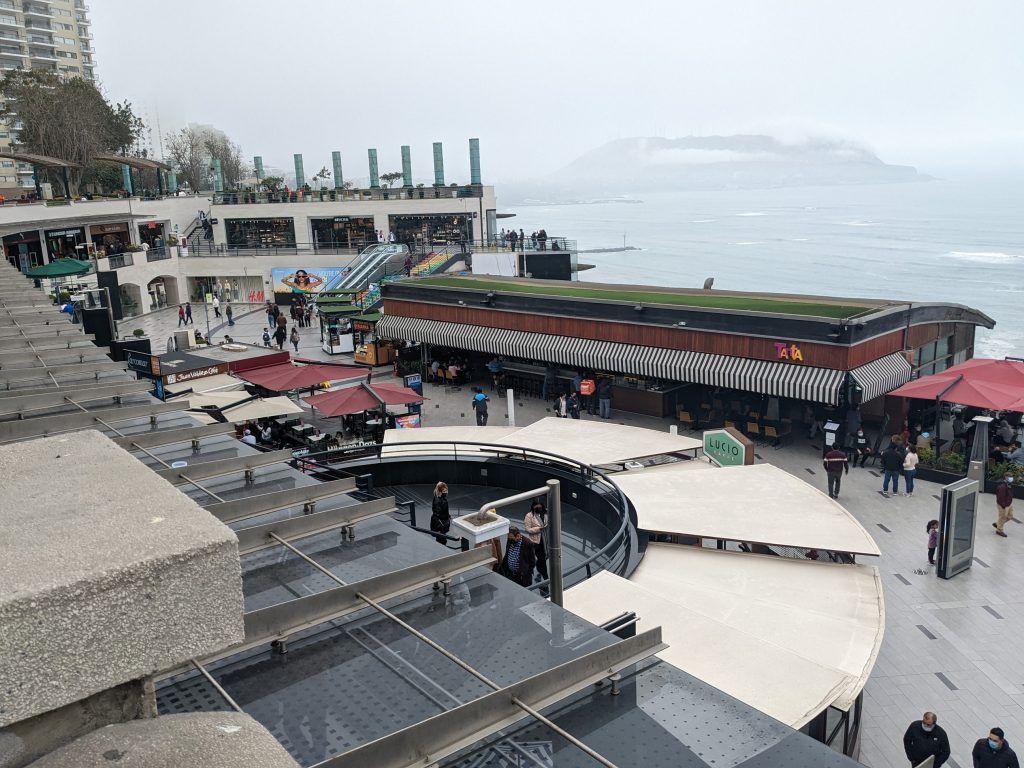
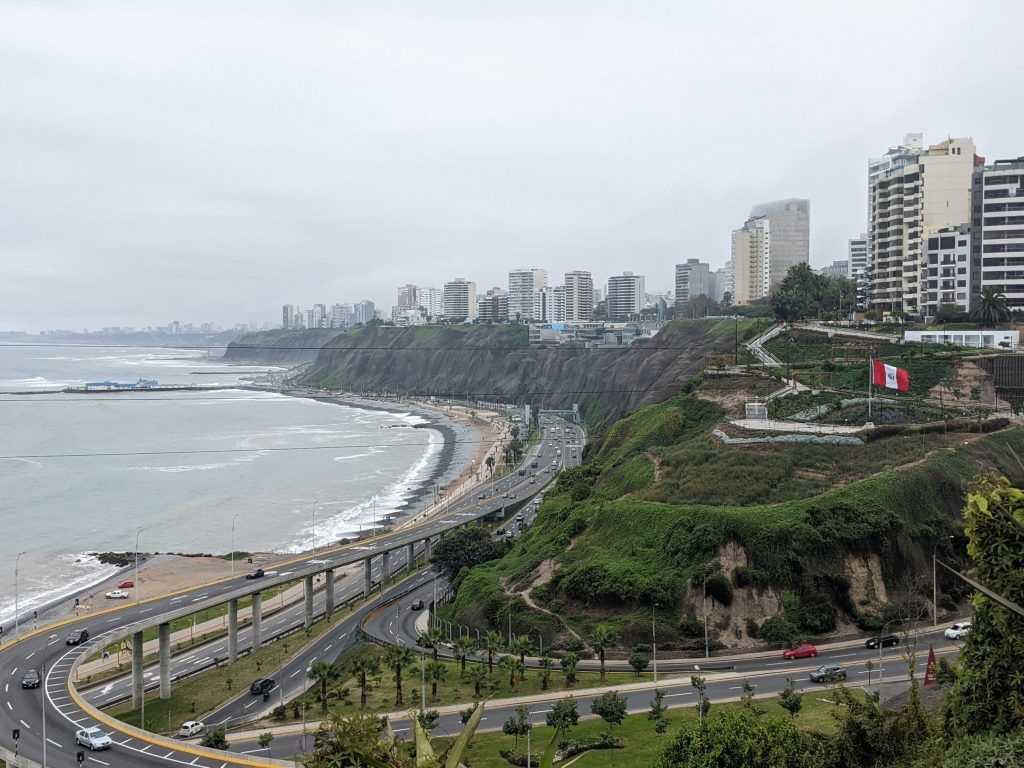
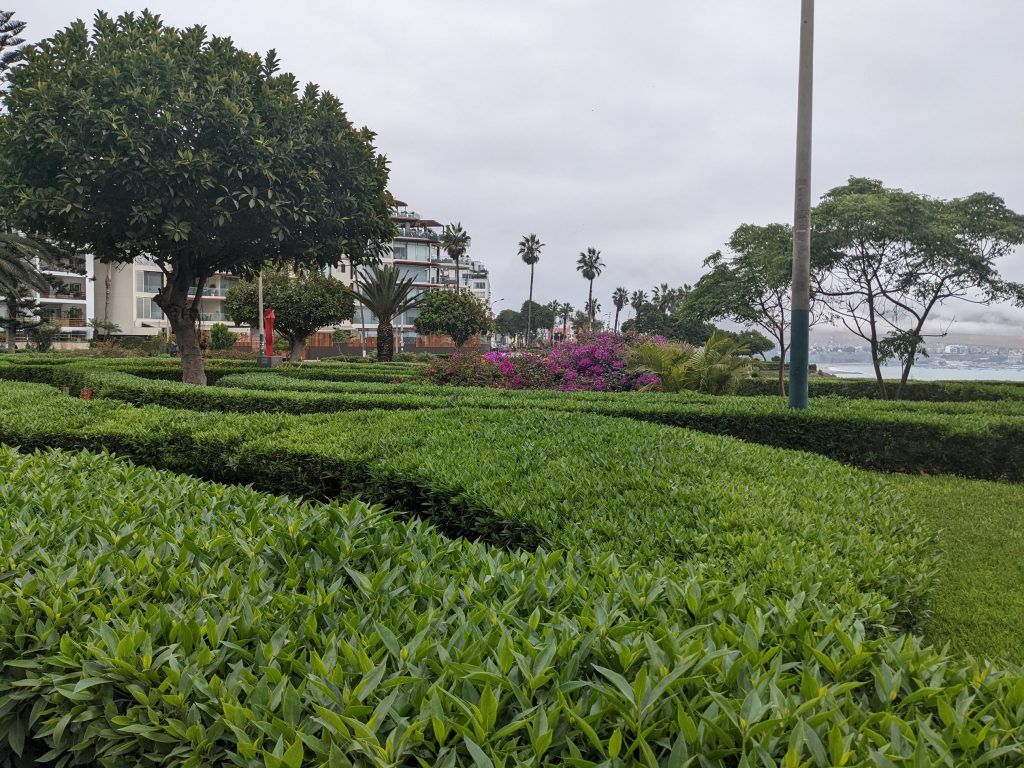
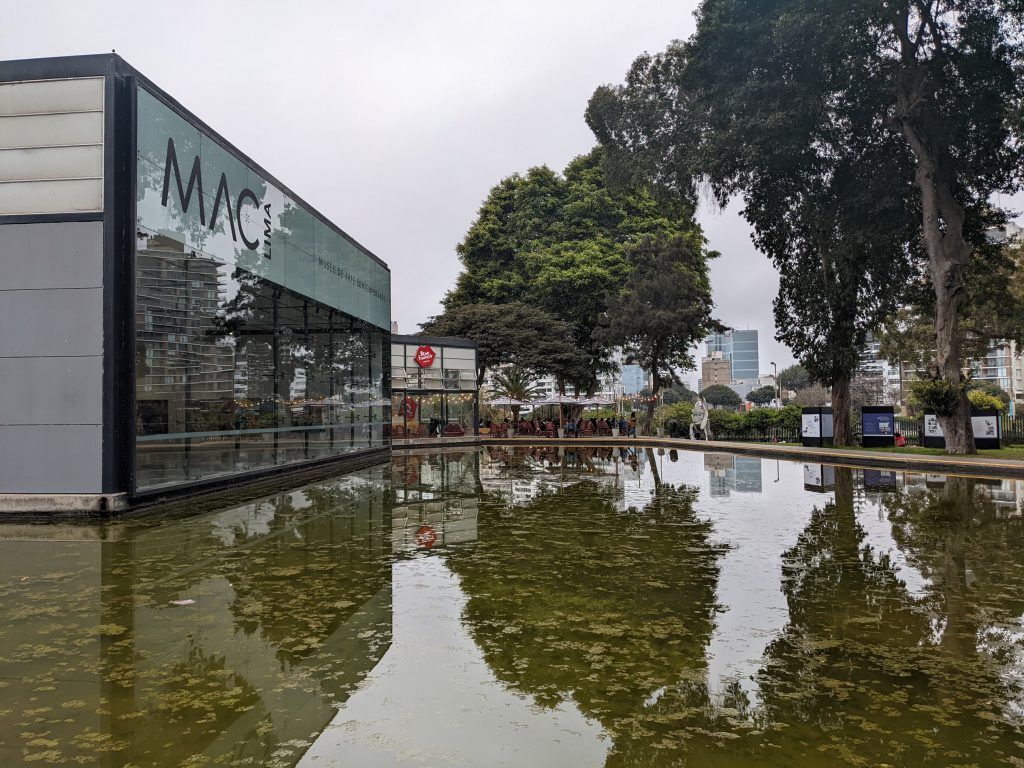
There’s definitely surfing in Miraflores, but it was really cold when I was there in the South American winter. There were no surf shops on the beach, just some schools pulled up with their vans renting out boards, wetsuits and giving lessons. There’s also really no beach in the area; just some small, smooth rocks and then the water.
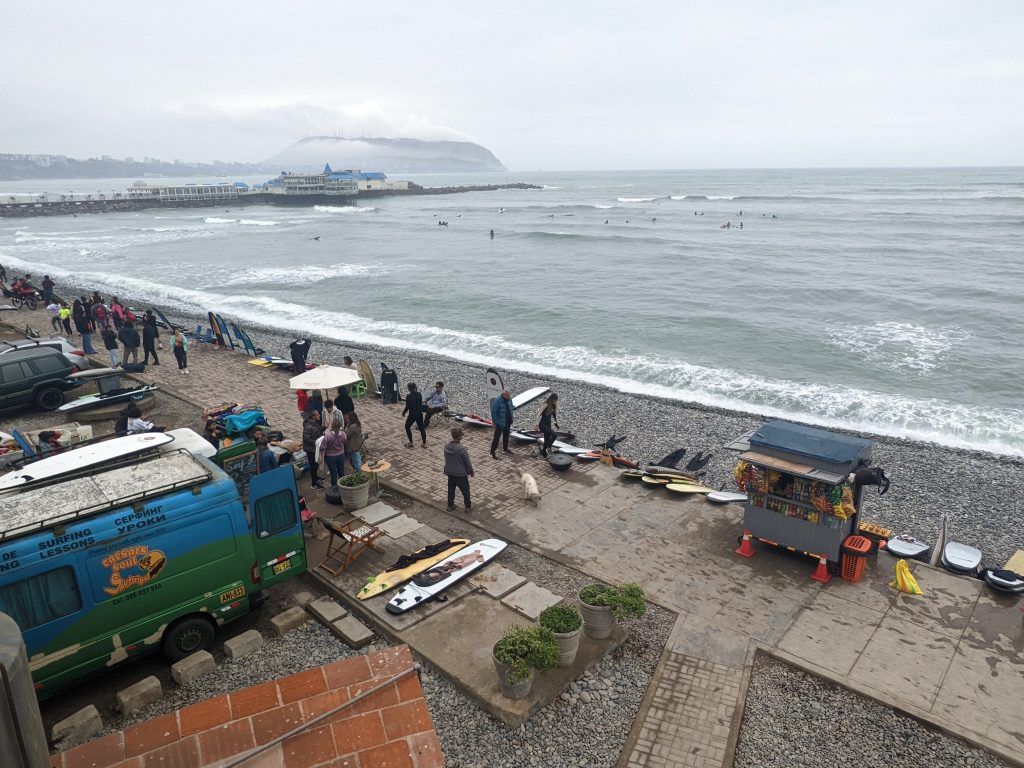
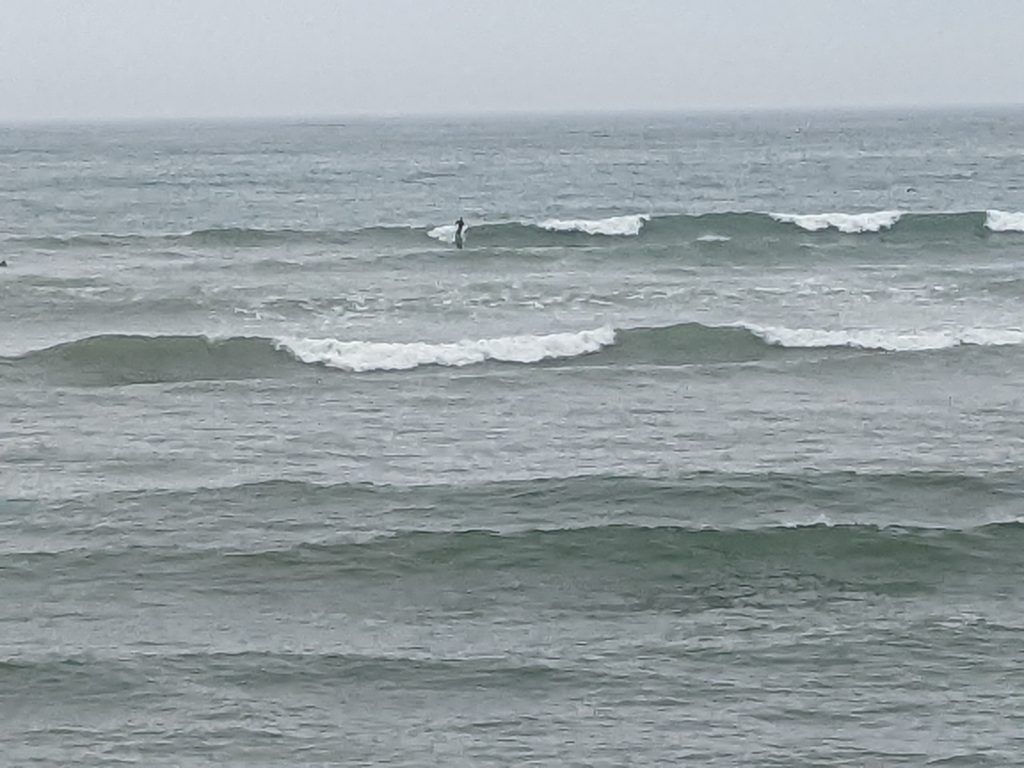
Food Tour in Barranco
I had a chance to participate in a wonderful food tour in the small, eclectic district of Barranco with 9 other people from Canada, England, Holland and Switzerland. It started with a sampling of local flavors in a small store.
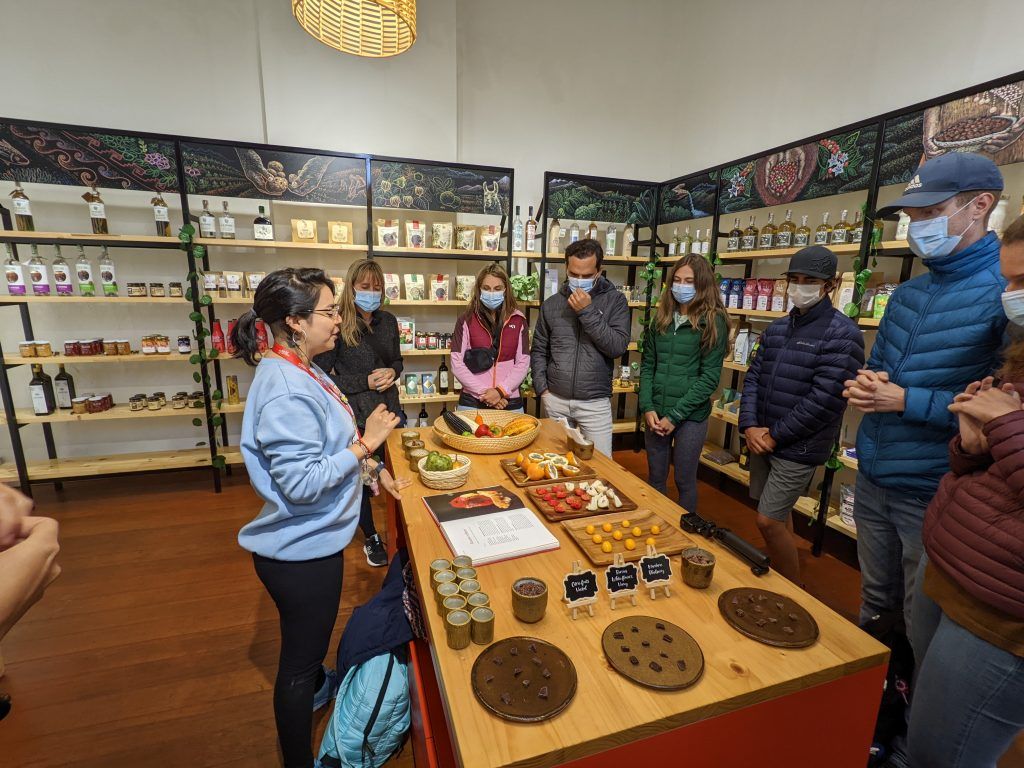
We then moved to some tables and benches at a restaurant on this street where we had a melt-in-your-mouth chicken and onion empanada and an incredibly smooth cup of organic coffee.
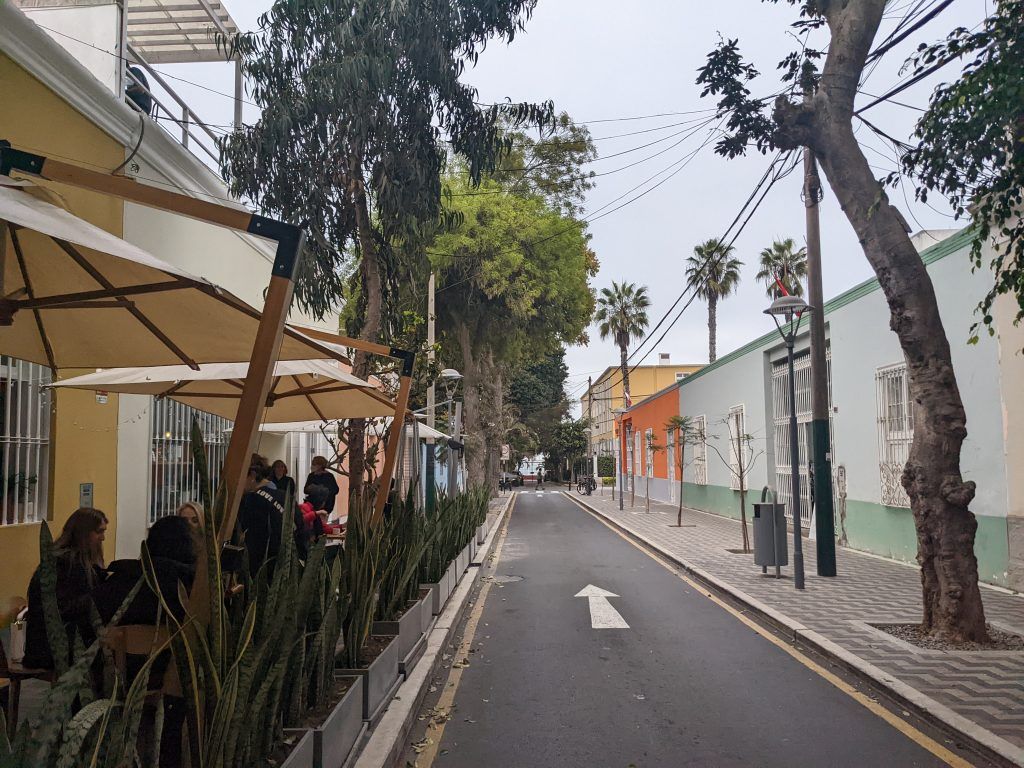
Next it was walking throught some local neighborhoods…
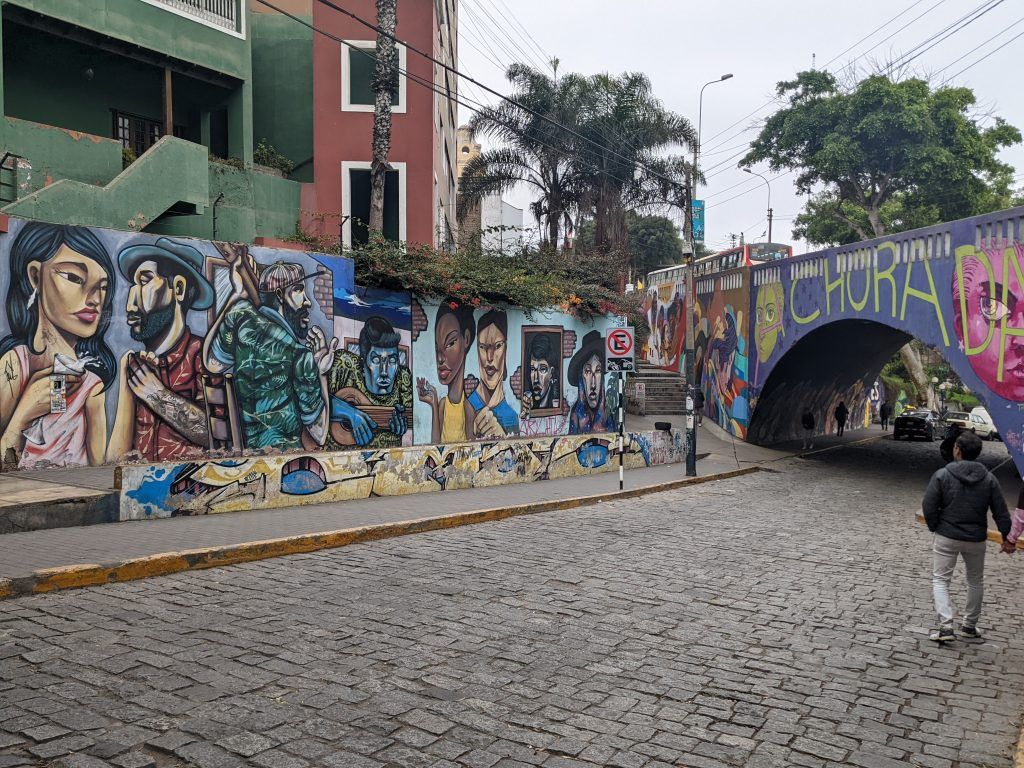
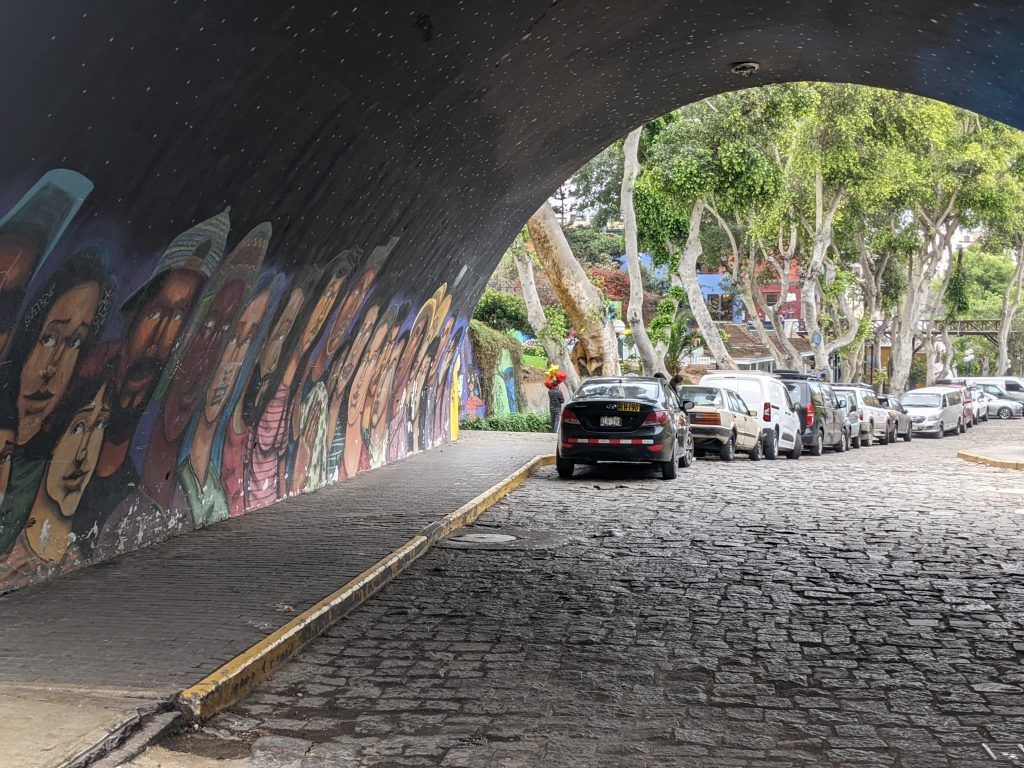
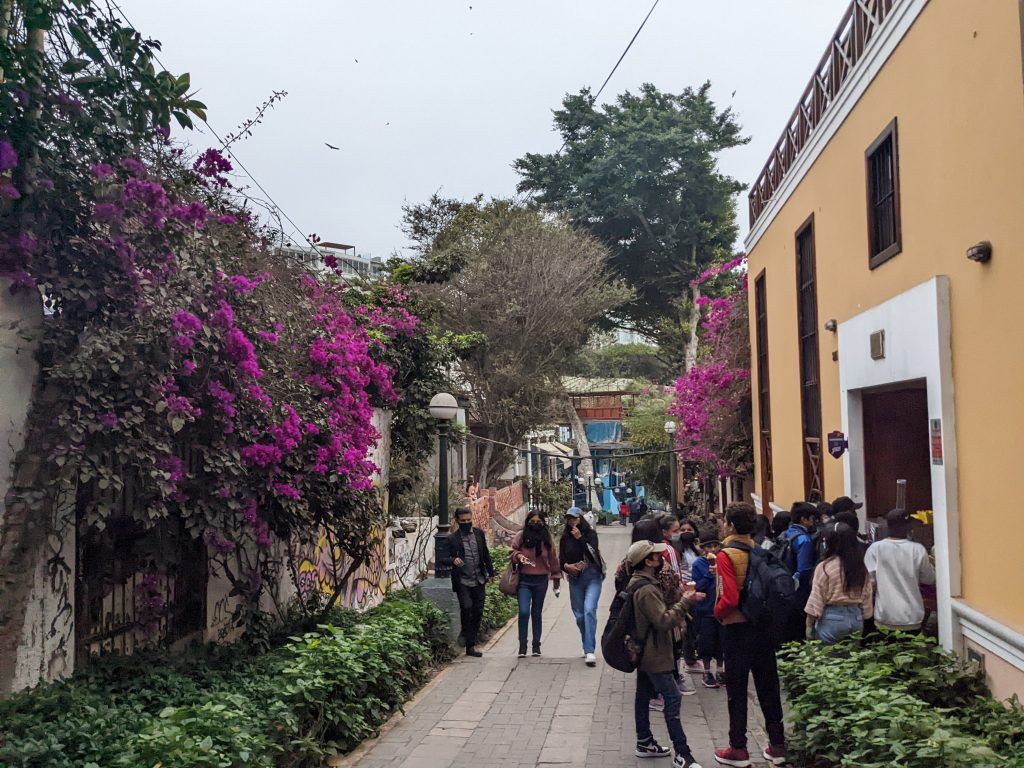
…including this bridge where the tradition is to make a wish and then walk across it while holding your breath.
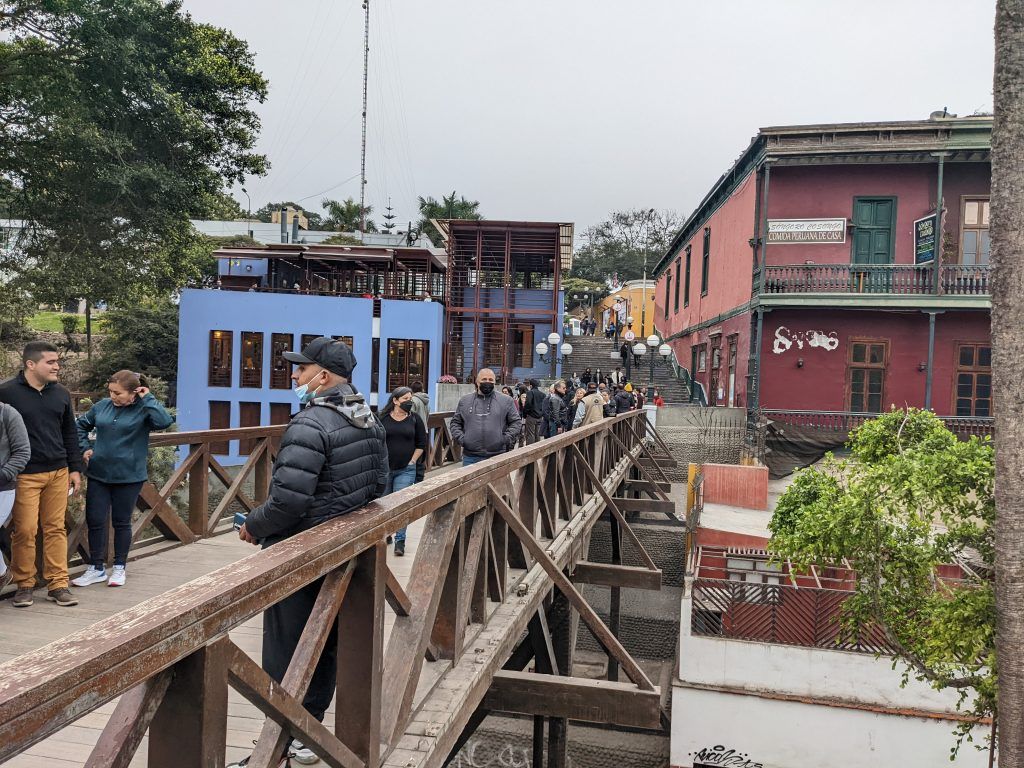
And then a visit to a local artist whose street art has been displayed all over the world.
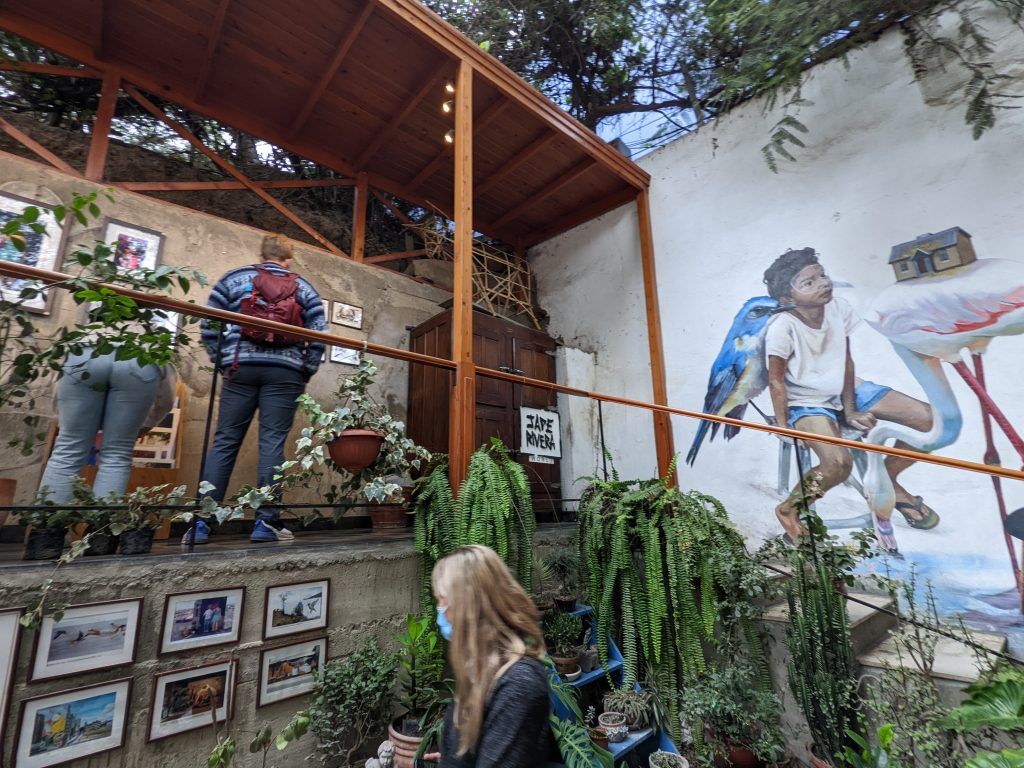
Our main course was at this cliffside restaurant where we had a chifa dish of lomo saltado, which is sauteed beef with rice and fries. Chifa is a type of famous Peruvian cuisine influenced by the many Chinese immigrants to Peru.
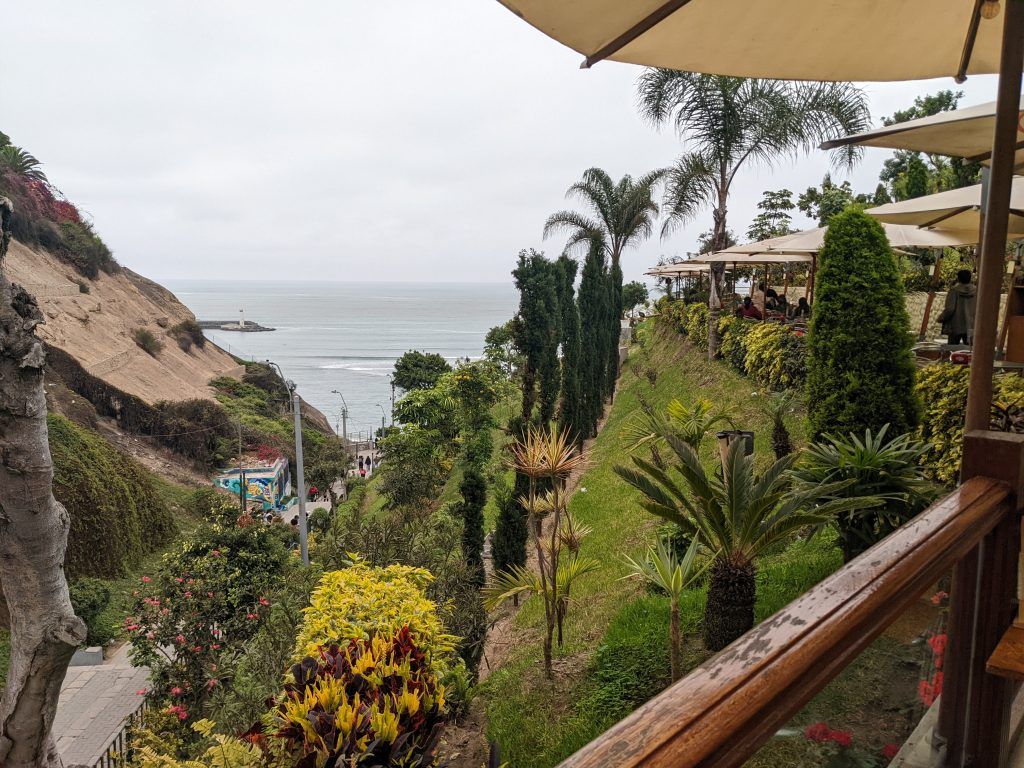
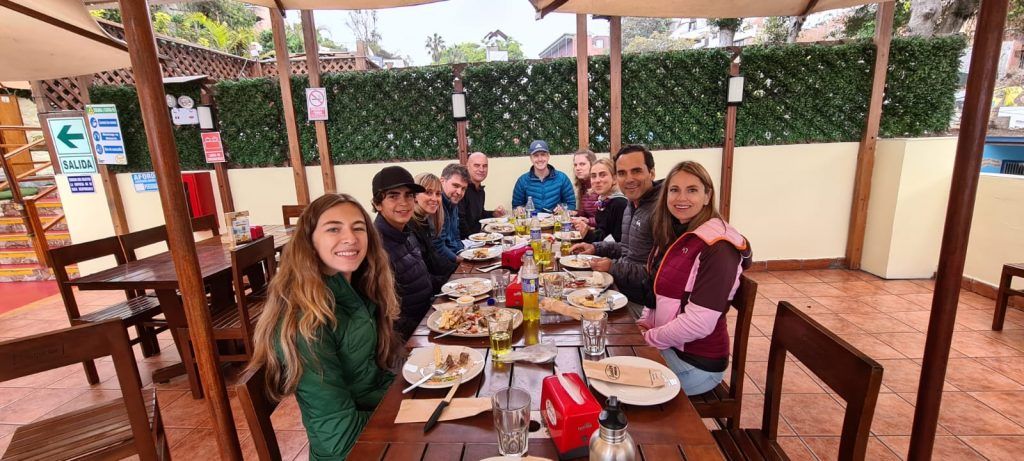
We moved to another restaurant to get a demonstration of how to make, and then happily devour, fresh ceviche.
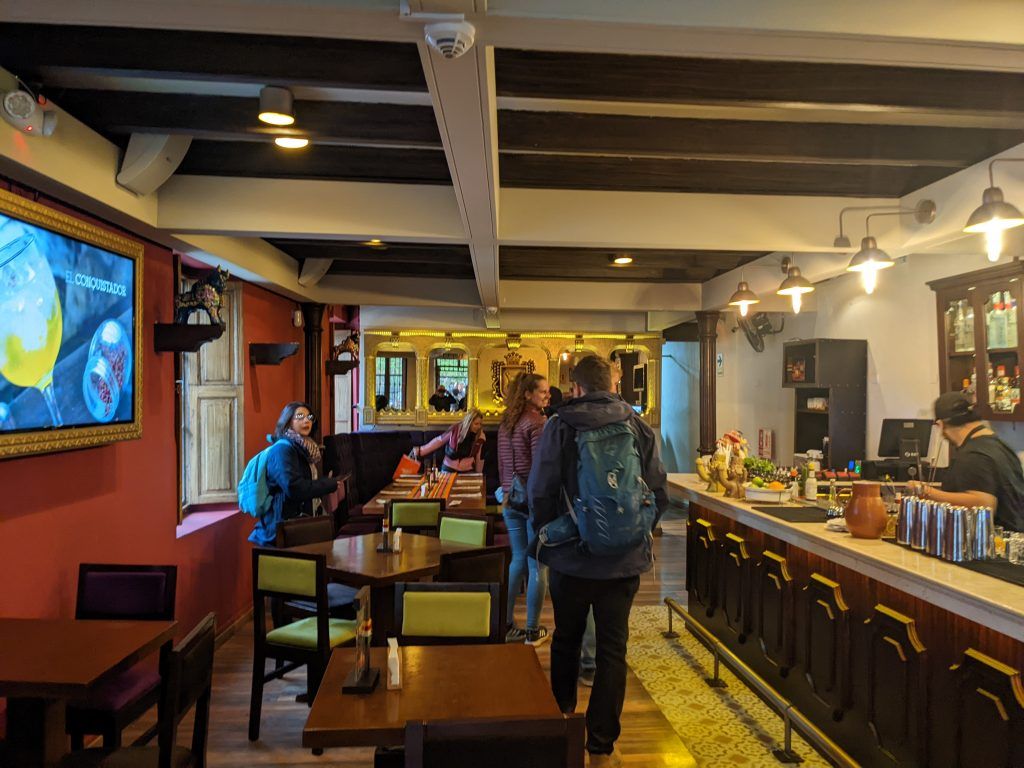
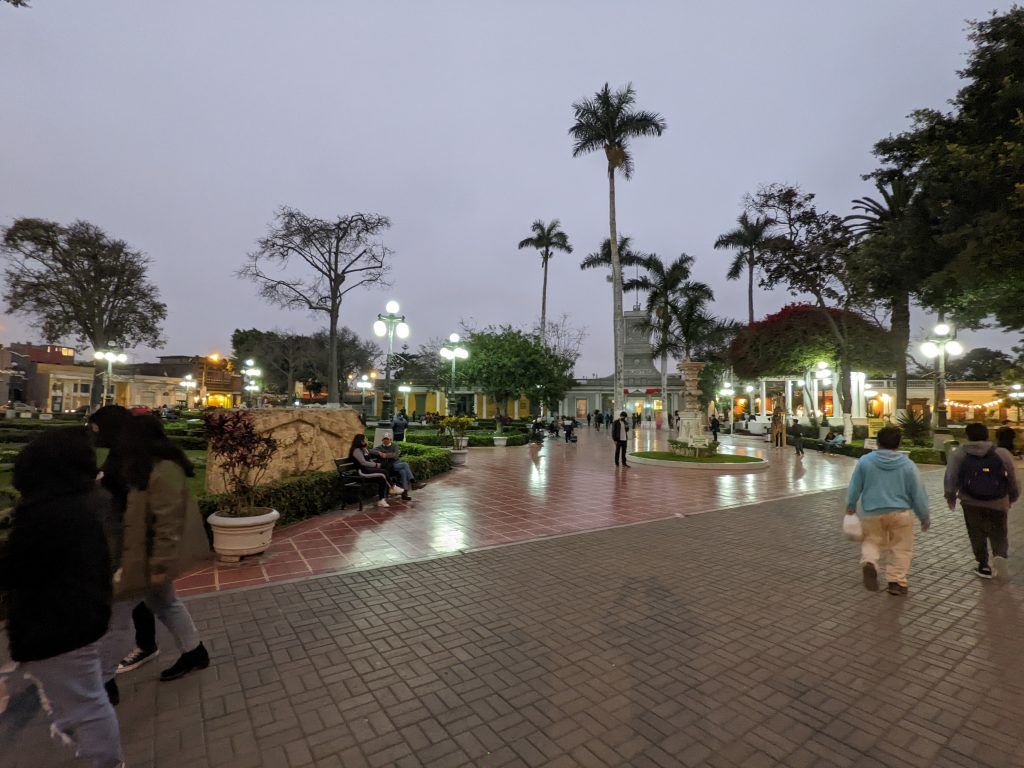
We headed over to Juanitos to sample what many consider to be the best pisco sour in Lima. Juanitos was founded in 1937 by the grandfather, Juanito, then taken over by the father, Juan, and is now run by the son, also Juan. Pisco is a very strong Peruvian brandy made from grapes. The sour comes from mixing 3 parts pisco, 1 part lime juice, 1 part syrup and a dash of Angostura bitters (which forms the smiles below). It’s very strong and very good.
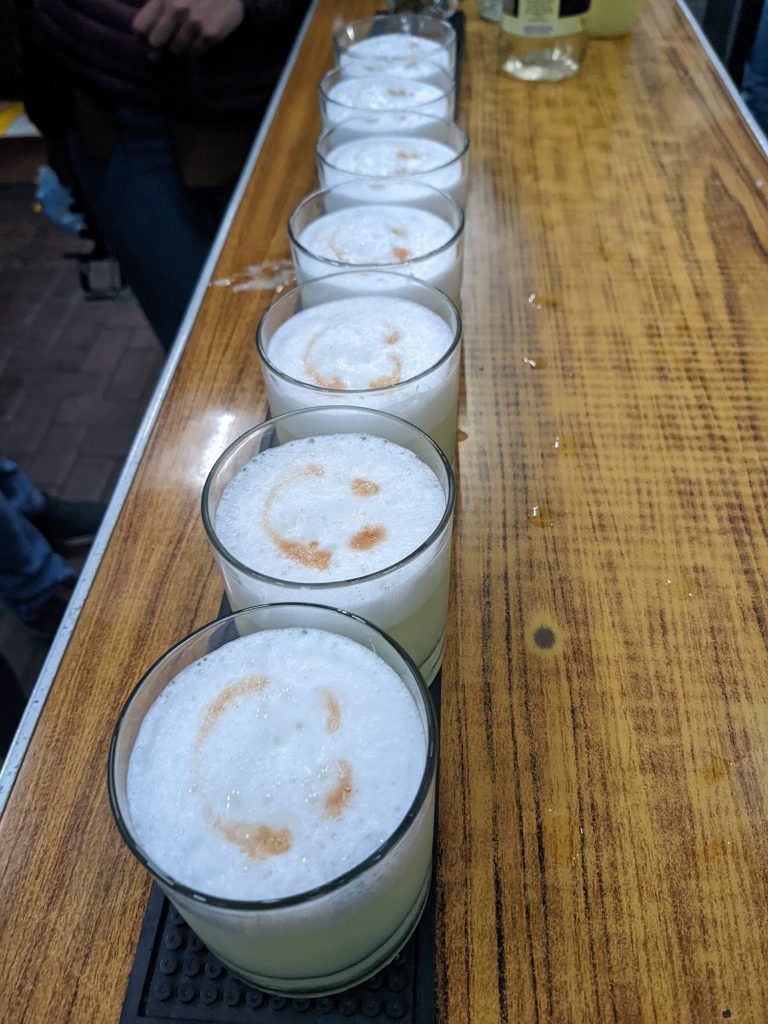
We finished the night with some incredible gelato.
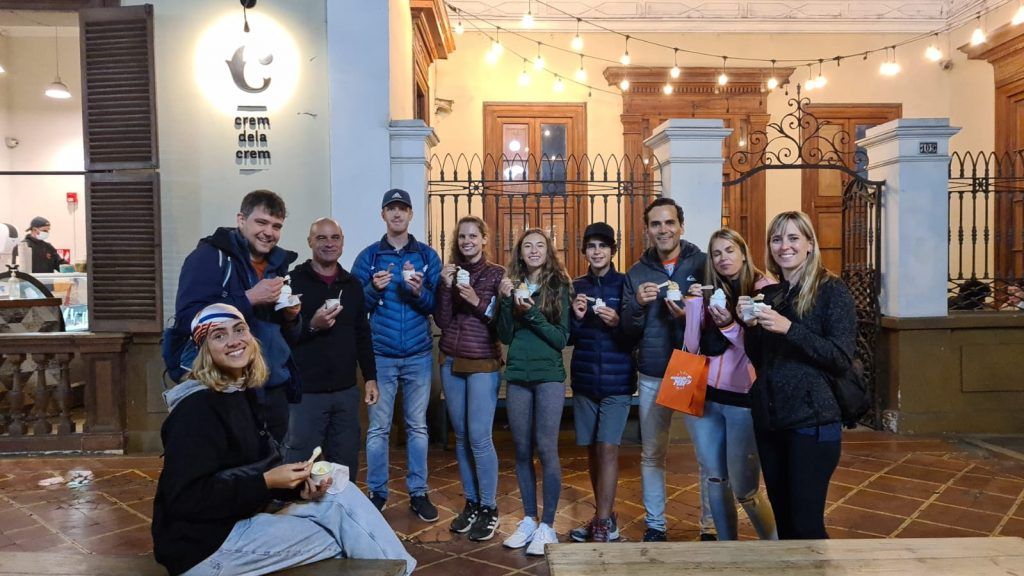
And then a few of us continued on to a bar called Ayahuasca, recommended by our guide.
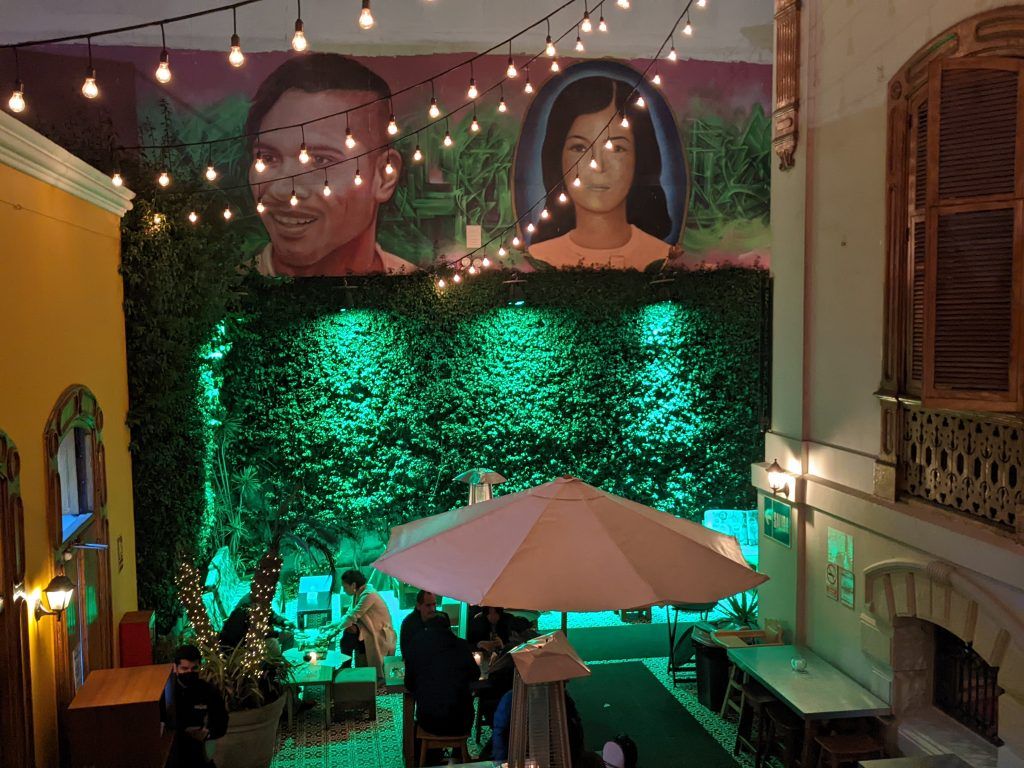
We had a couple more Pisco sours there. They were very good, but we all agreed not quite as good as the ones at Juanitos.
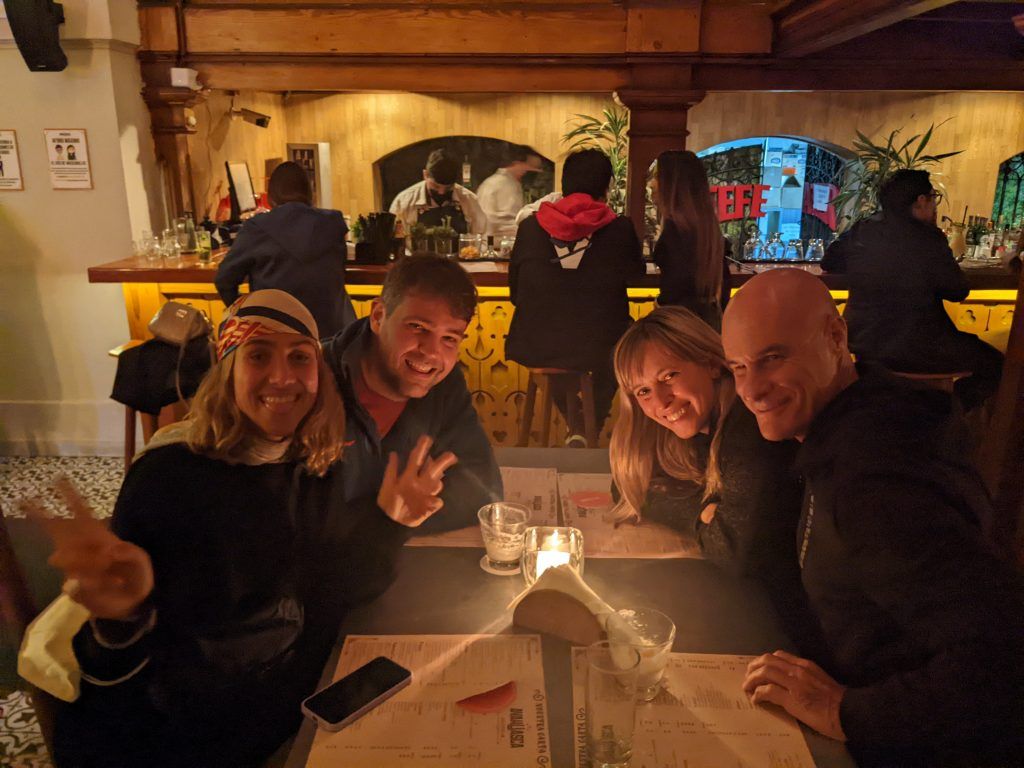
A Peruvian Cooking Class
I had a chance to take a Peruvian cooking class. It was a slow Monday night and I had the whole experience to myself. We first made a wonderful appetizer the the chief created called Causa Limena with a slew of vegetables sandwiched between two sections of yellow potatos. They had me take a picture of the recipe as well.
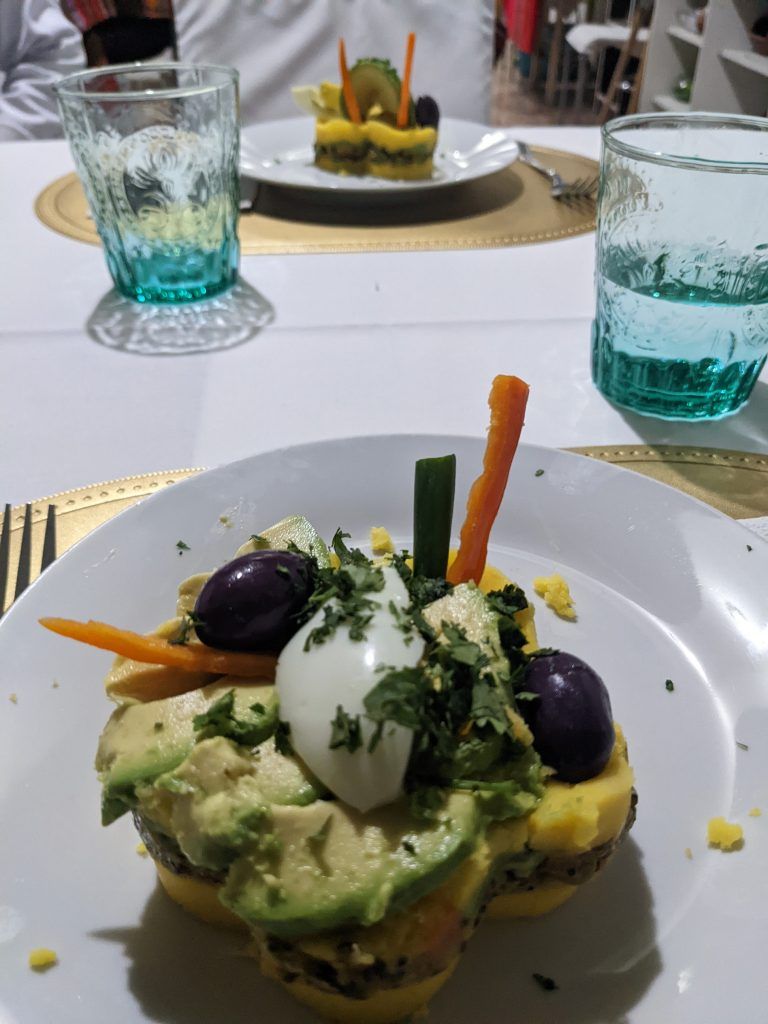
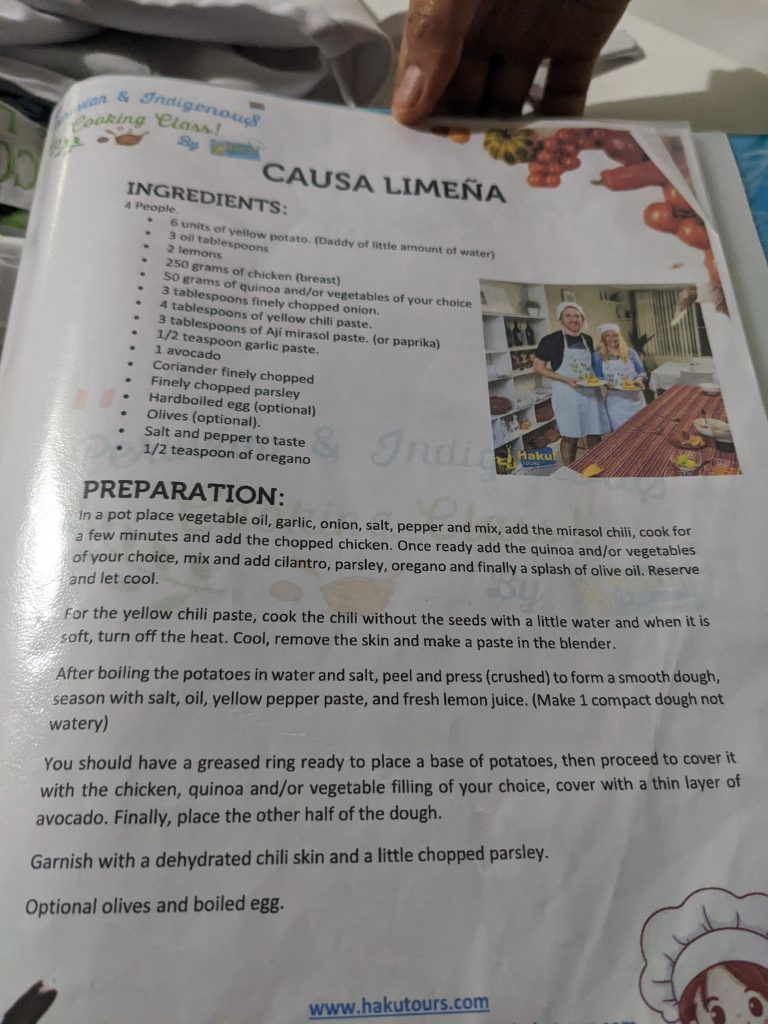
We then got to reenact my chifa dinner from the food tour and actually make the same dish I had that night: Lomo Saltado. Within a couple of minutes of taking this picture we added the beef, seasoning, red wine vinegar and soy sauce to this skillet and then flames shot up about a foot high. It was pretty fun and part of the quick cooking process, but unfortunately it happened too fast to get a picture of it.
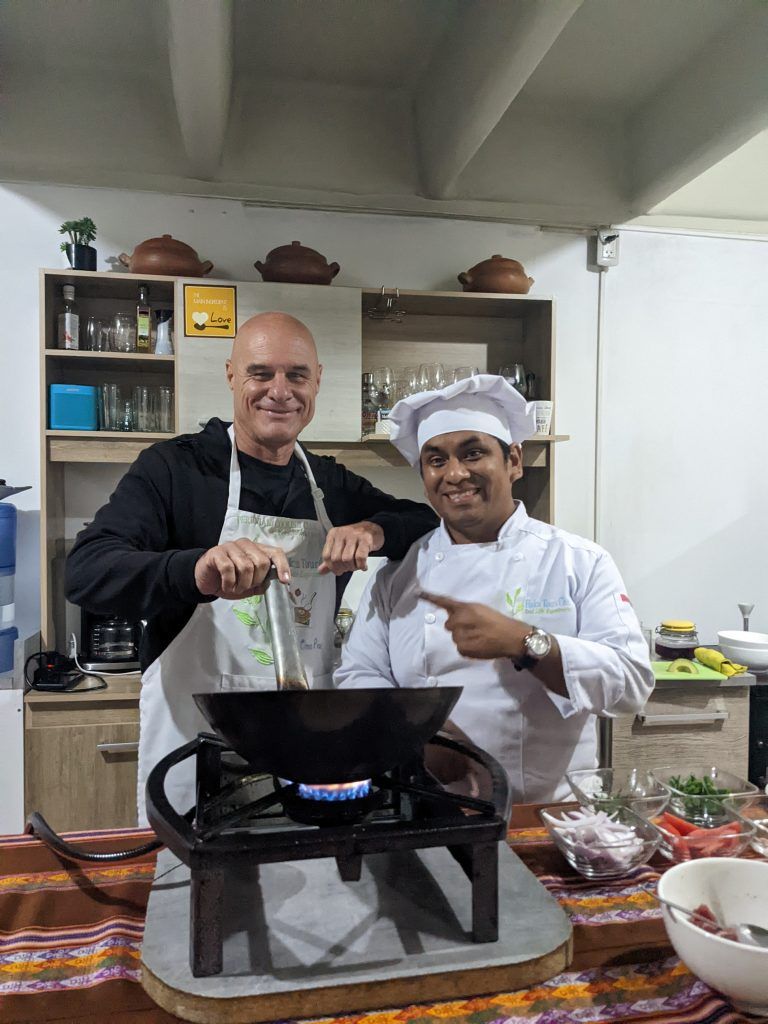
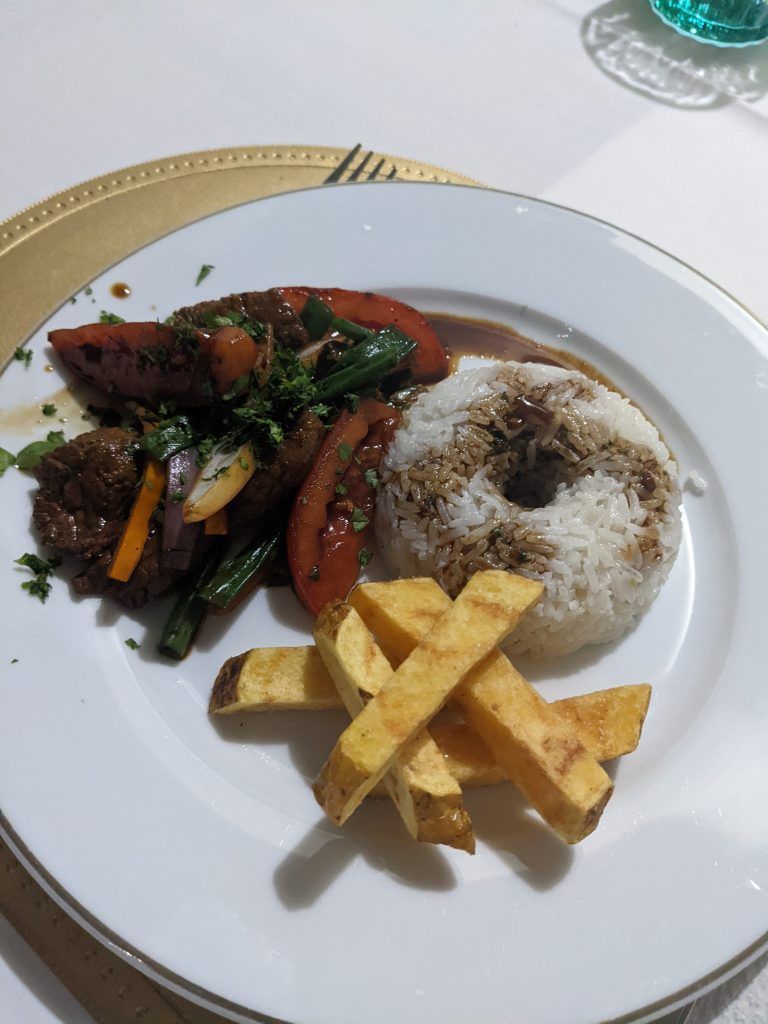
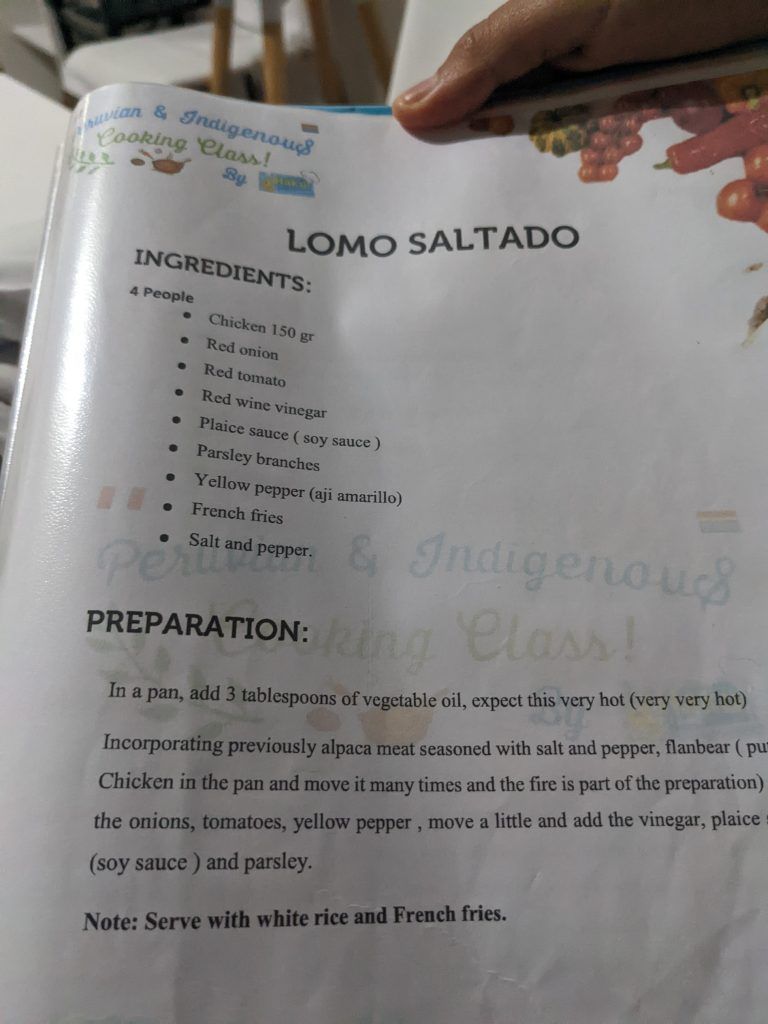
Recommended Restaurants
I asked the guide from the food tour for three really good Miraflores restaurants that were a bit under the radar. She suggested Alfresco, Rafeal and El Bodega. Separately, I asked the chief from the cooking class and he added Shizen and Shimaya Raman. So I decided to try all of them.
The first was Alfresco. It’s a well known local seafood restaurant. I had the Carretiller Ceviche listed on the phone menu below. It was really good, but I think the basic ceviche I had on the food tour was better. However, the appetizer of six clams in olive oil, butter and avocado was incredible.
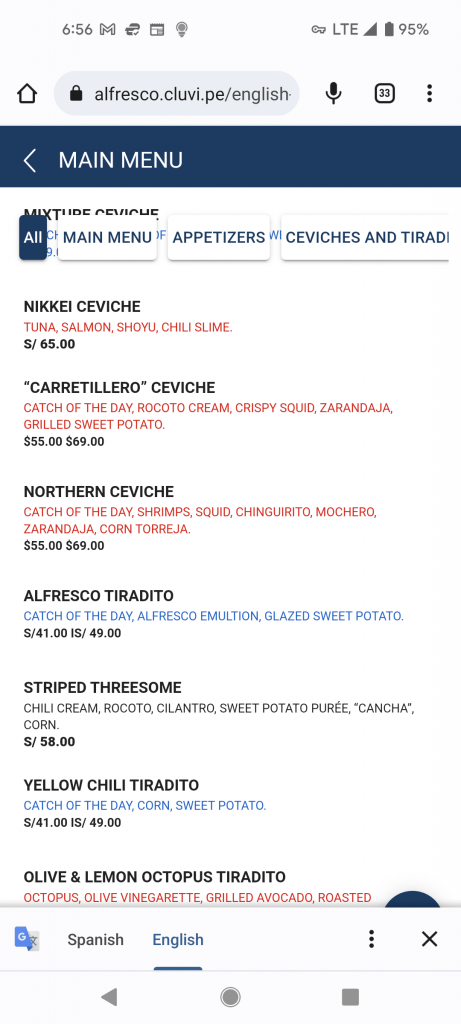
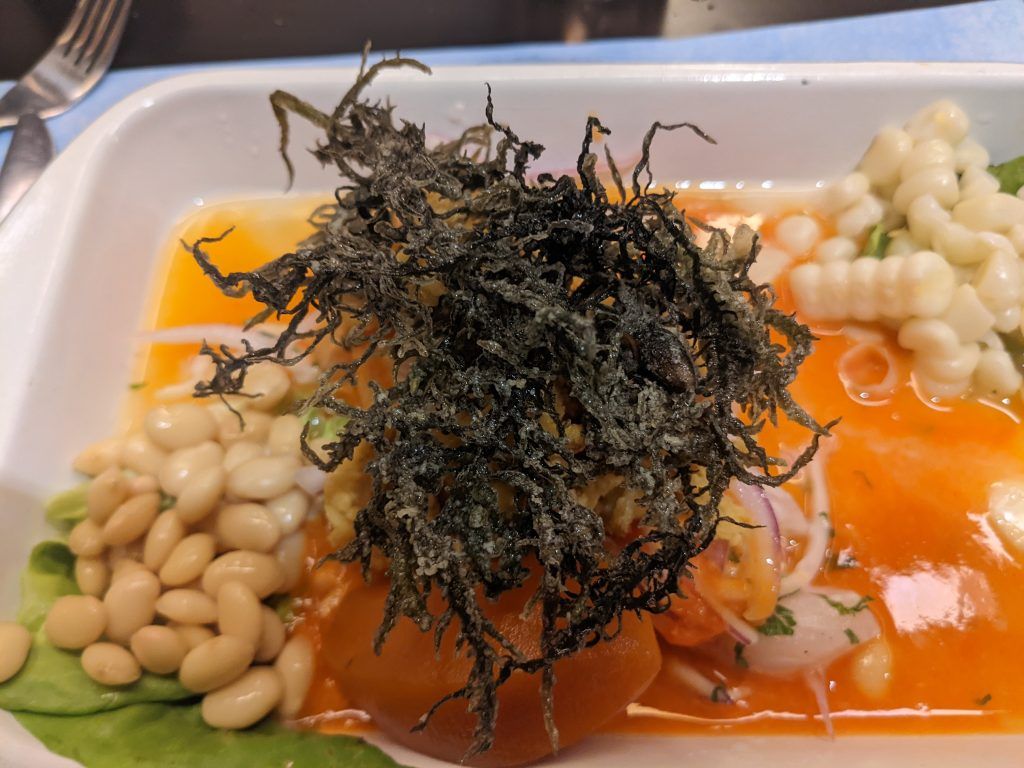
The second was Rafeal. It’s known for mixing up Peruvian, Italian and Japanese flavors. I looked at their listed menu of the day and went with three dense protein rich dishes. The first was beef tongue carpaccio.
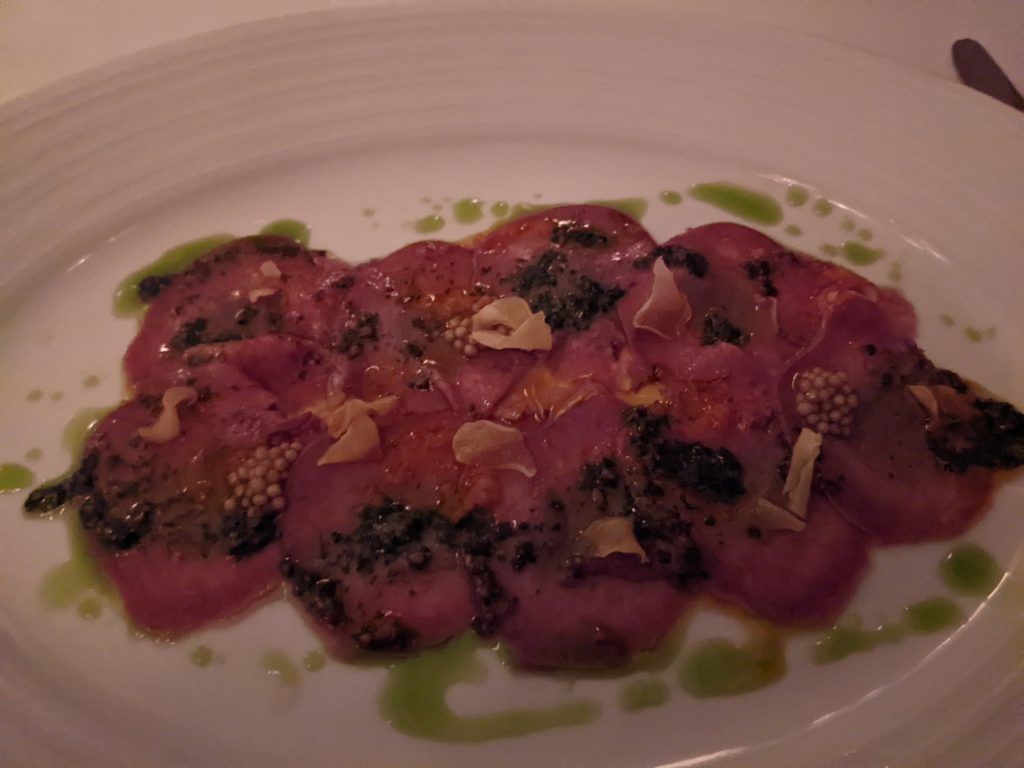
The second was calf brains. Yes, you can judge me as much as you want, but they were the best of the three dishes.
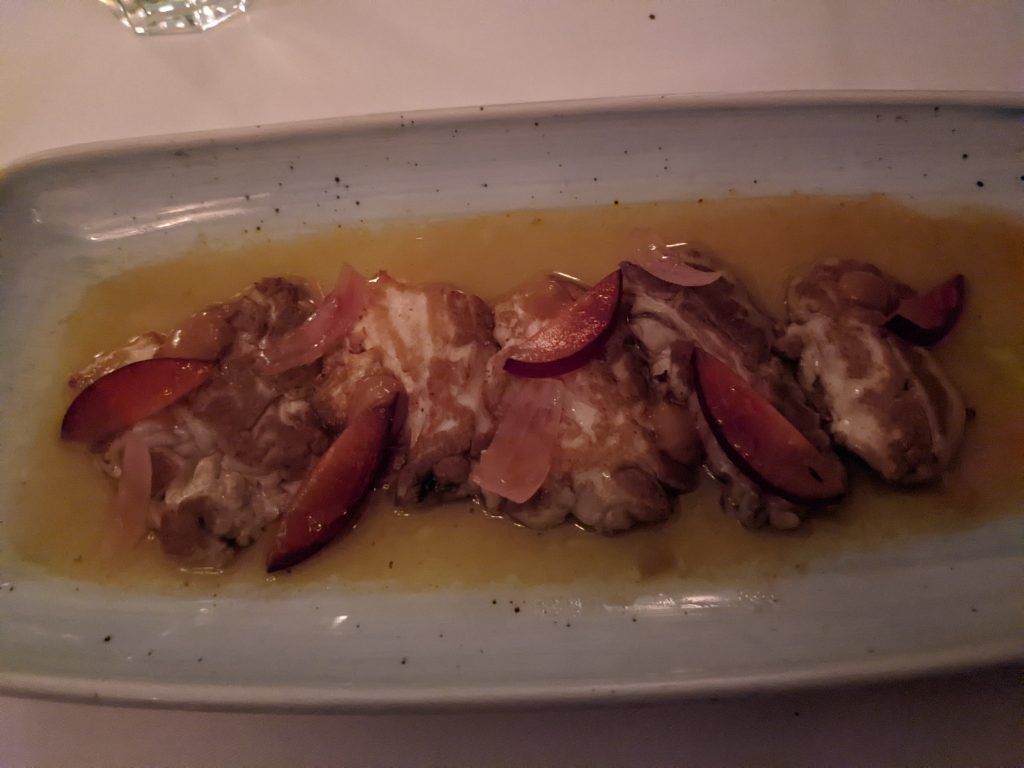
Finally, I ended with a tripe stew. All the dishes were fantastic and had all kinds of flavors I couldn’t recognize.
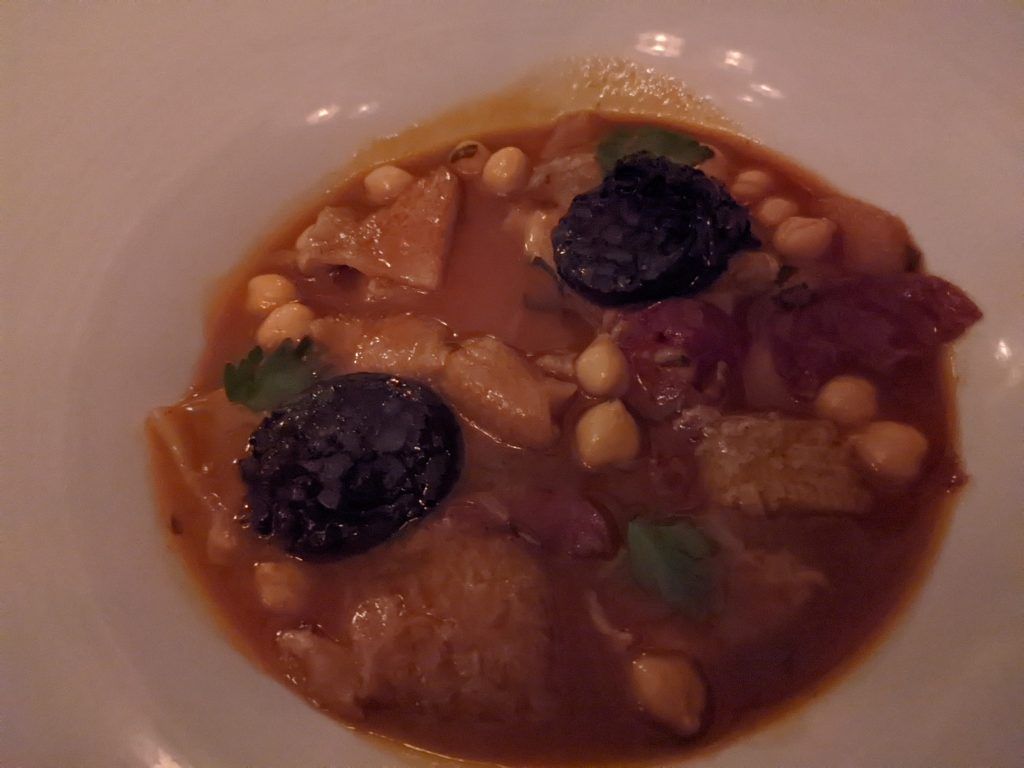
The third restaurant was Shizen Barra Nikkei which combined Peruvian with Japanese flavors. Peru was the first South American country to recognize Japan and Japanese immigrants started arriving in Peru in 1899. Now there are over 100,000 Peruvians of Japanese descent and, like the Chinese, they have greatly influenced Peruvian cooking.
Shizen mainly focused on seafood and I thought I’d try their sushi. It was incredible; really fresh and with some amazing combinations of flavors I’ve never had with sushi before. From the Maki menu below…
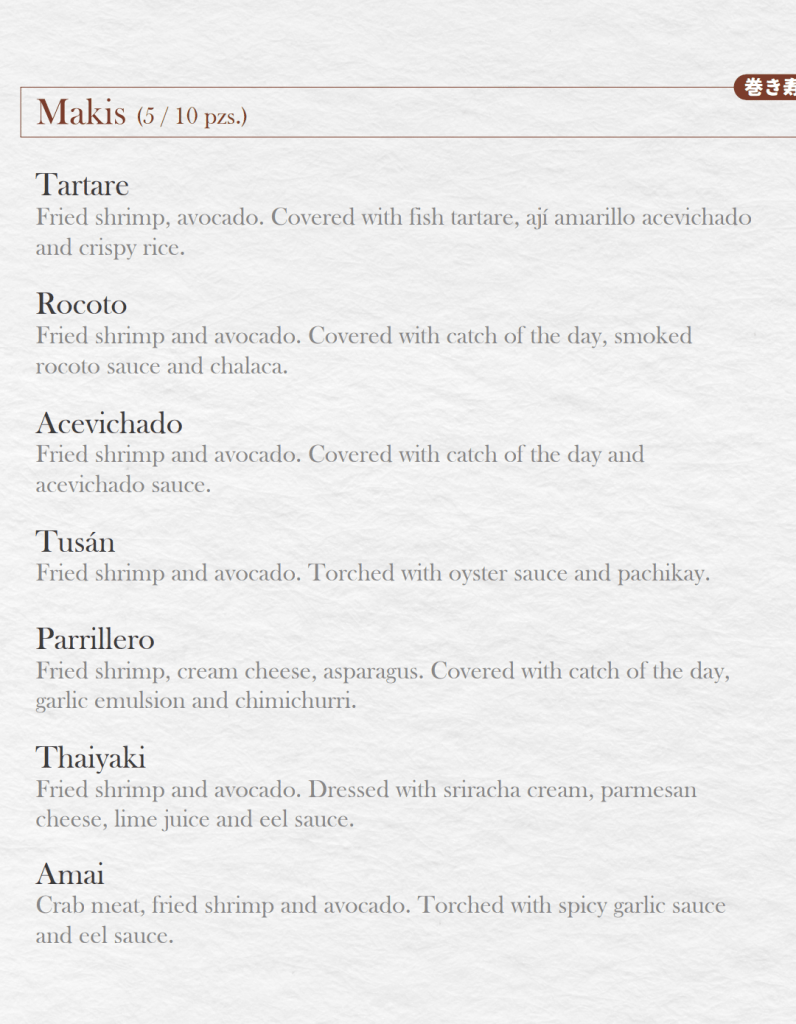
…I started with the Tusan and Thaiyaki on the recommendation of the waiter…
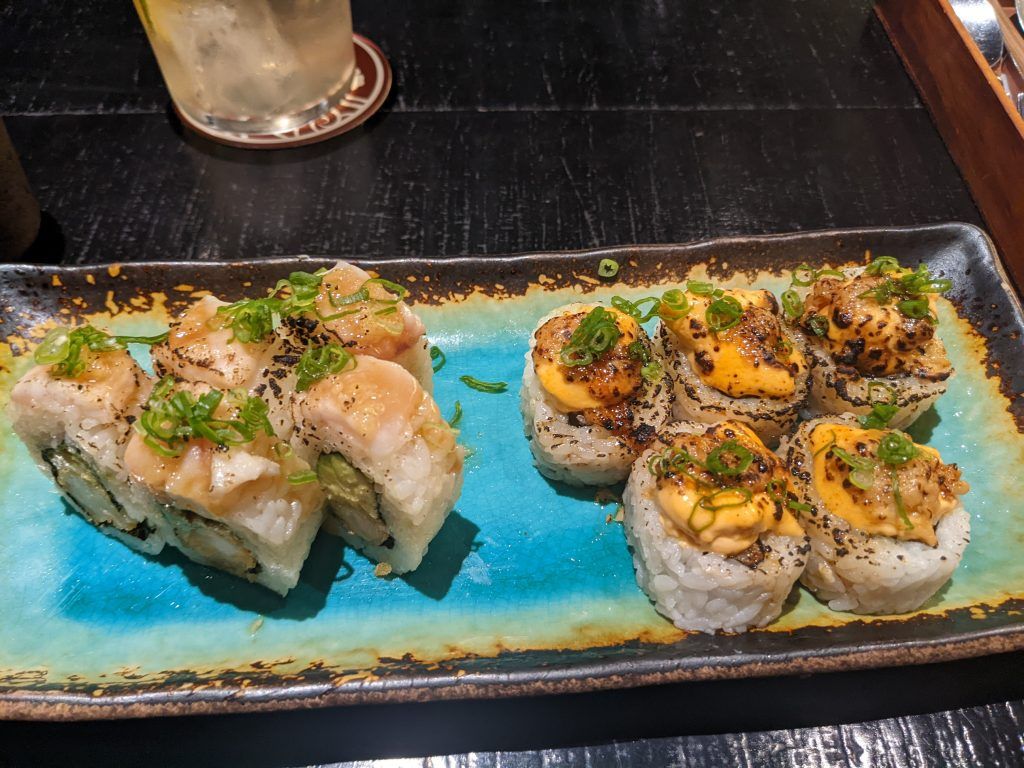
…then moved to the Rocoto and Parrillero…
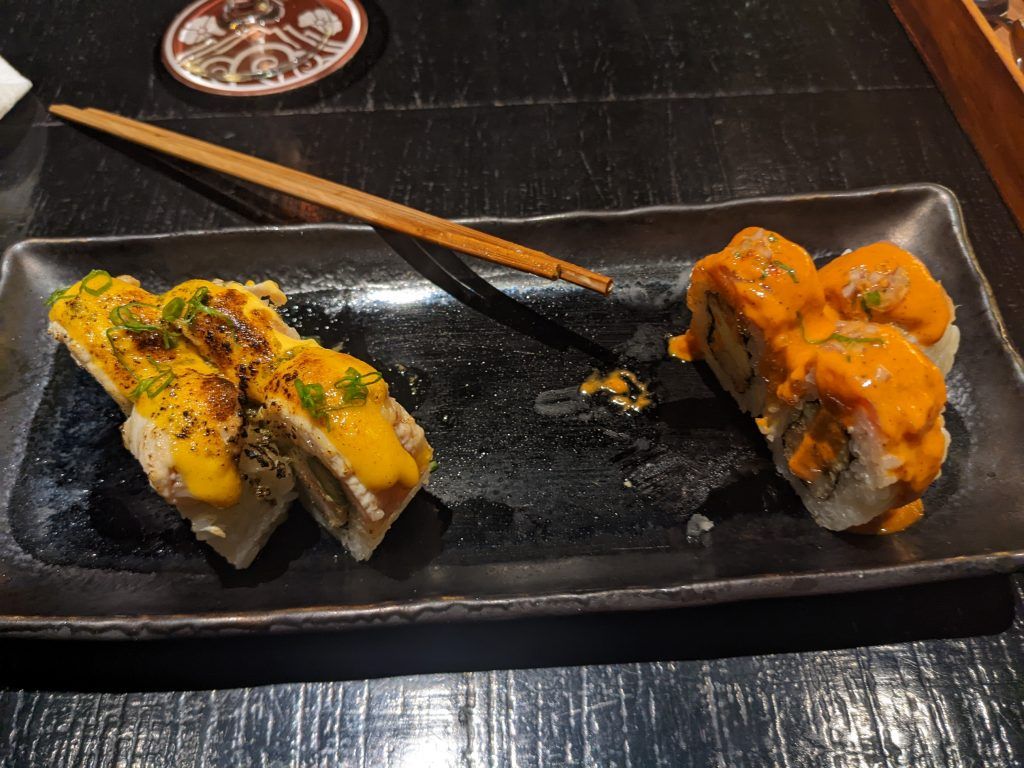
…and finished with the Tartare.
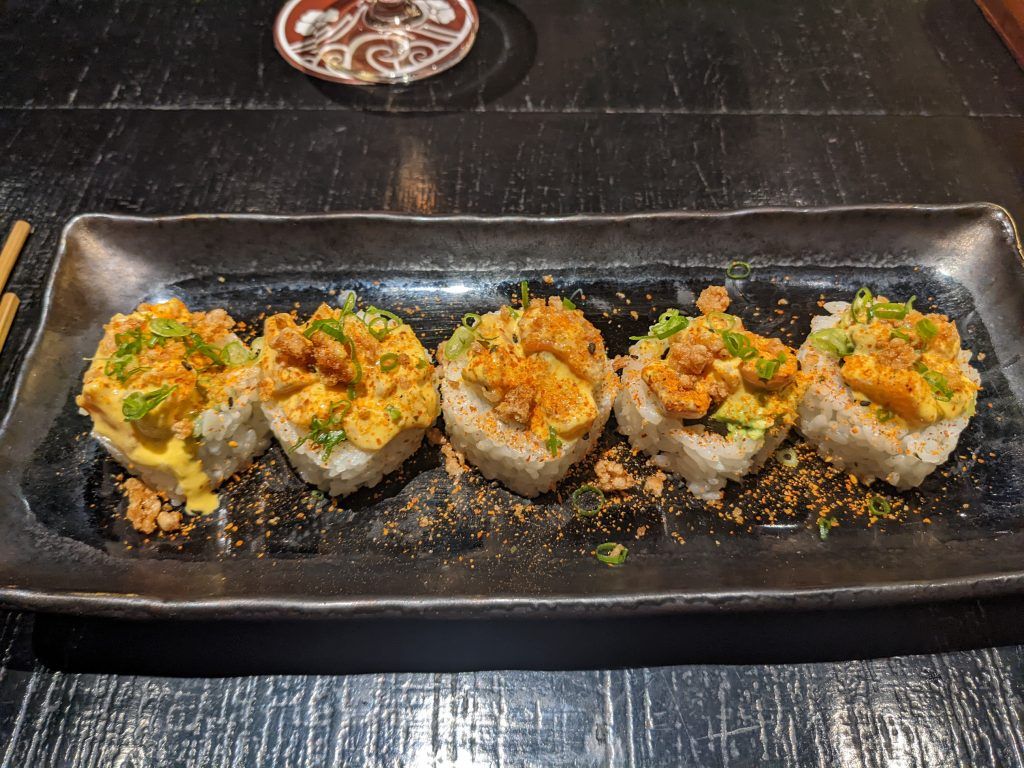
And I topped it off with a huge piece of 70% cacao chocolate cake and a small kettle of ginger tea.
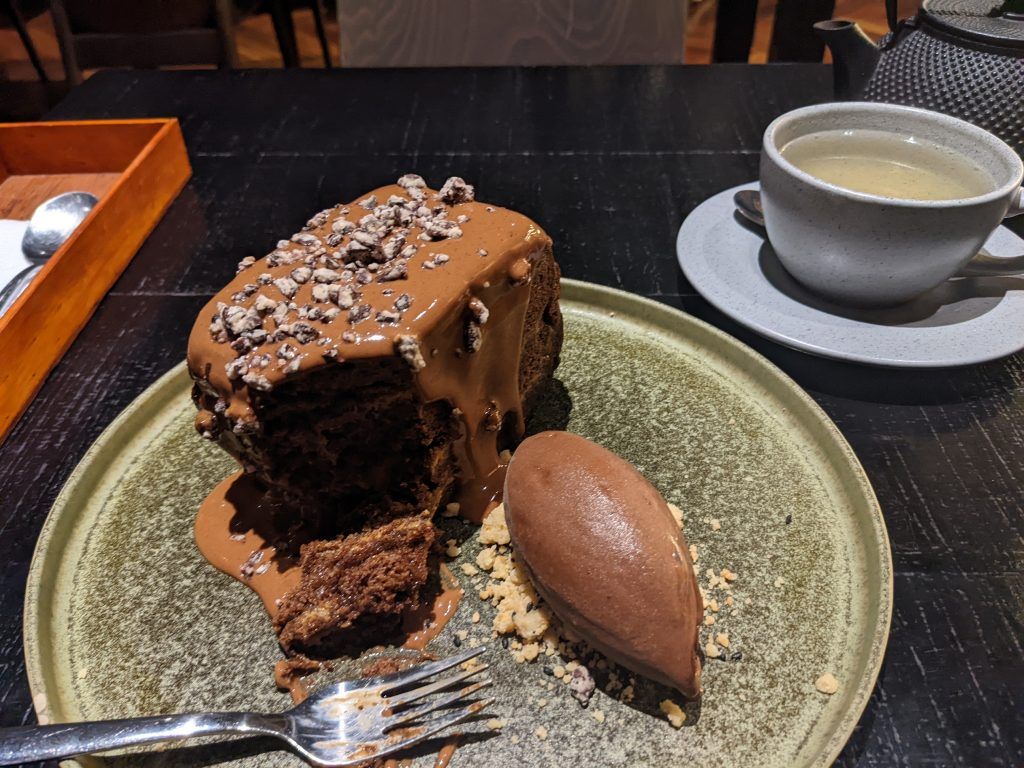
The fourth restaurant I tried was El Bodegon. It was described as upscale Peruvian comfort food. Based on the waiters recommendation I had the Mondonguito A La Italiana. It ended up being a nice, but kind of bland dish. I ended up using a lot of salt on it. One of my friend’s had the Gnochi. It was definitely better than my dish 🙂
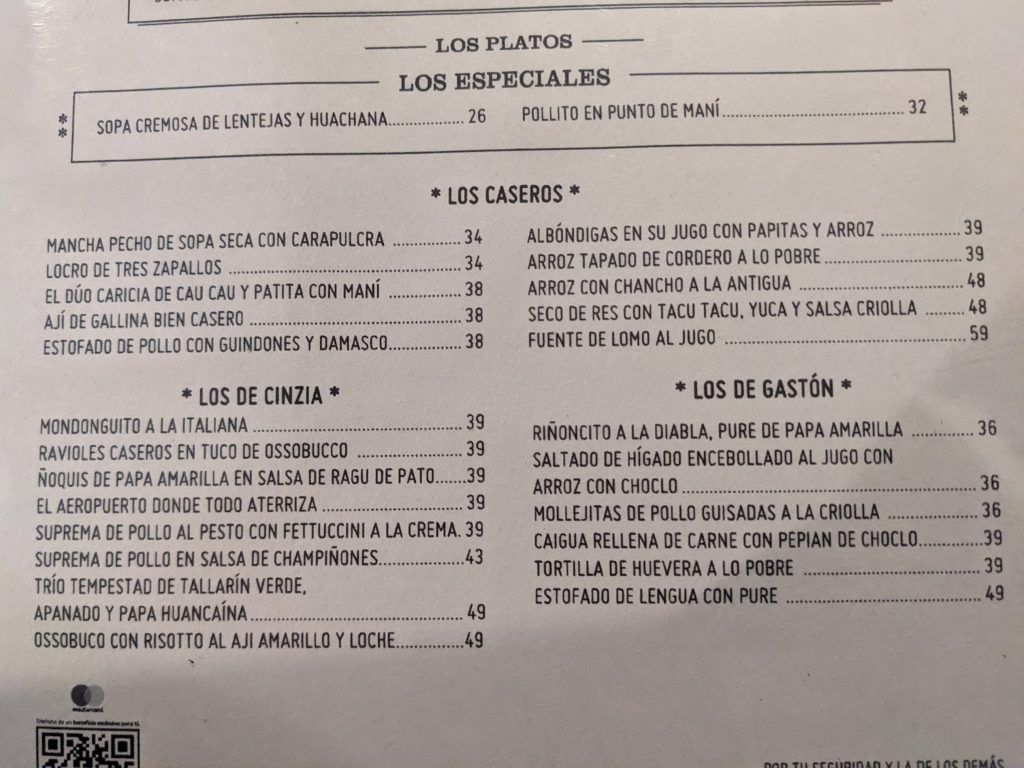
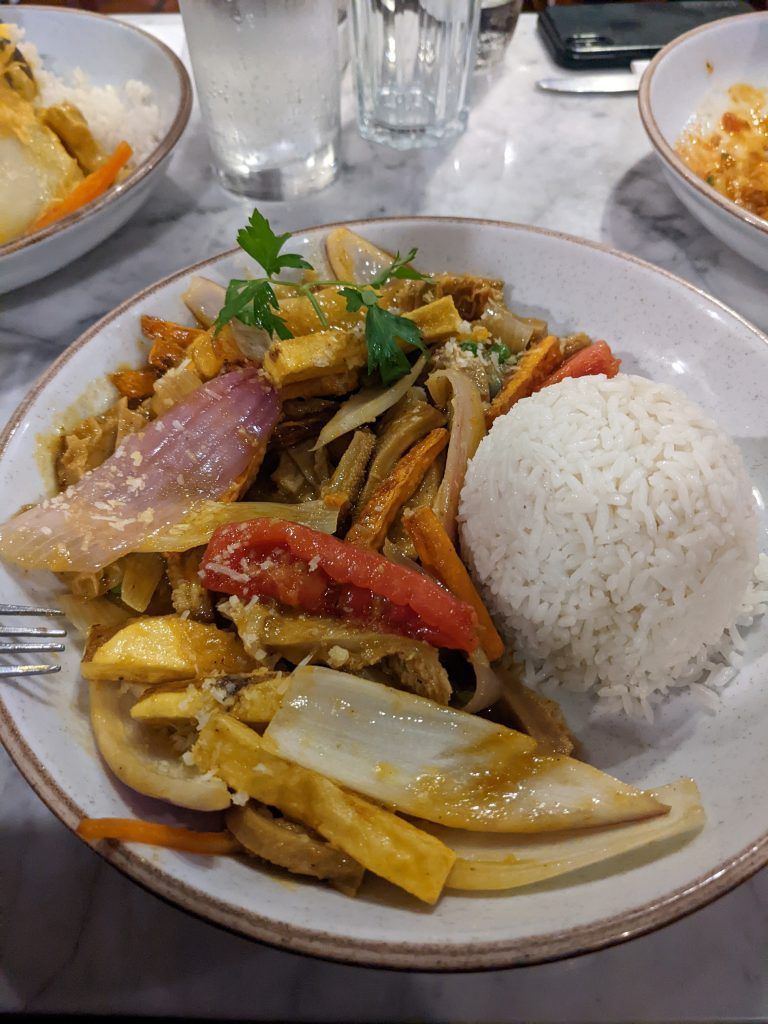
The final restaurant from the recommendations I received was Shimaya Raman. It was small and packed when I went there. They had a bento box on the menu and it had been a long time since I’ve had that. It was relatively inexpensive and very good!
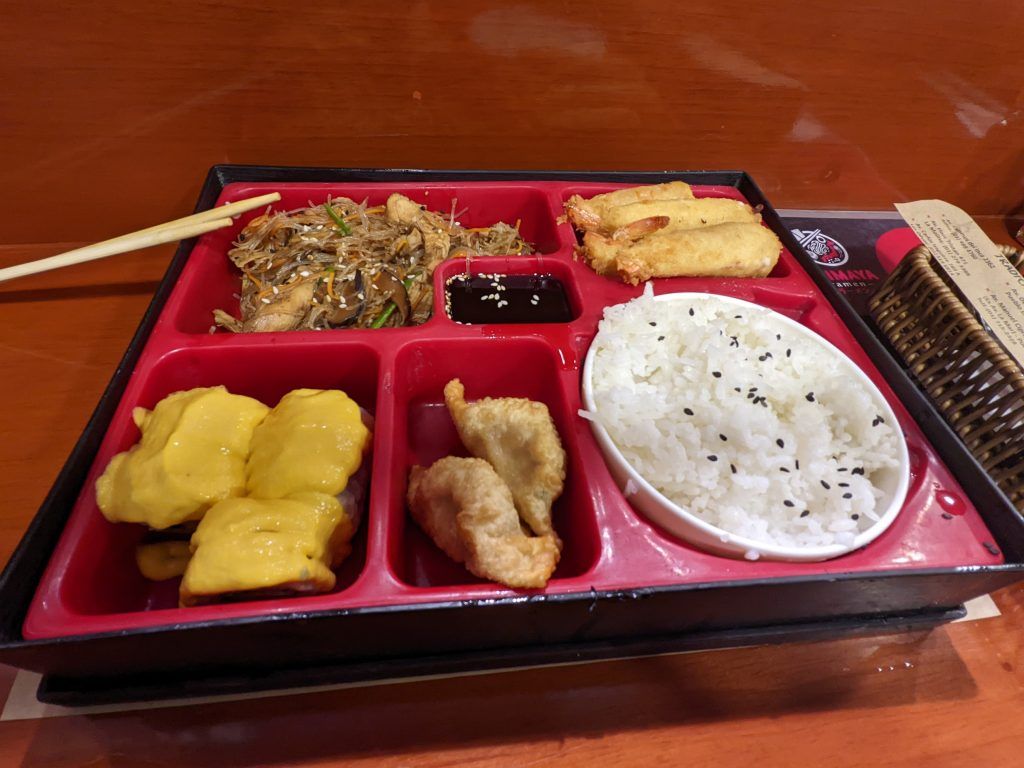
So, to summarize my uncharacteristic foodie binge: the food tour, Rafael and Shizen were amazing. The cooking class, Alfresco and Shibaya were good, and El Bodegan was OK.
Lima’s Historic Center
Lima has a wonderful historic city center anchored by its Plaza de Armas. I first visited its Museo de Arte which had some wonderful pre-Columbian art.
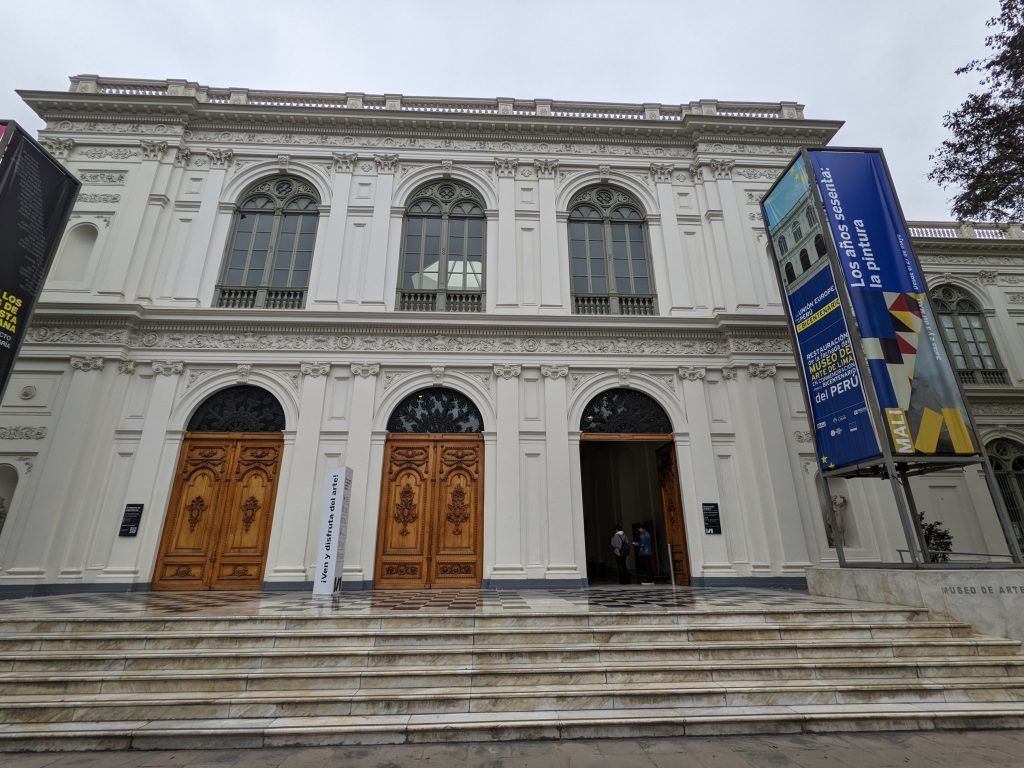
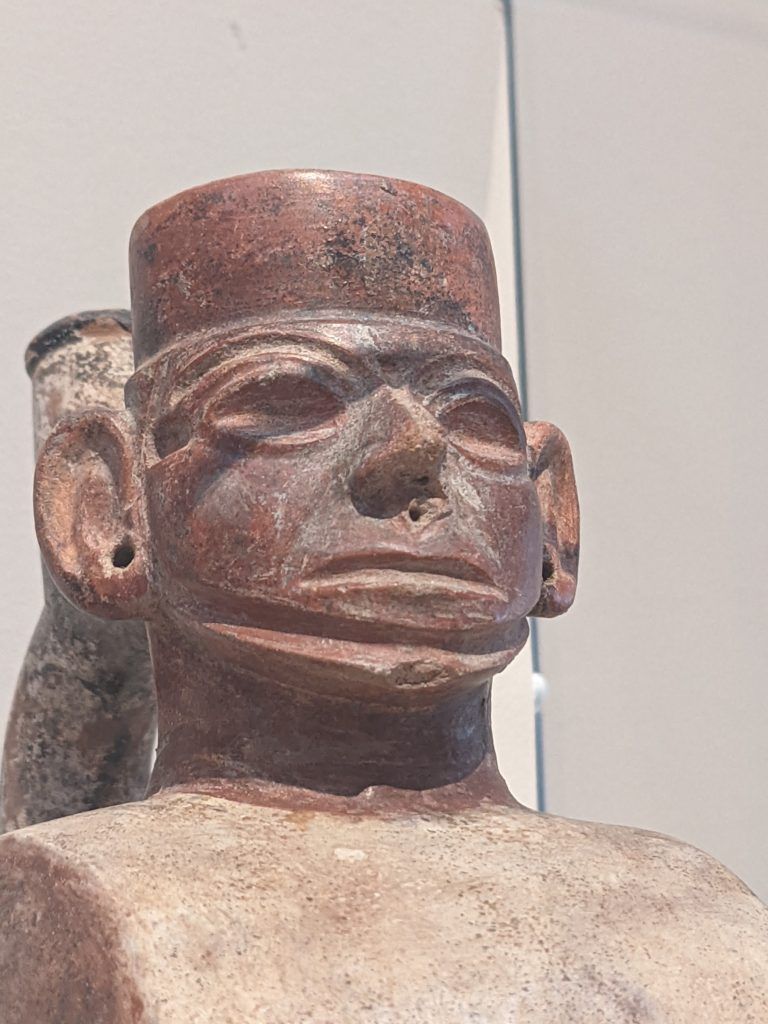
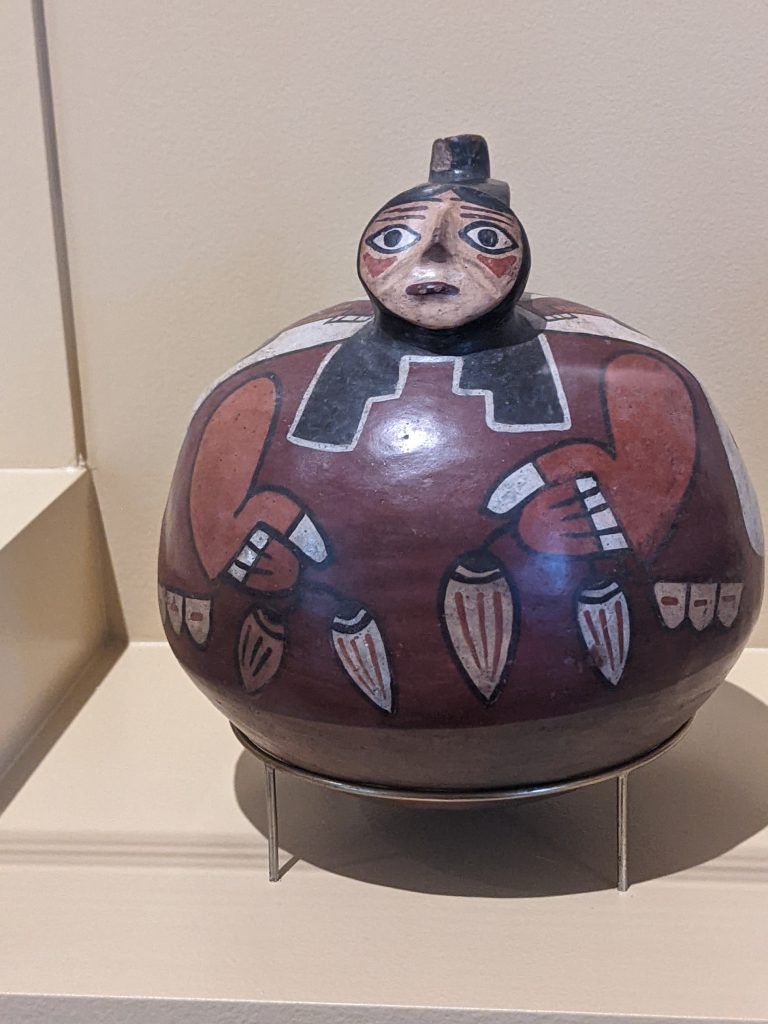
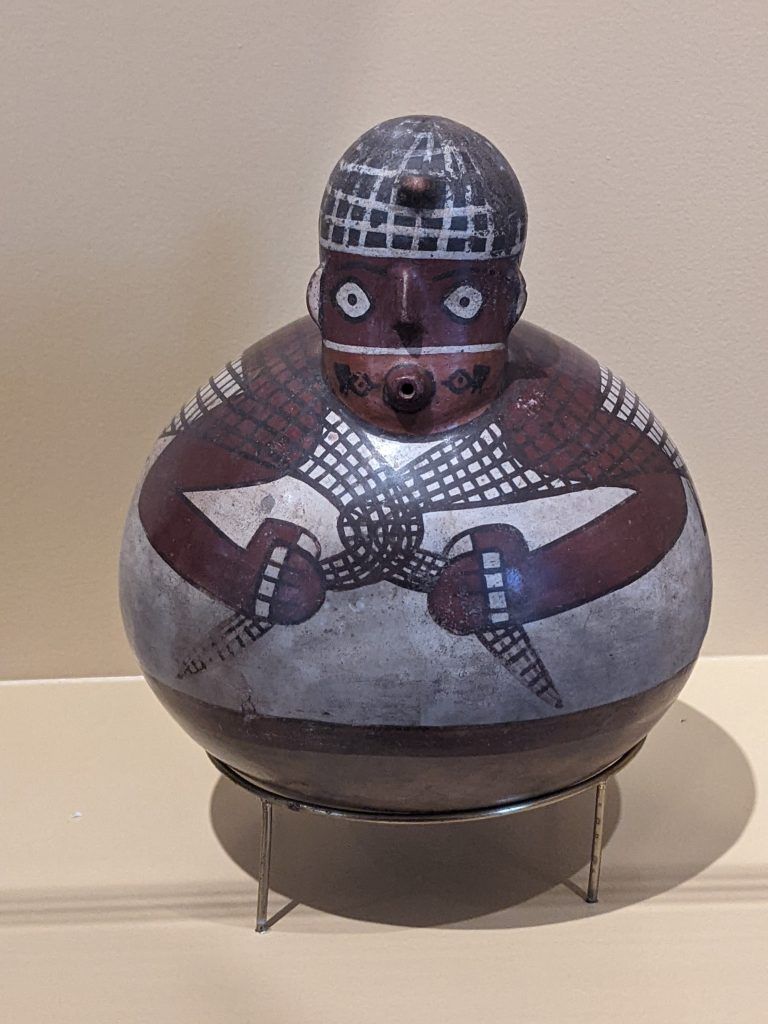
The museum also had some really nice modernistic Peruvian art from the 1920s and 1930s.
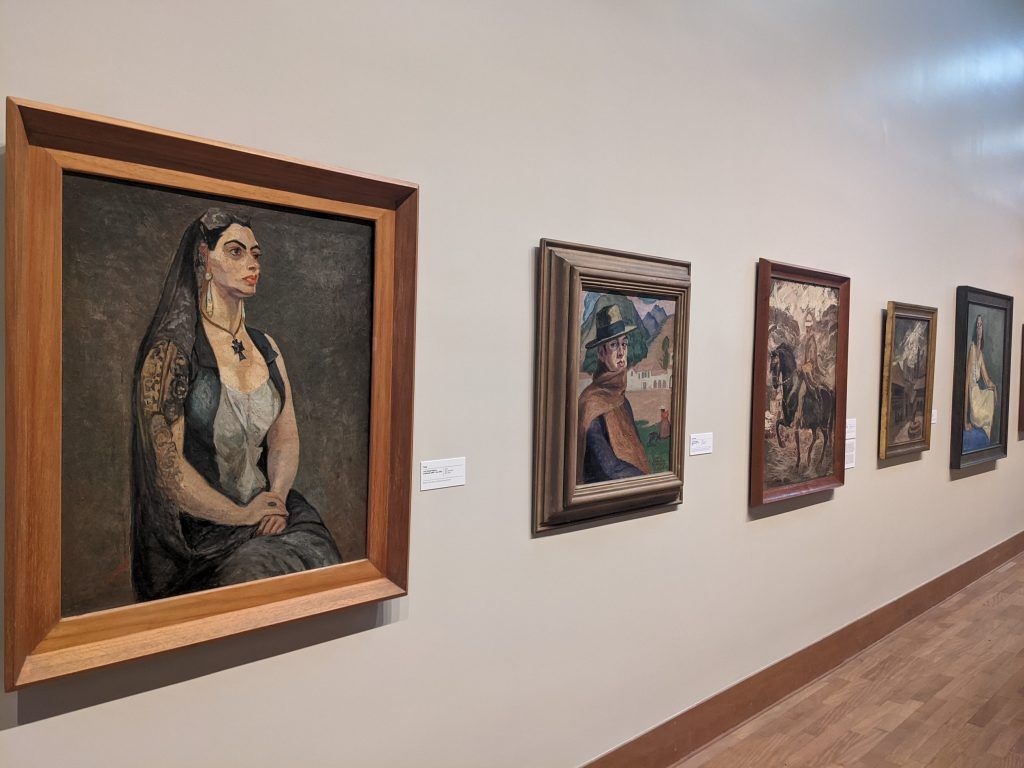
Near the Plaza de Armas is the classic buidlings of San Marcos Square.
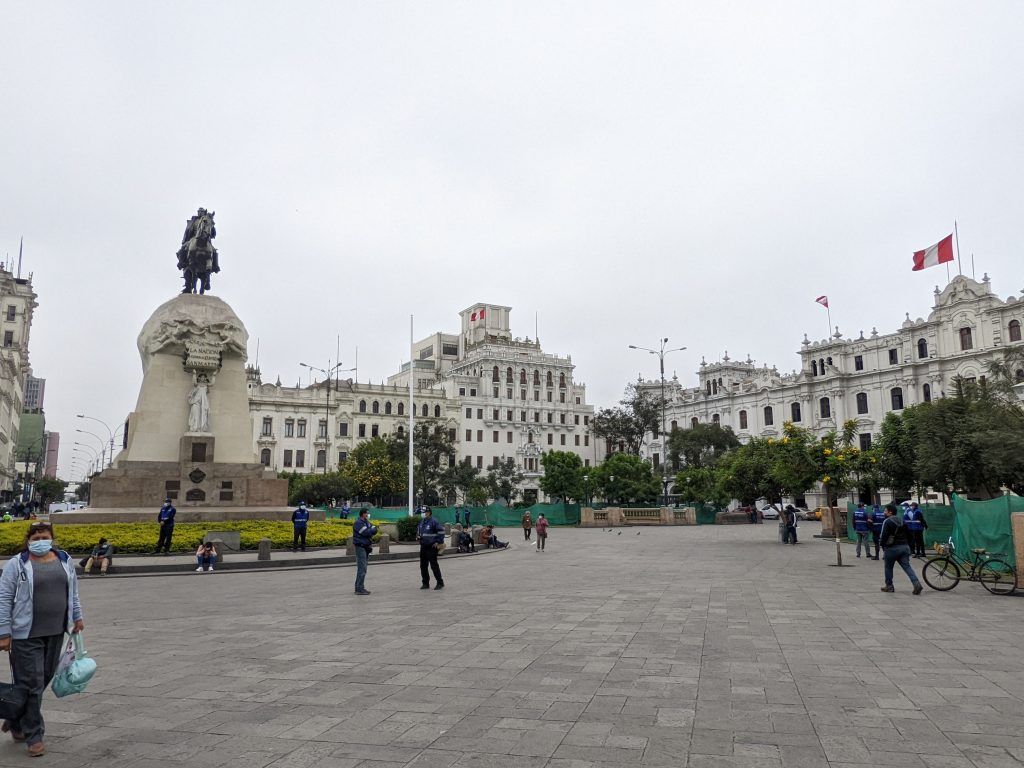
There were scores of classic walk streets throughout the area.
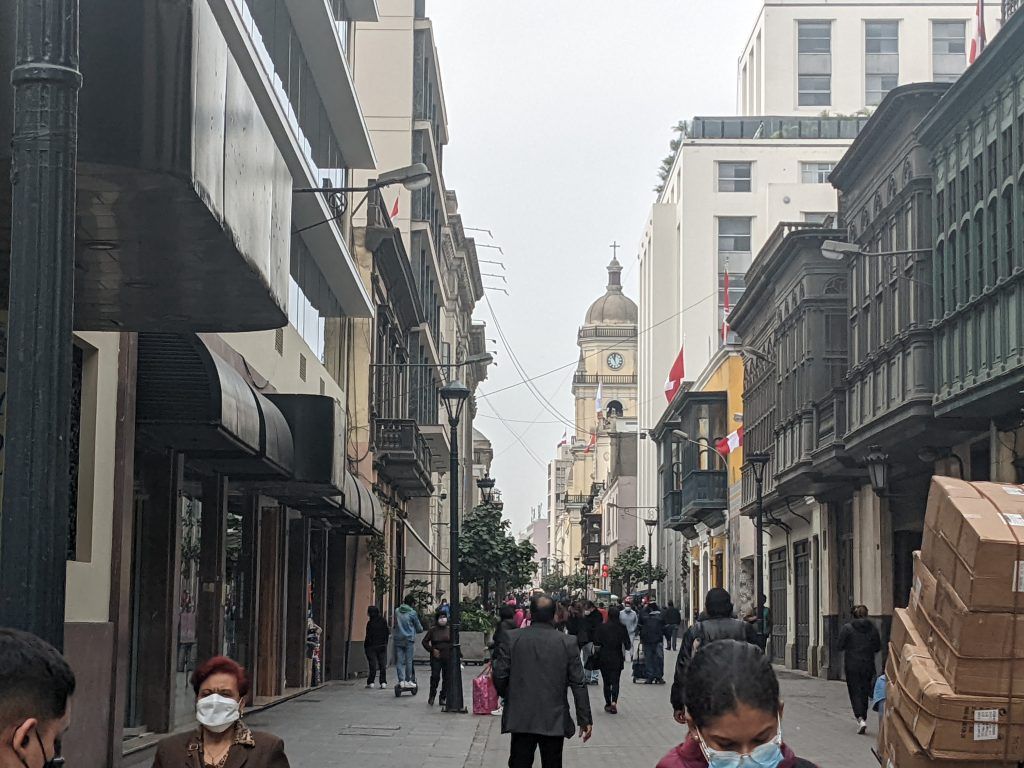
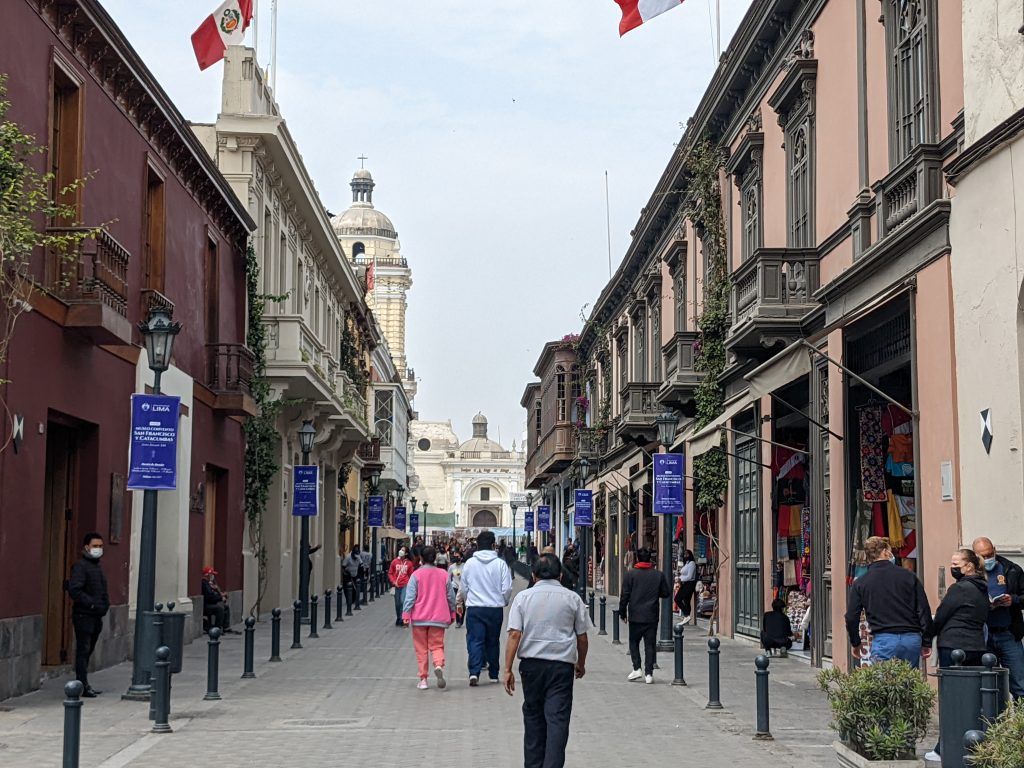
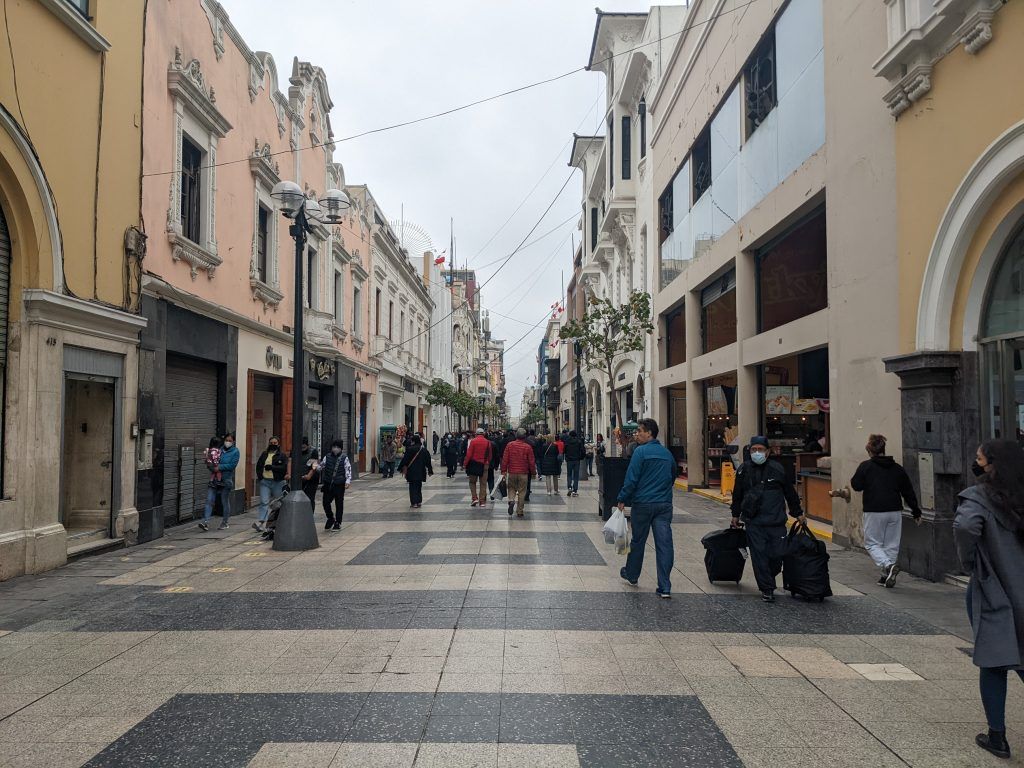
The actual Plaza de Armas included a slew of beautiful yellow buildings…
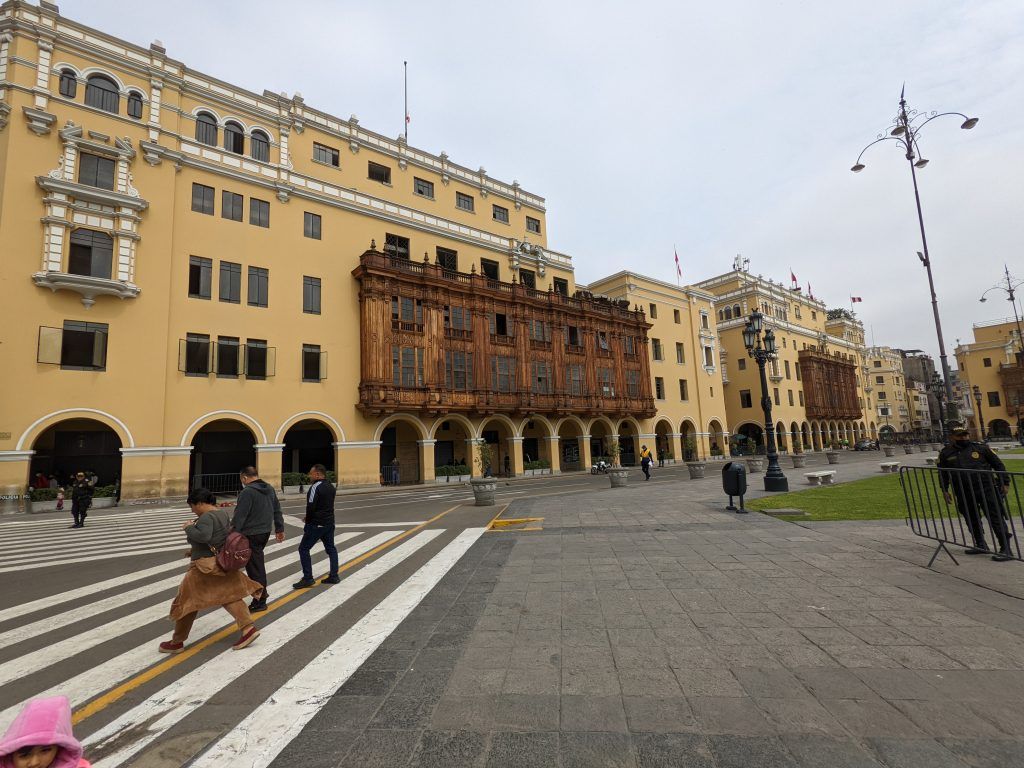
…the Government Palace where Peru’s president lives…
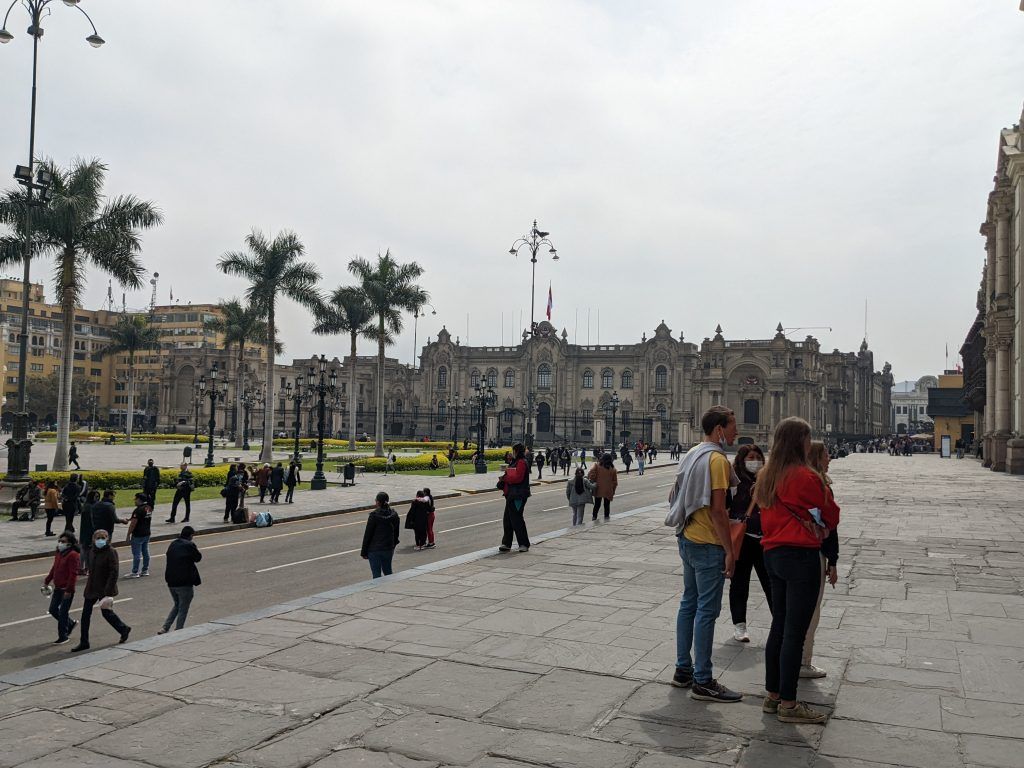
…and is anchored by the Lima Metropolitan Cathedral.
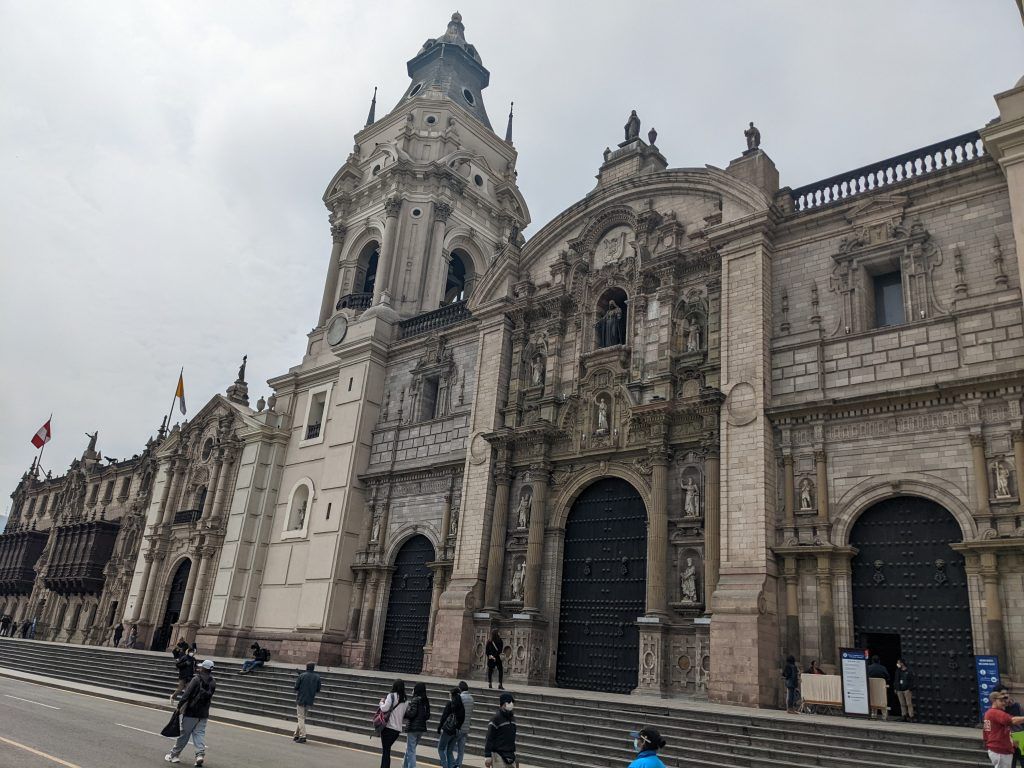
The cathedral has a calm beauty on the inside. It was originally built starting in 1535 over the site of the Inca shrine of the Puma Inti. The original buildings were destroyed in a couple of earthquakes and the current cathedral was completed in the late 1700s.
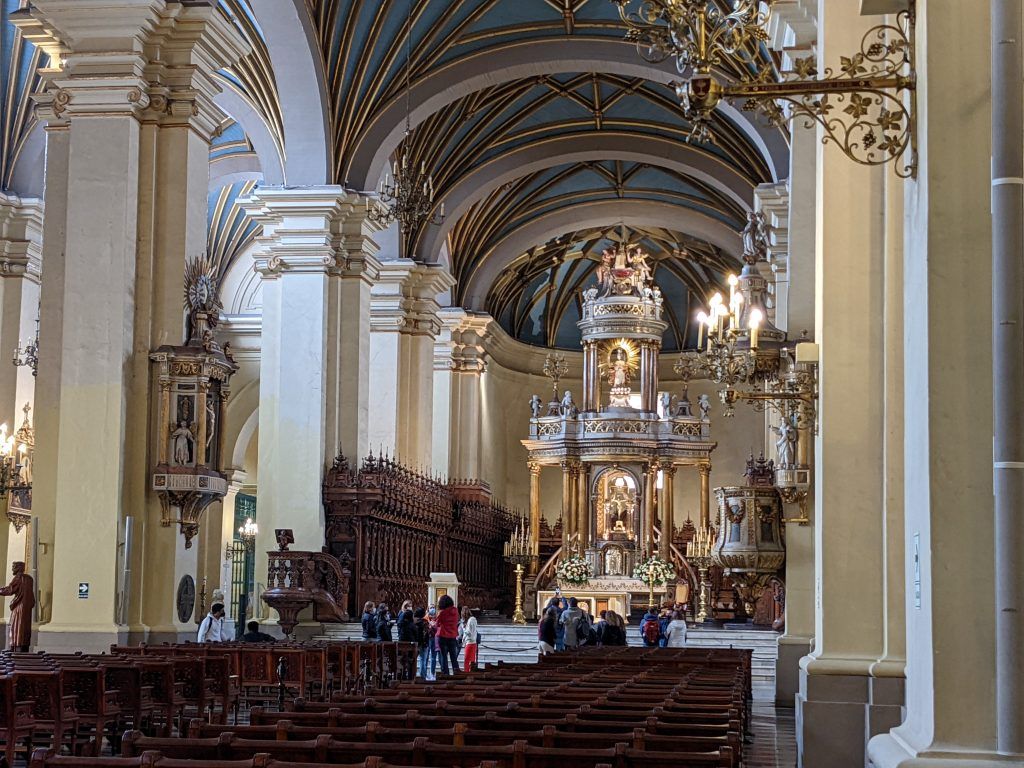
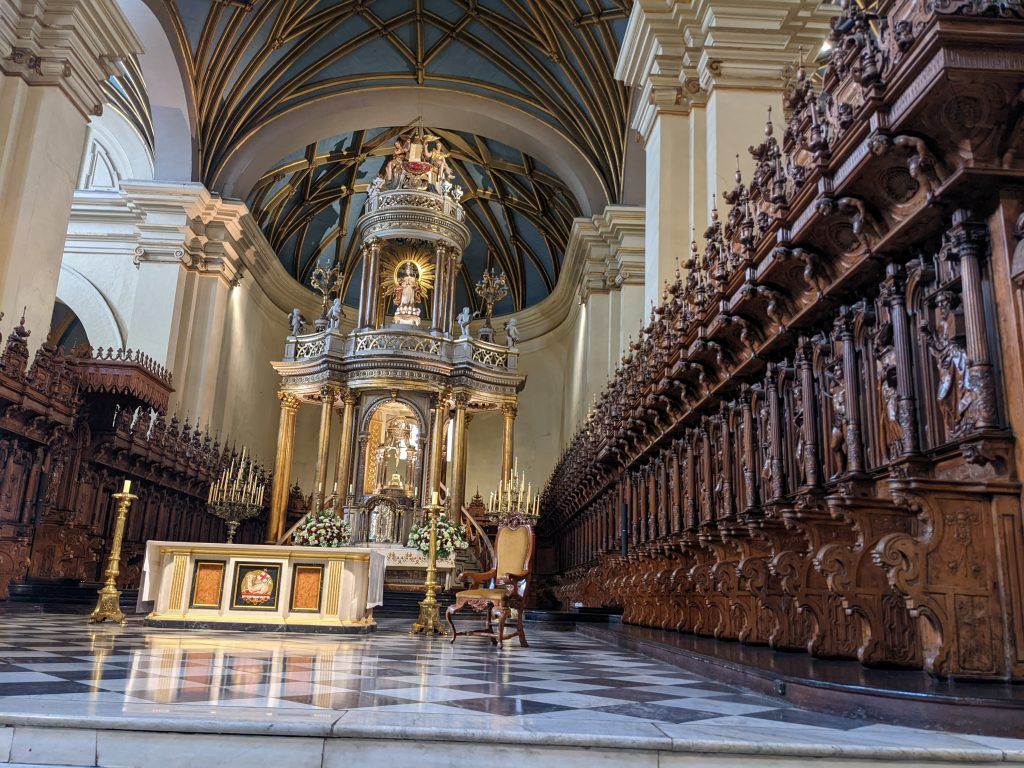
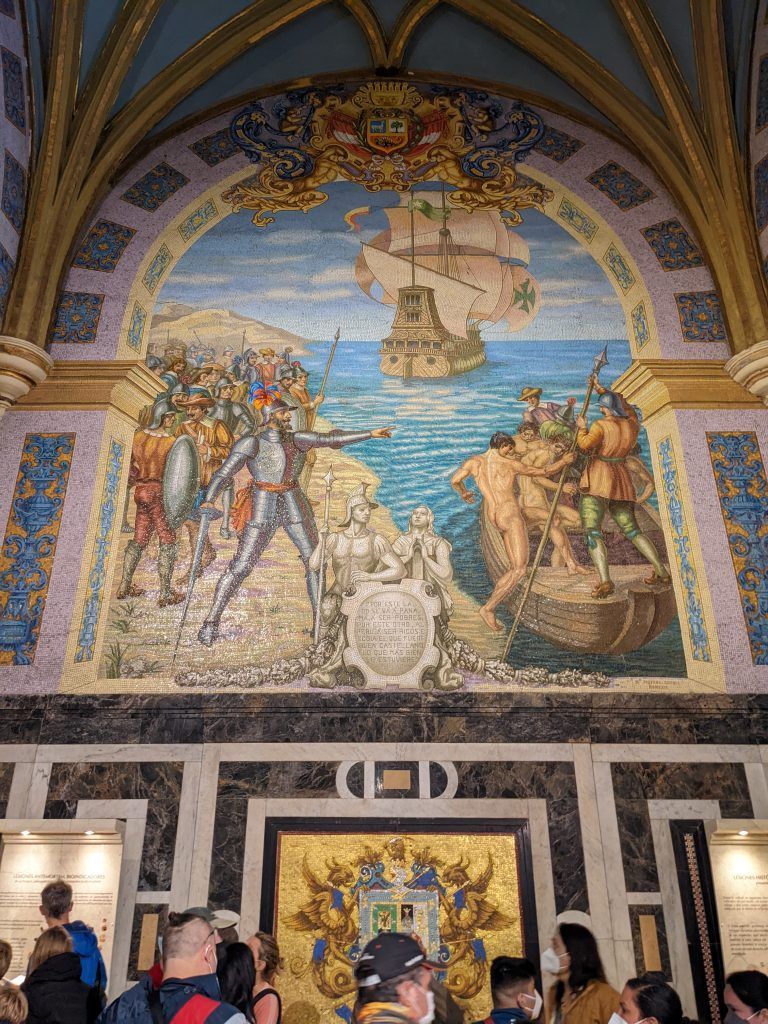
But then things get interesting. First, there is a tomb where Francisco Pizarro’s bones are laid to rest. The interesting thing is that these bones are on public display in the glass case shown below.
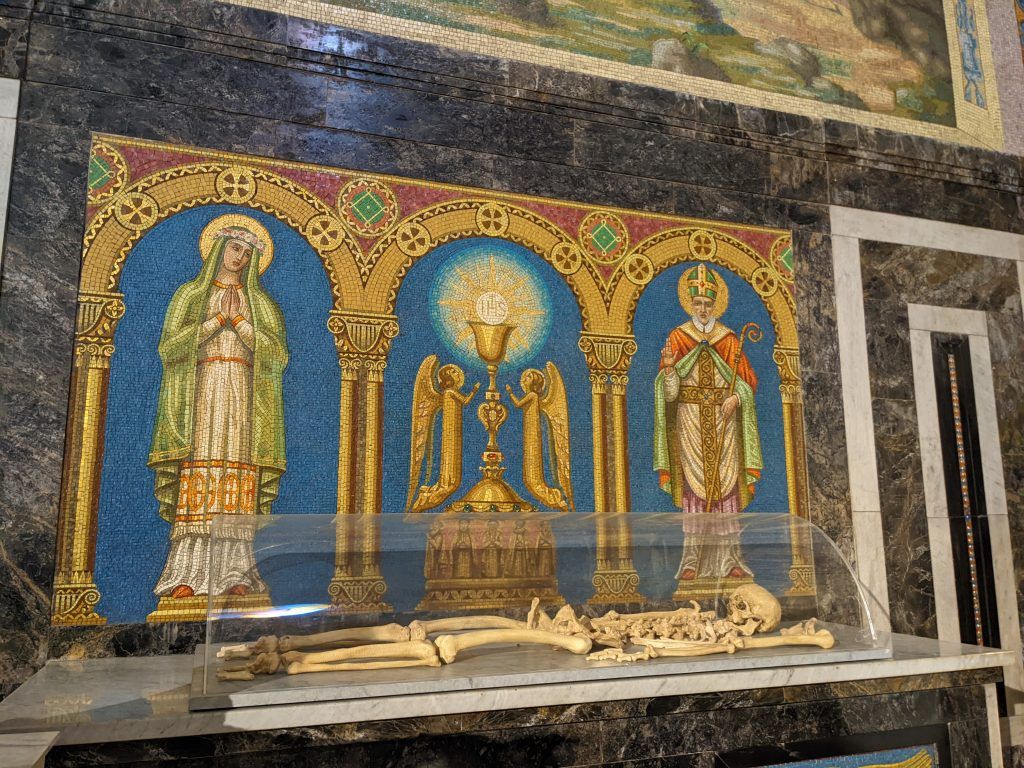
In other naves of the church there are exhibits in the floor of the tombs of weathly Peruvians who donated money to the church and were buried under these naves as further insurance that they would make it to heaven.
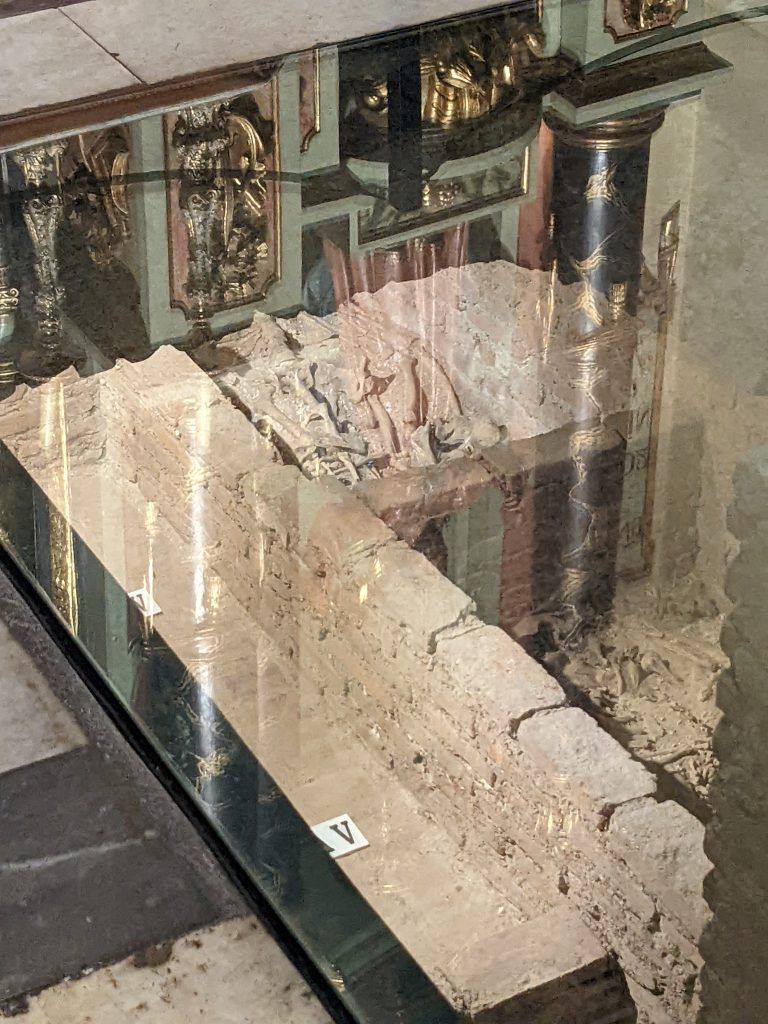
Next you get to explore a couple of catacombs where where everyday citizens were buried. Our guide said that cemeteries weren’t really used and it was common to bury the dead in catacombs under churches.
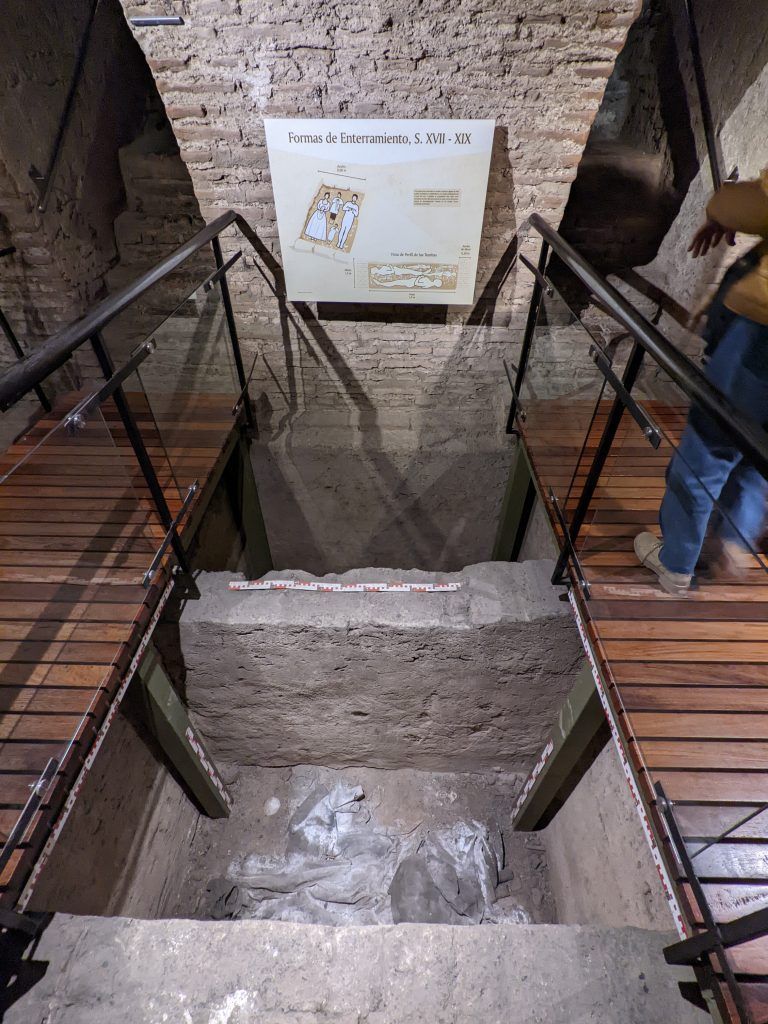
Finally, the most macabre part of the tour is what our guide said was mass burials of the part of the thousands of victims from huge earthquake and tsunami that hit Lima in 1746. Below are some of the coffins, including the smaller ones of children.
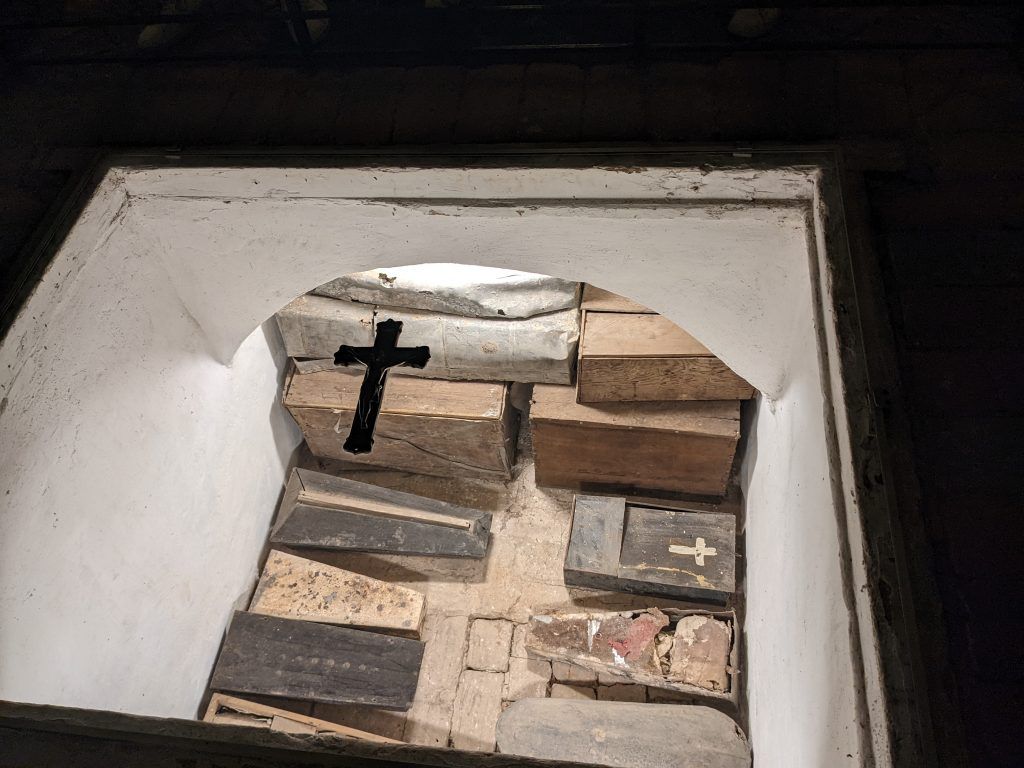
And the craziest part is the display of skulls in glass. I never got a clear answer on why they did that.
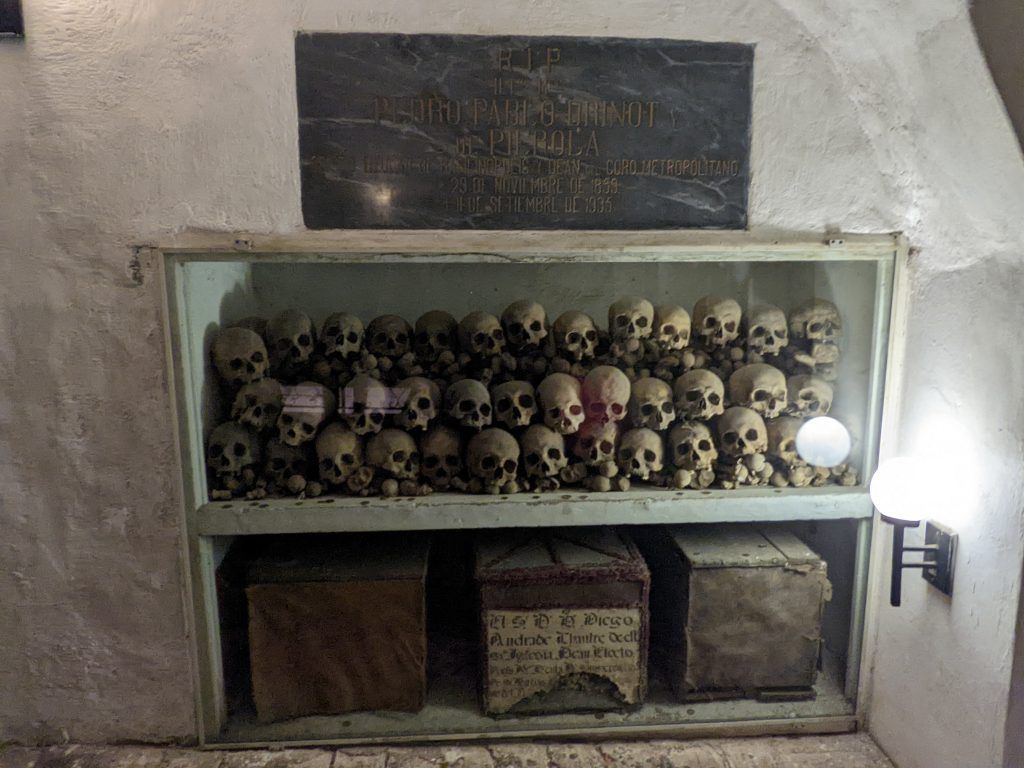
Near the Plaza de Armas is Project Rainbow where a local artist turned a poor, bland neighborhood on the San Cristobal Hill into an entire colorful mural.
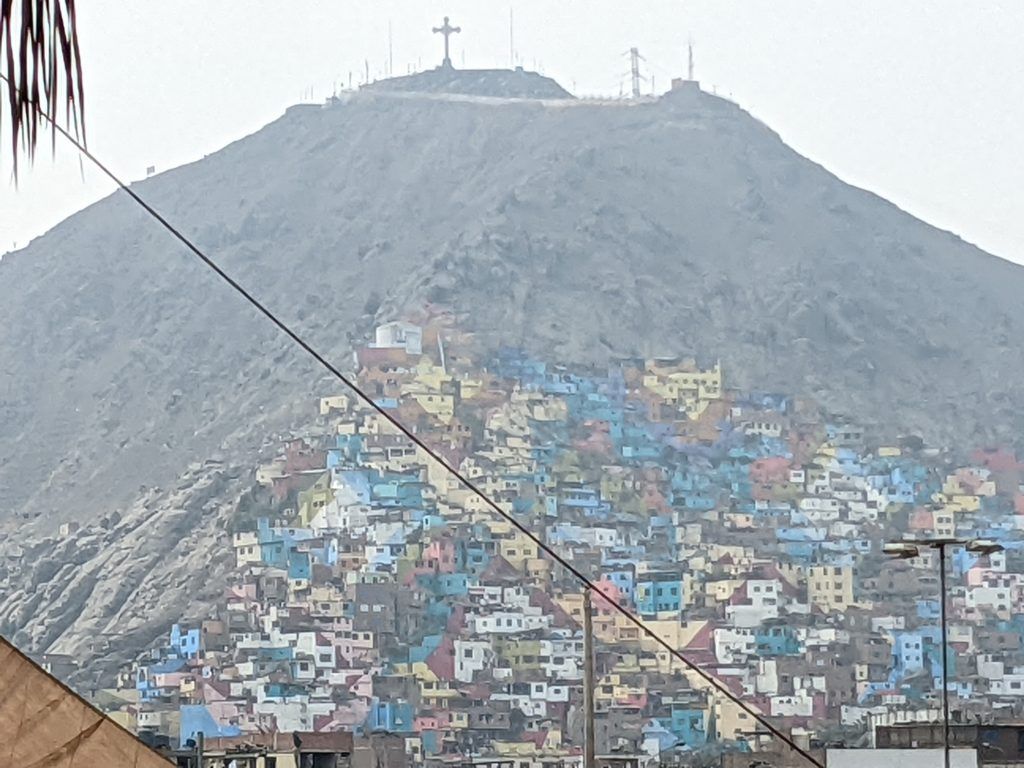
Below are some pictures of the more grittier parts of Lima.
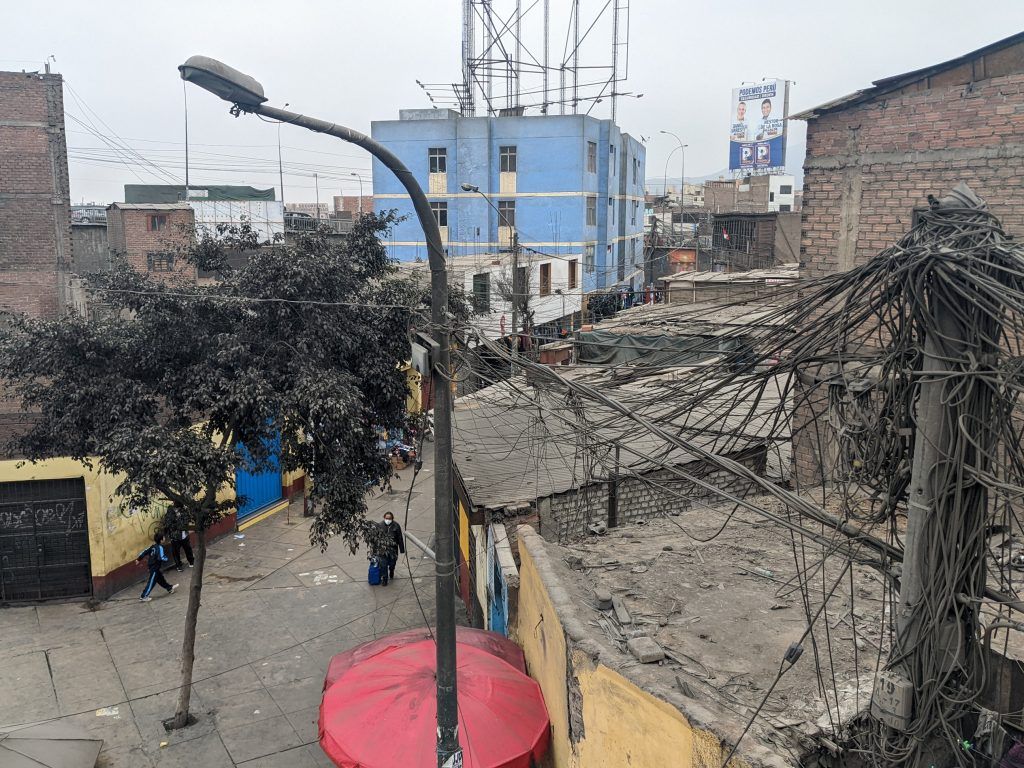
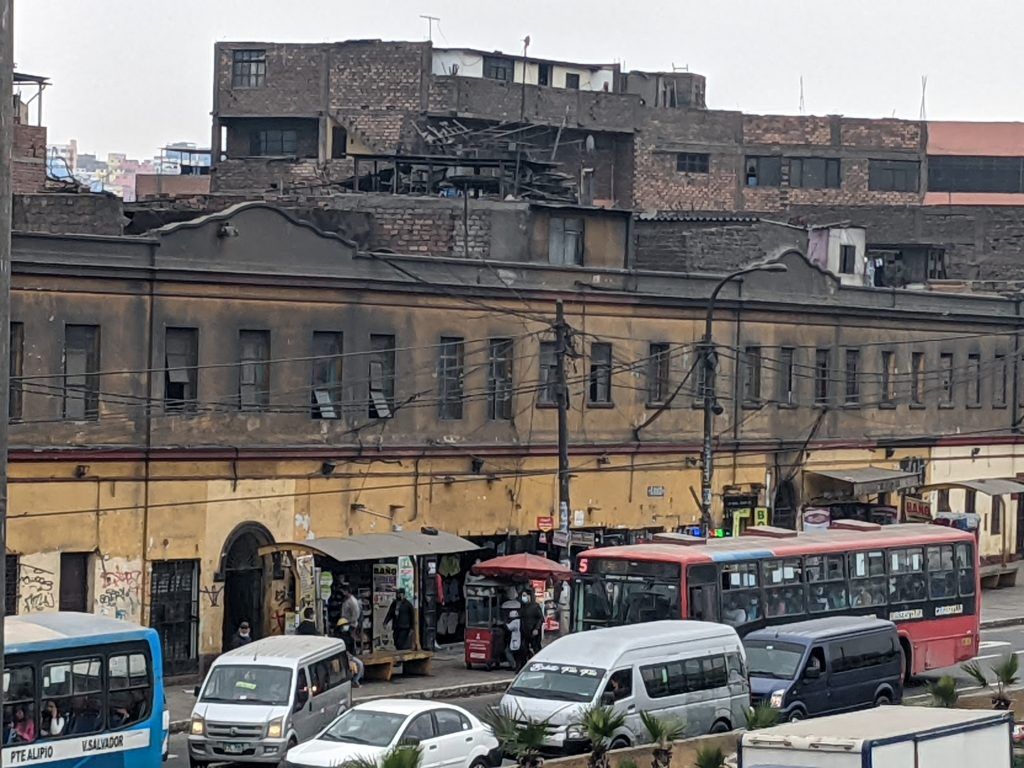
Museo Larco
The Museo Larco is a privately owned museum housed in an 18th-century vice-royal building. It showcases a series of chronological galleries which provides a nice overview of 5,000 years of Peruvian pre-Columbian history.
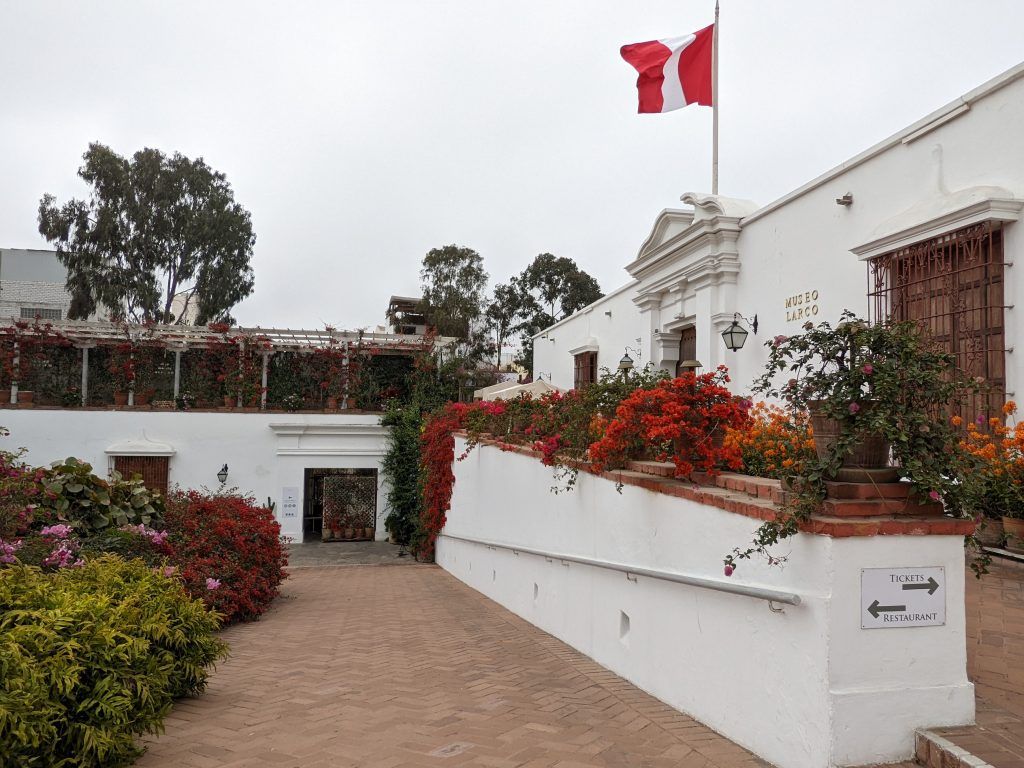
In my time in Peru I’ve come to really appreciate how realistic and unique some of their facial art was.
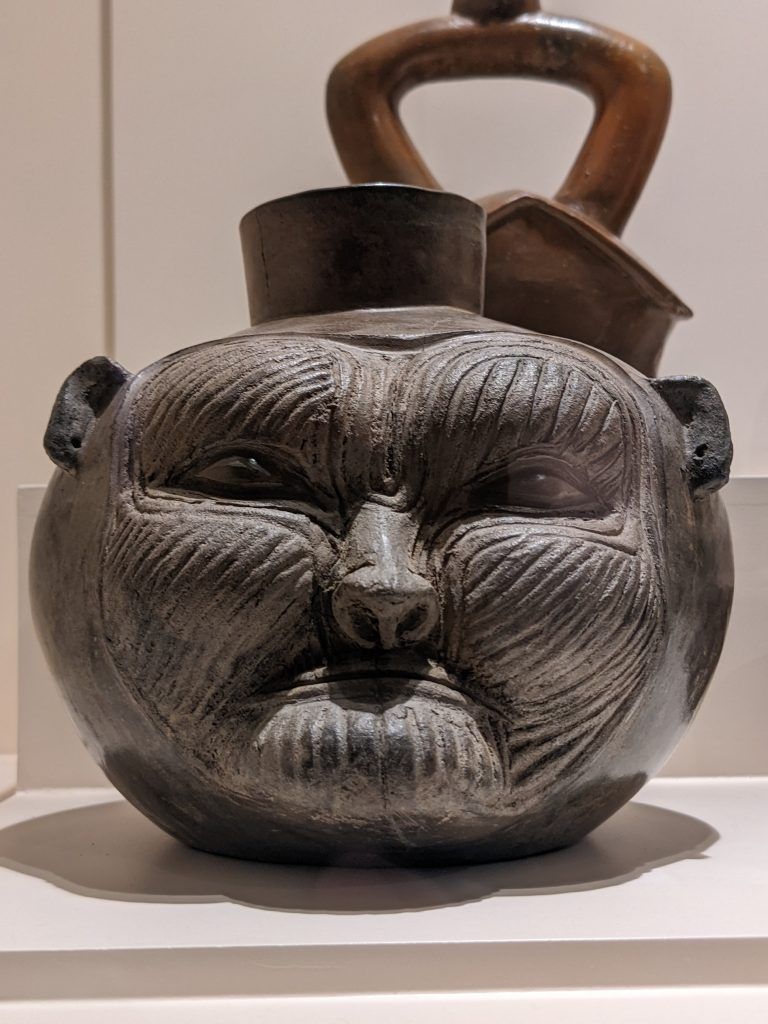
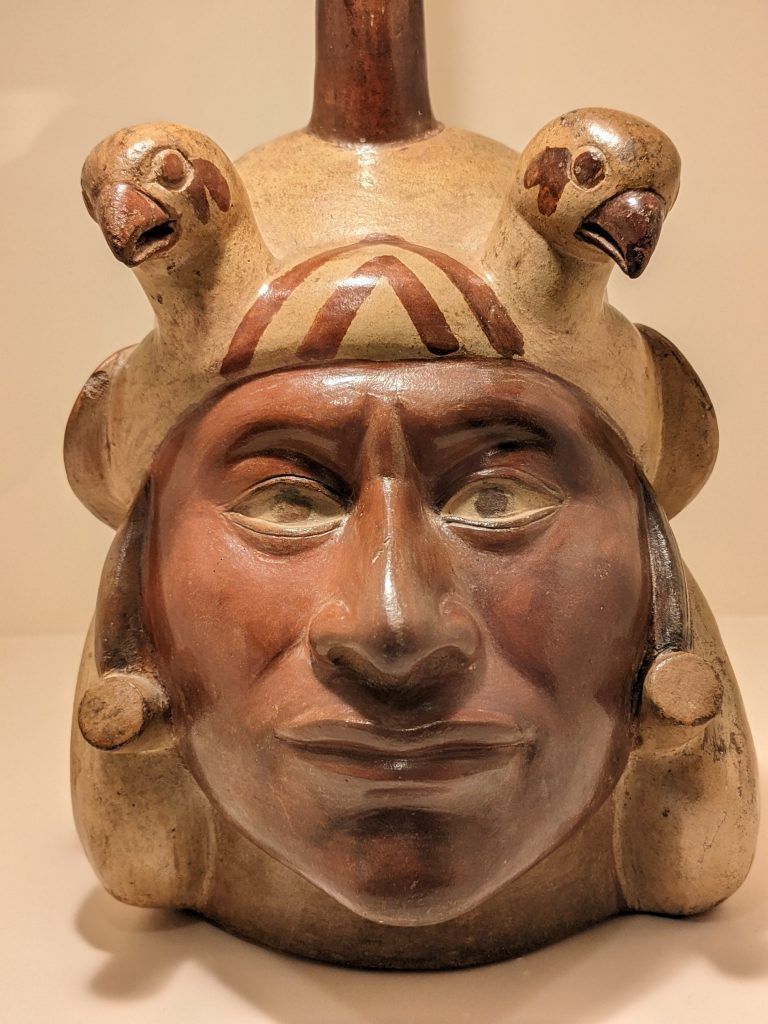
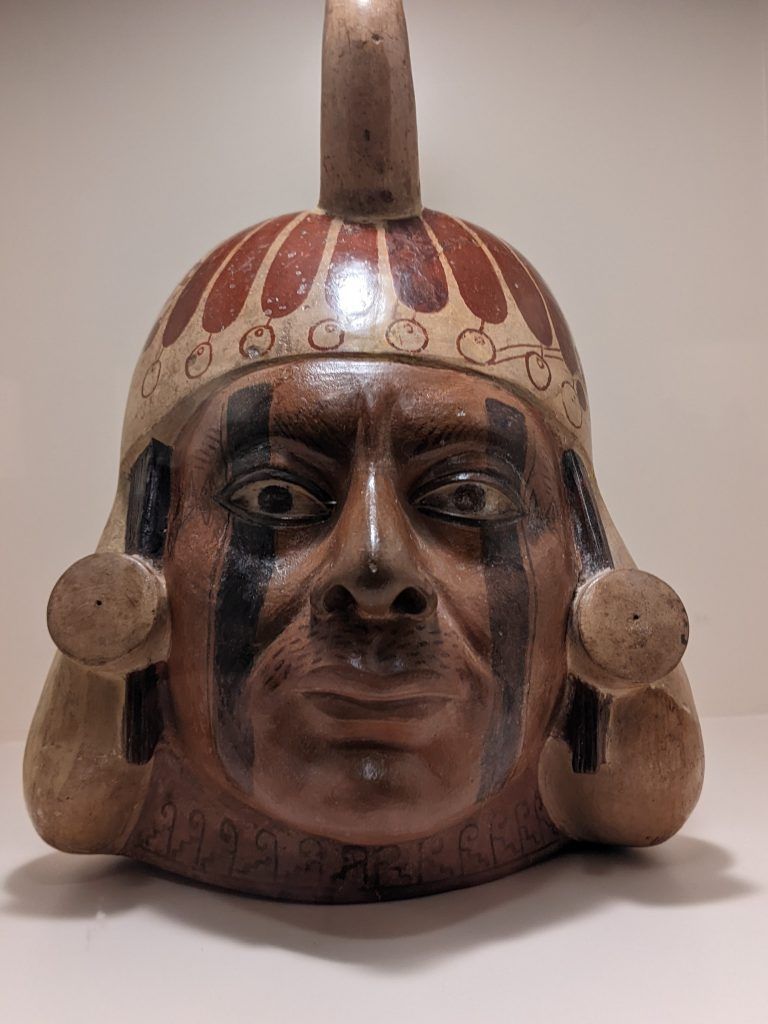
And just exactly why is this bowl so unhappy?
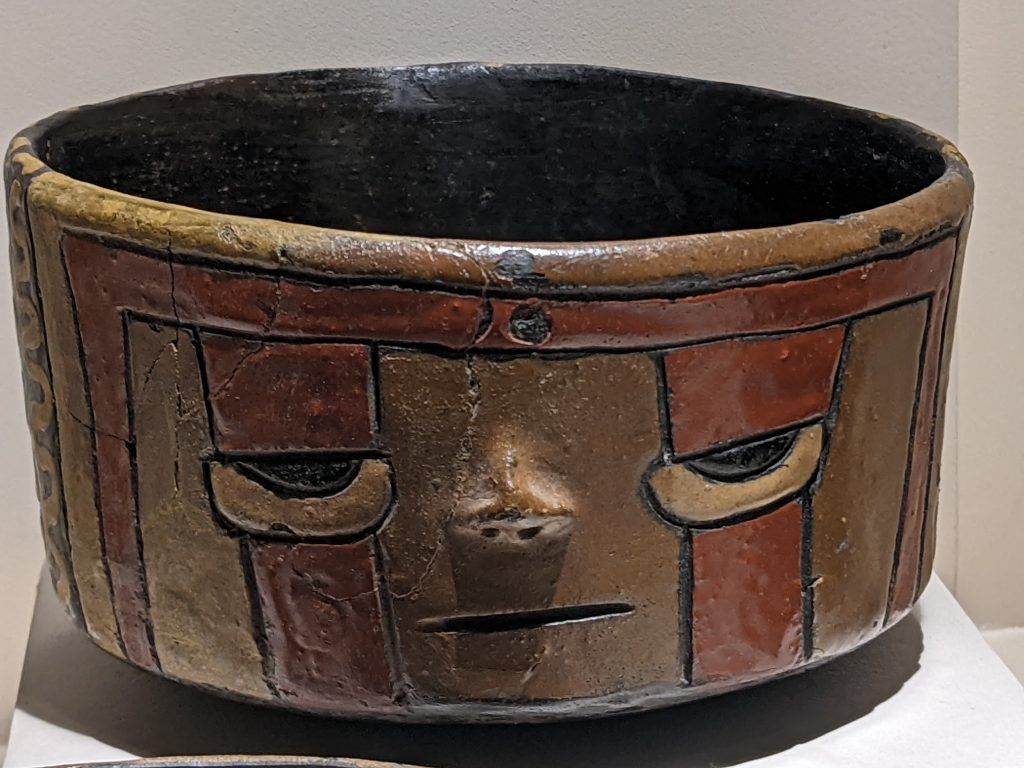
Some beautiful jade pieces.
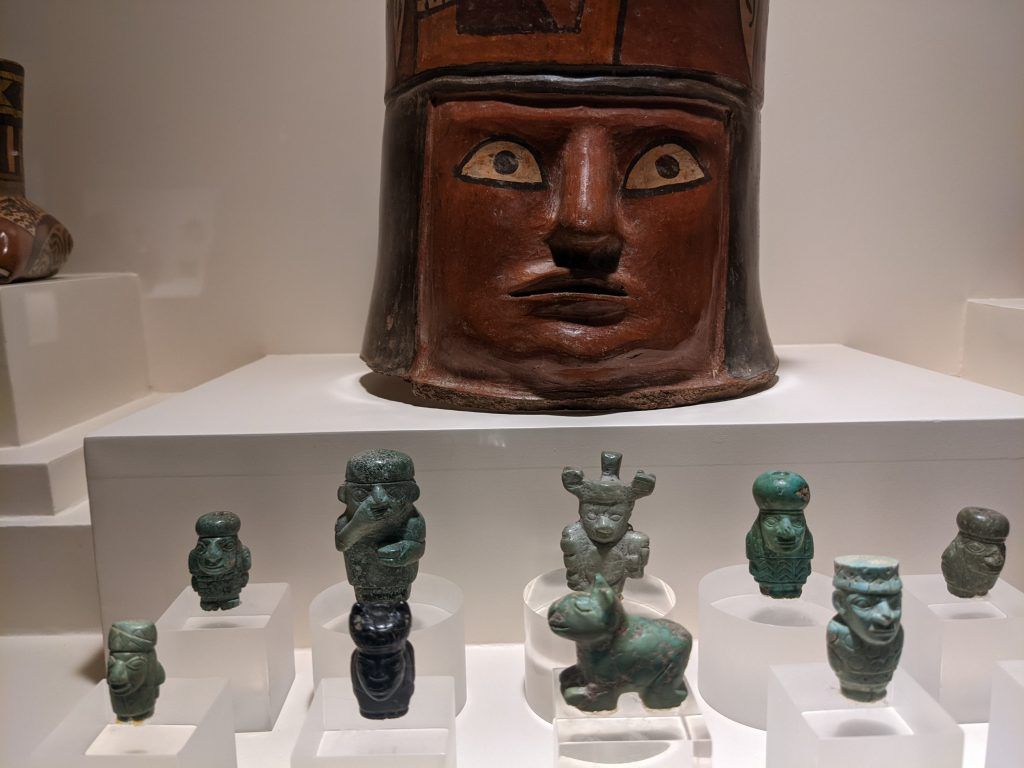
One of the fascinating things about seeing the different ruins and museum pieces of the ancient civilizations of Mexico, Guatemala and Peru is how little of their famous gold designs are left after the Spanish came through and shipped everything back home. That’s why it was so unique to actually see some of the incredible gold craftmanship displayed in this museum, as documented by the description below.
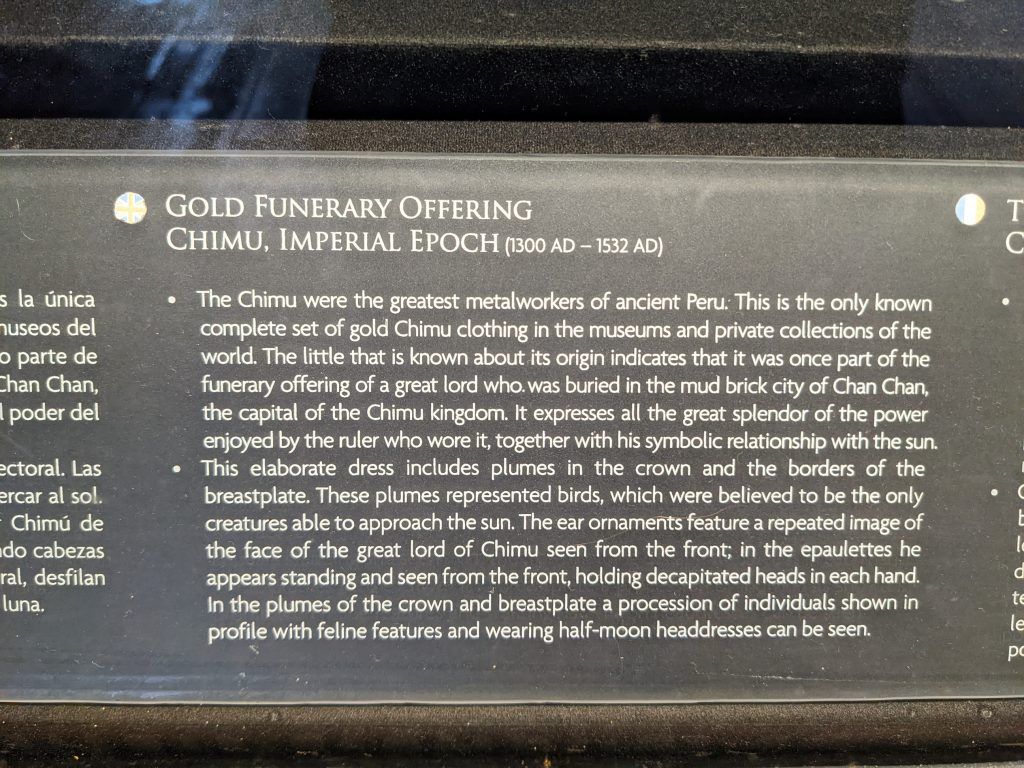
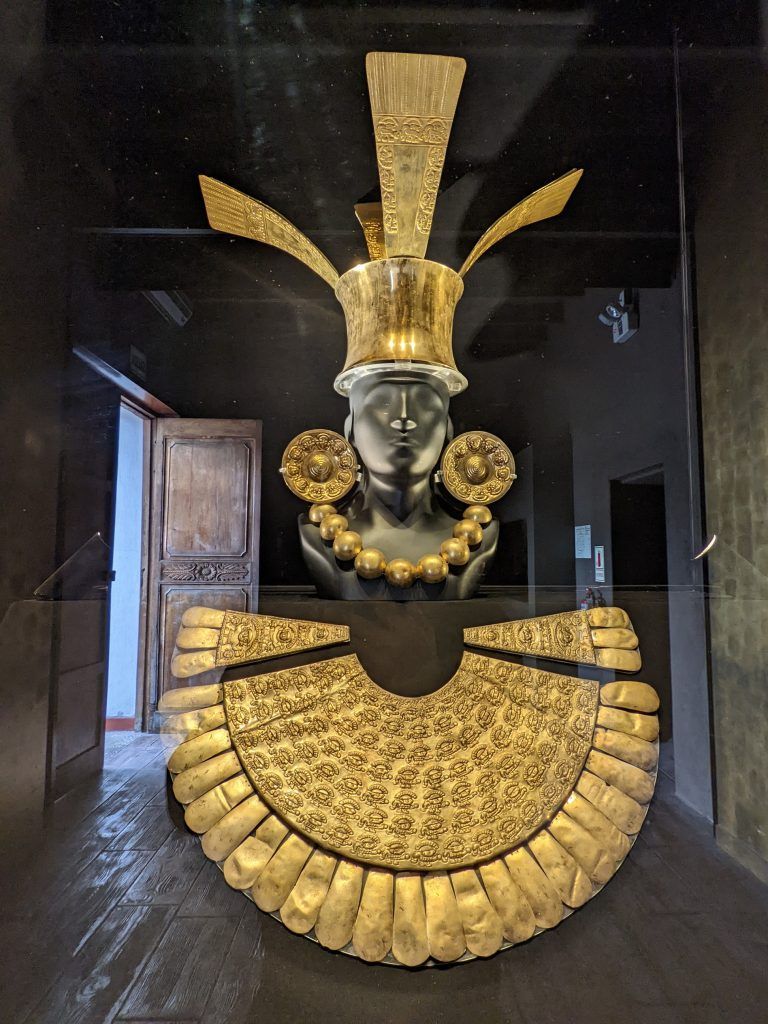
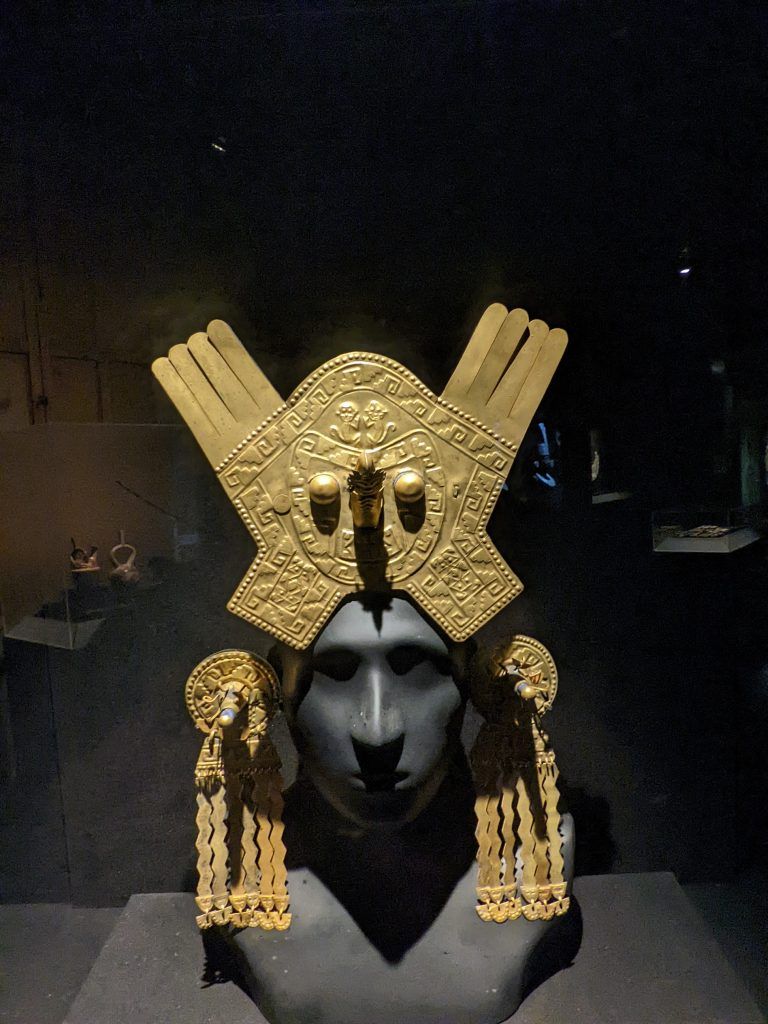
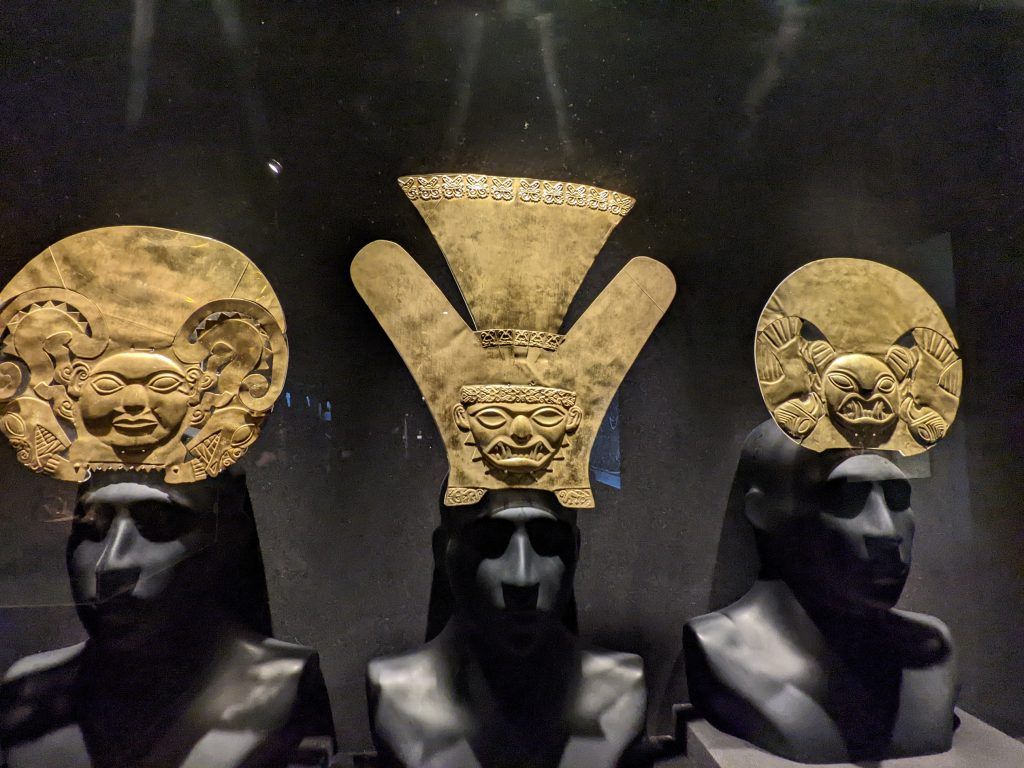
Finally, they had a completely separate gallery of some unique erotic pottery these civilizations produced. These were important pieces representing the significance of fertility in their cultures. And, as you can see, they didn’t leave much to the imagination.
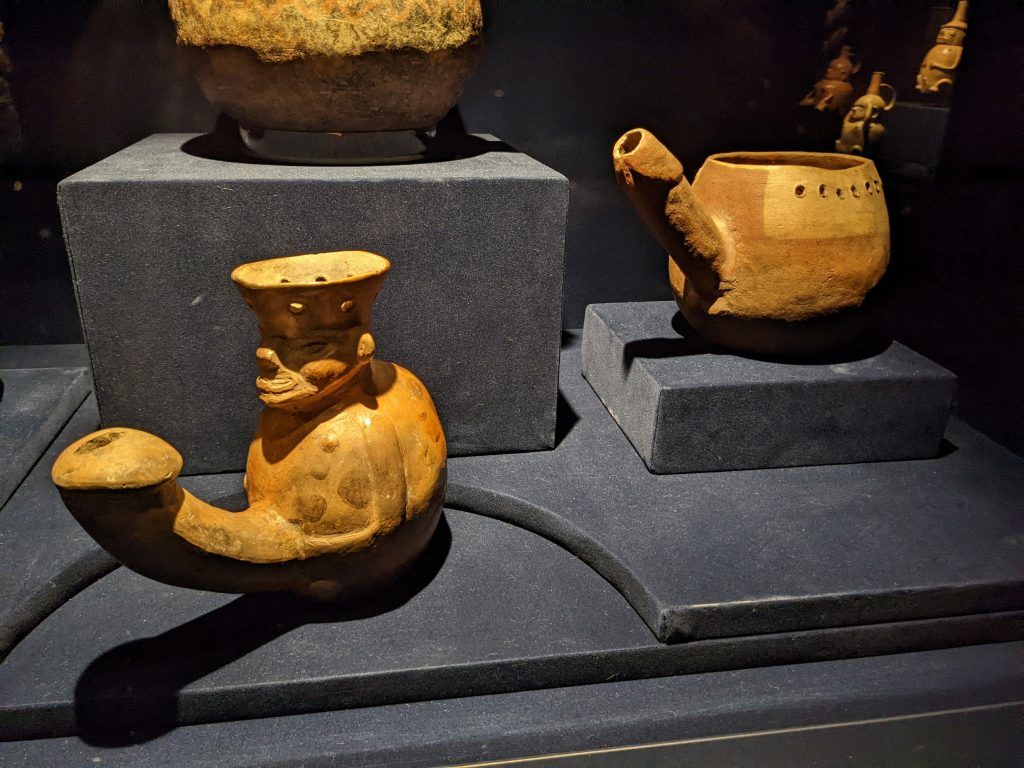
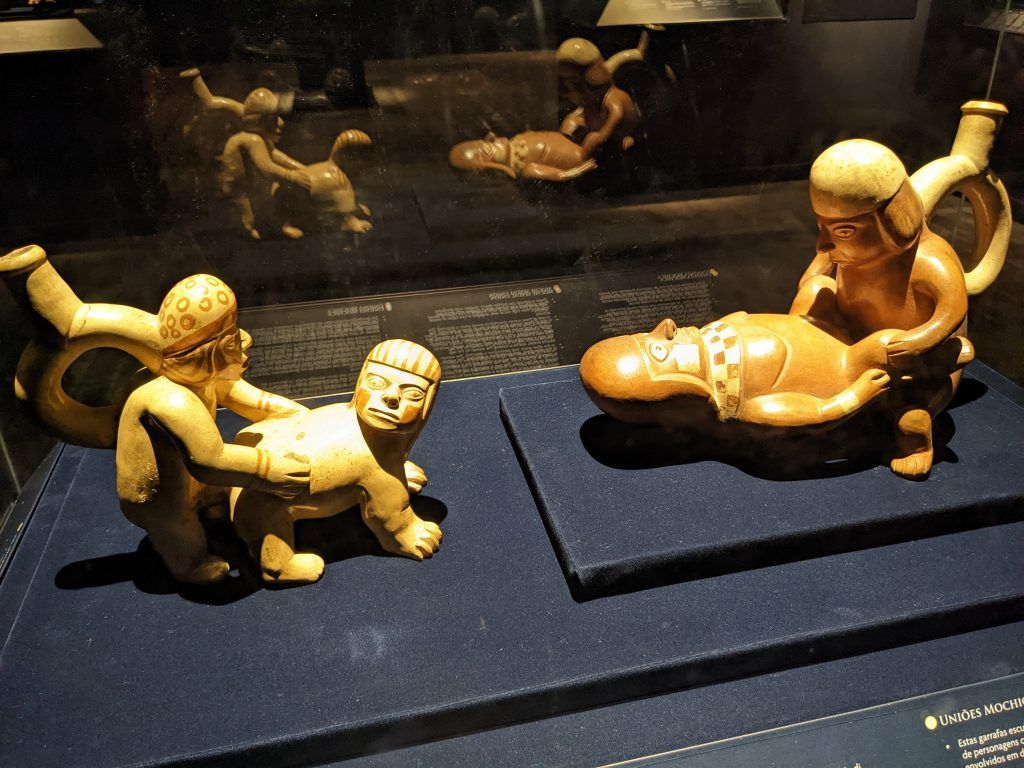
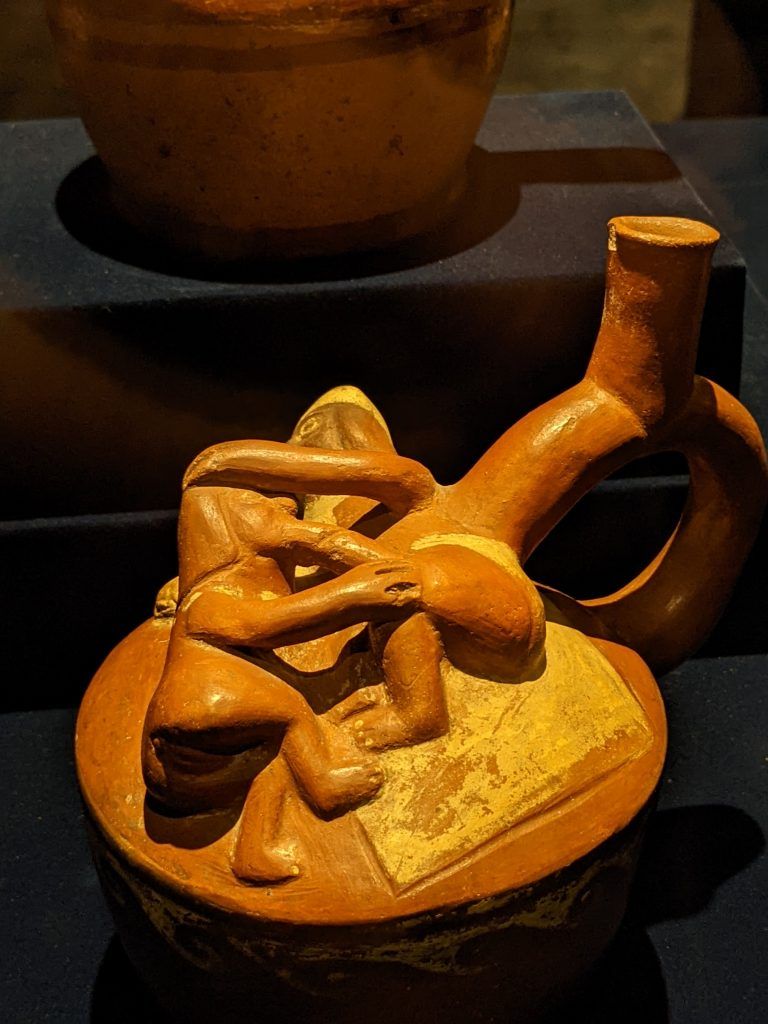
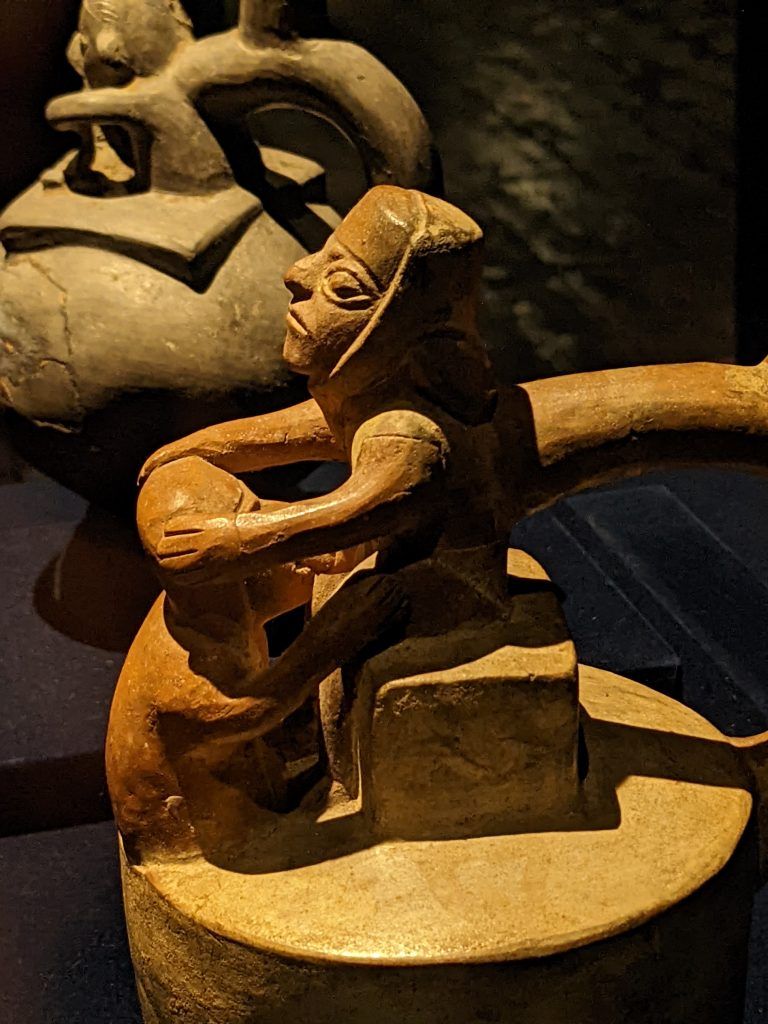
South American Soccer
I had a chance to see a Peruvian first division soccer match between AD Cantolao vs Sporting Cristal. It was a strange situation. Cristal is based outside of Lima. It’s owned by a big Peruvian brewery and is one of the richest clubs in Peru. Cantolao is technically based in Lima but doesn’t have a home stadium. So while Cantolao was the “home” team, the match was played in a tiny municipal stadium in the south of Lima before mostly Cristal fans. We had no idea where the Cantolao fans were. The match was fun, however. It was crisp and faced paced. It ended up in a 2-2 draw when a Cristal player missed an easy penalty kick as time expired in the match.
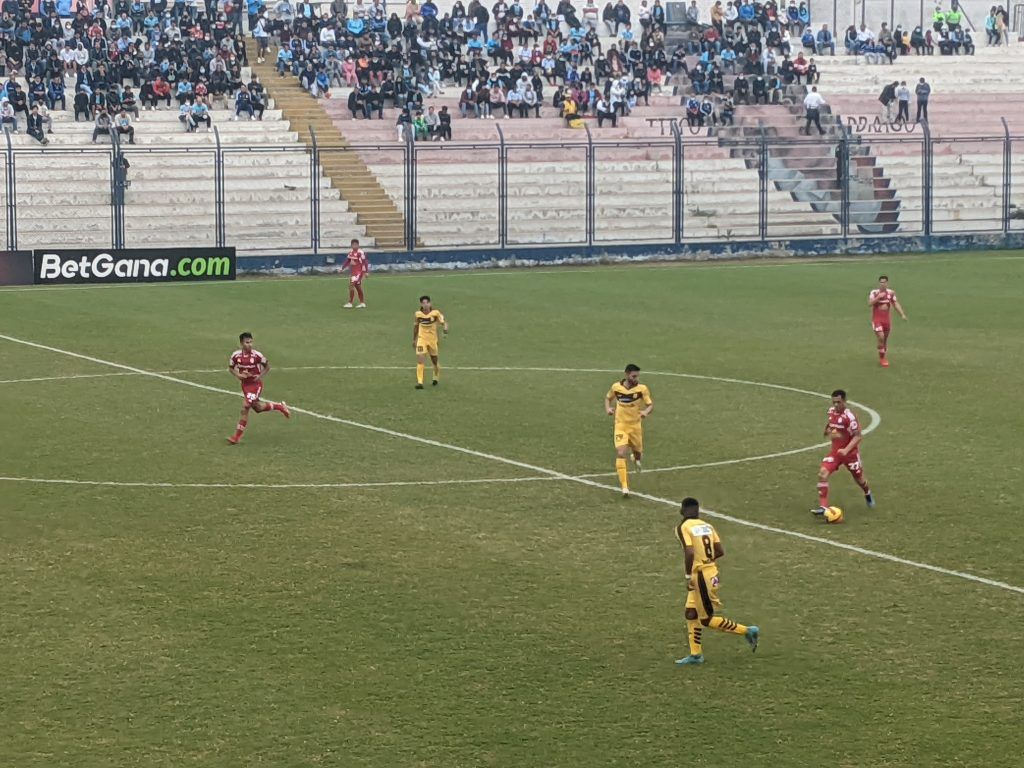
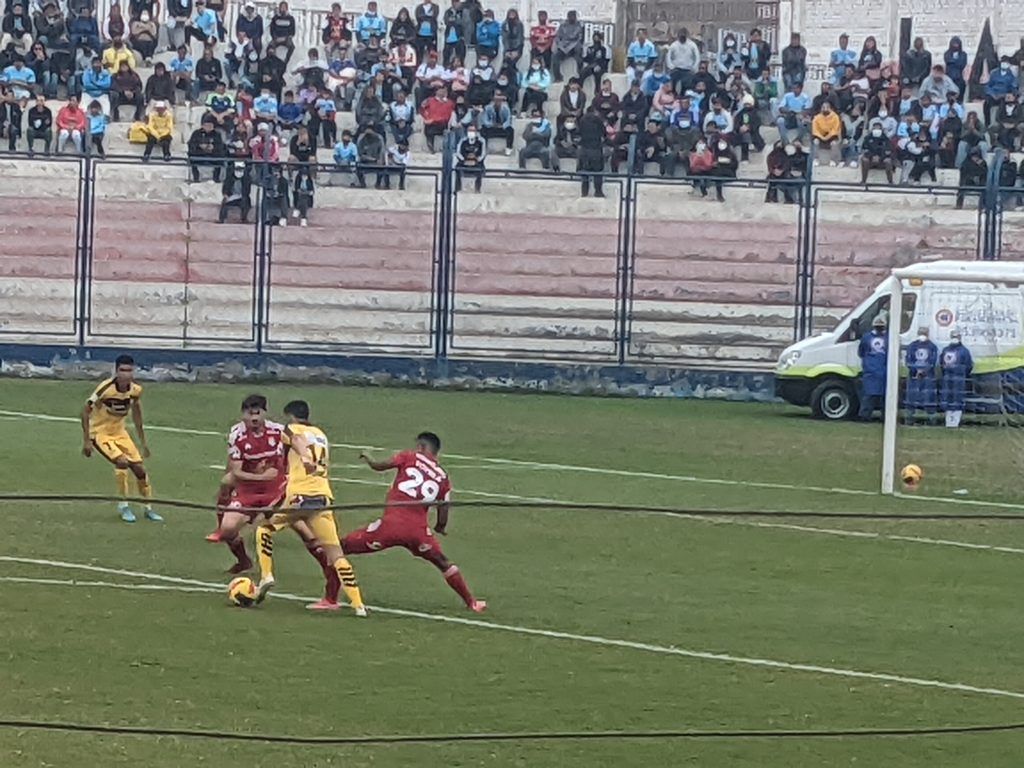
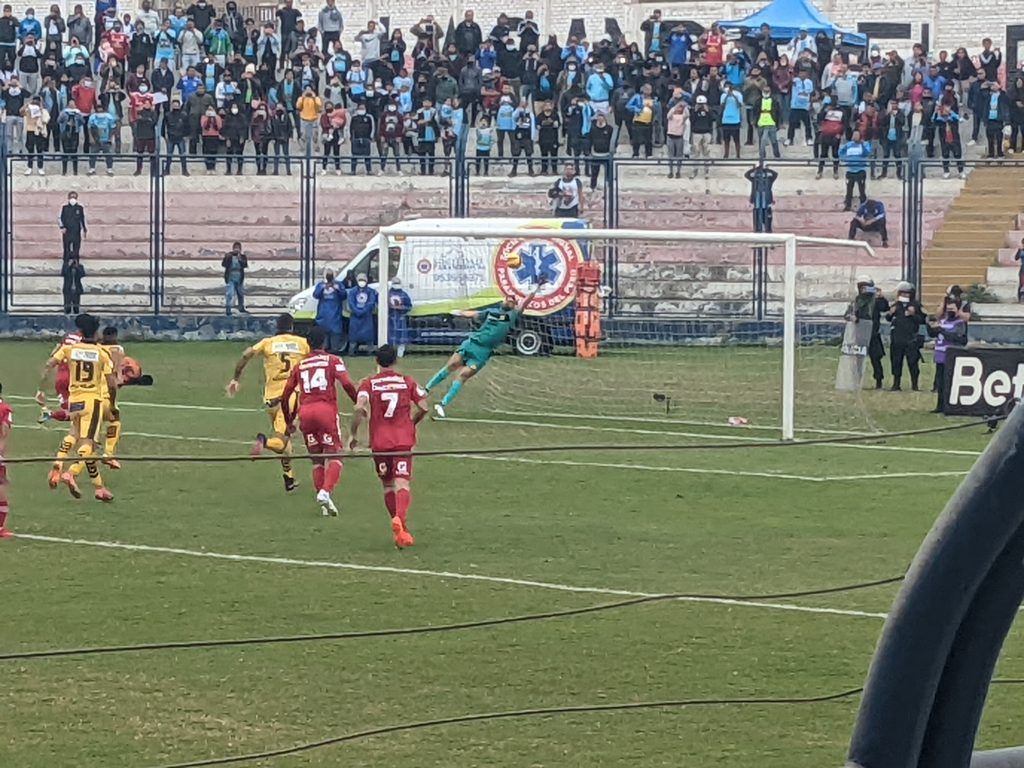
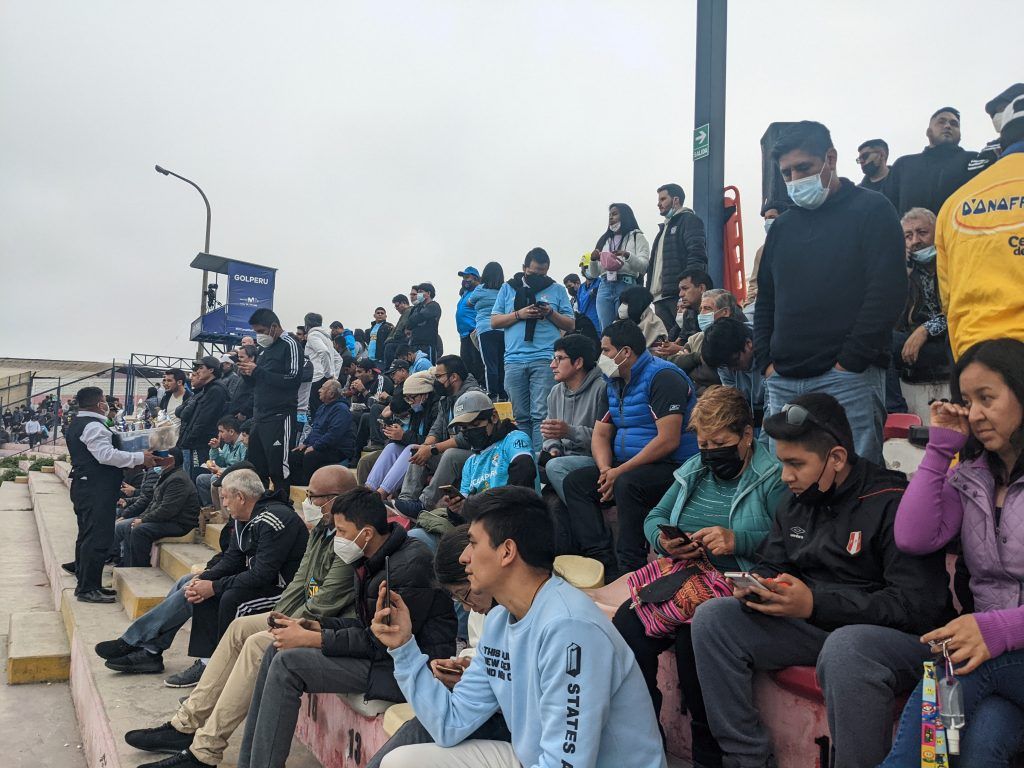
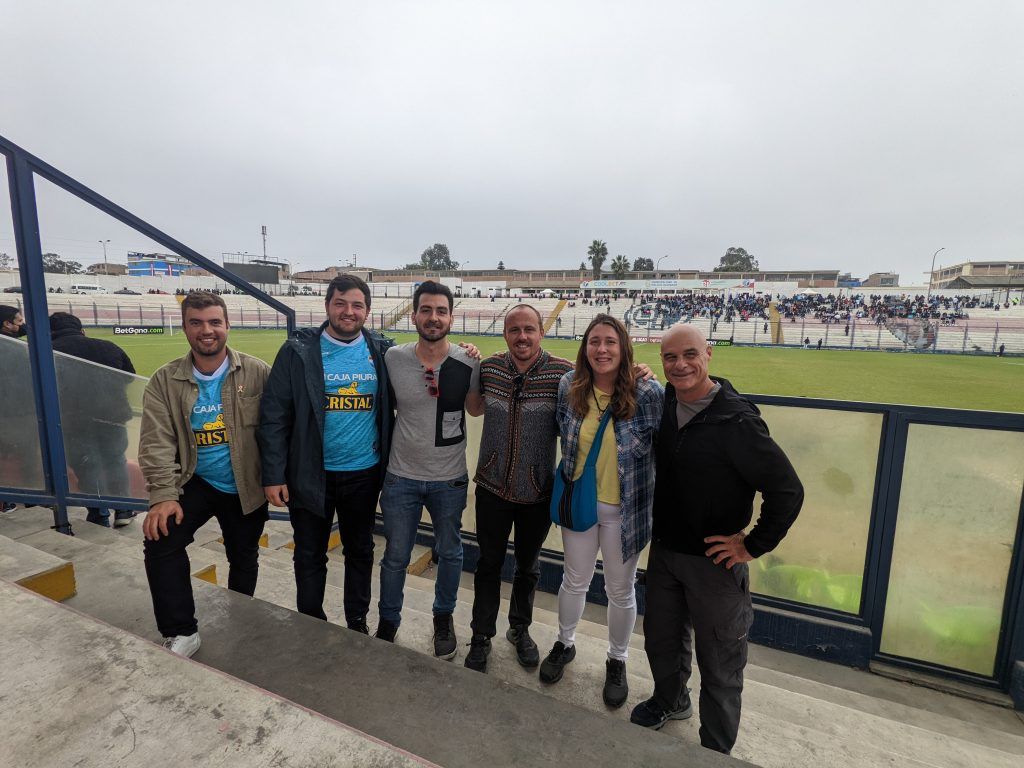
The next week we had a completely different experience. We went to the 80,000 seat Estadio Monumental to see the home team, Universitario, play Binacional. Estadio Monumental is actually the largest stadium in South America. There were only about 30,000 fans at the match we went to, but the core fan section behind the goal to our left was singing the whole match and provided a great, loud atmosphere. Especially since the home team won 2-0 in a typically chippy South American match with a lot of yellow cards and one red card against Universitario where they had to go down to 10 men.
